Quick filters:
7th century bc Stock Photos and Images
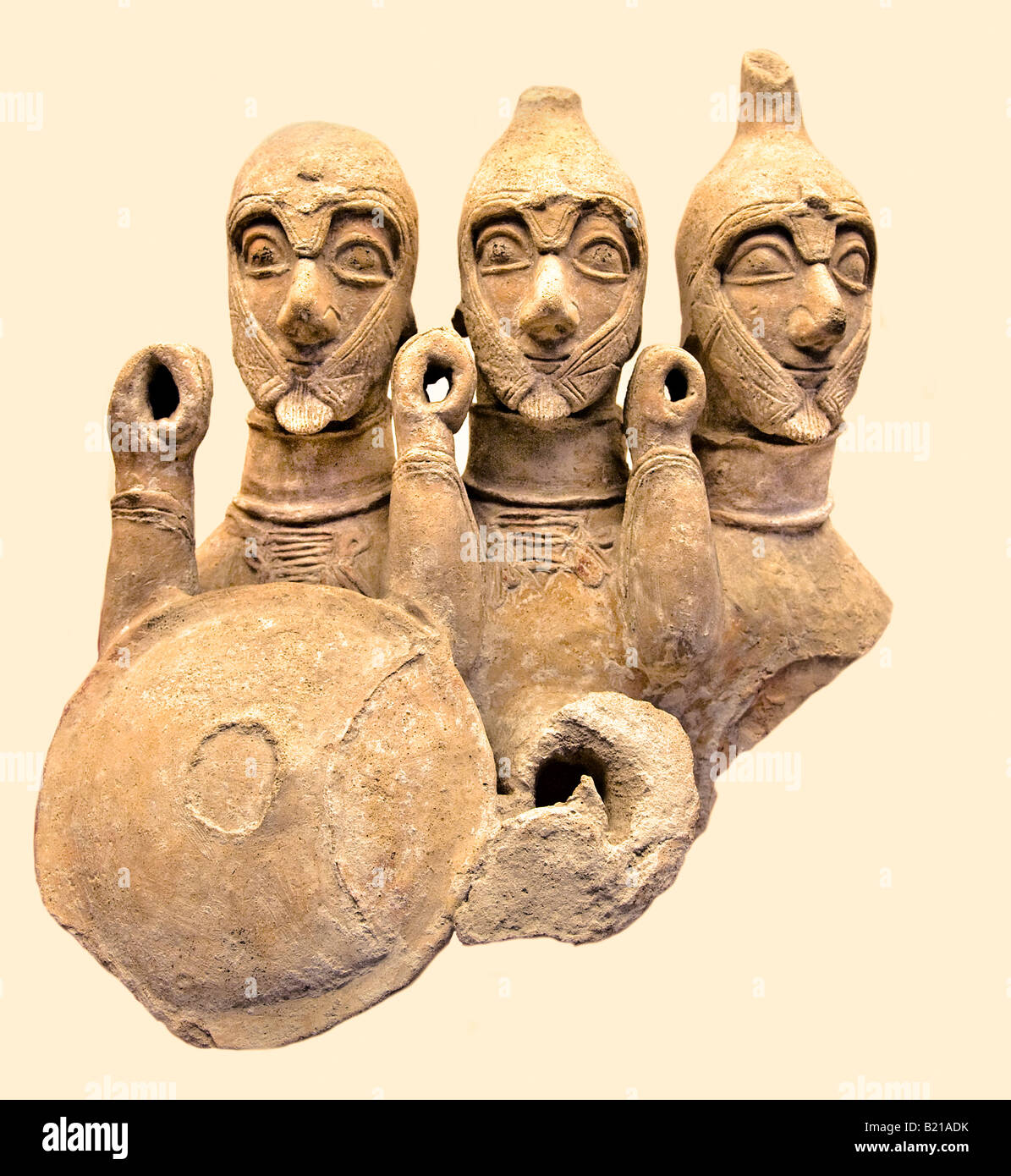 Three bodied warrior Cyprus 7th century BC Pyrga Stock Photohttps://www.alamy.com/image-license-details/?v=1https://www.alamy.com/stock-photo-three-bodied-warrior-cyprus-7th-century-bc-pyrga-18469855.html
Three bodied warrior Cyprus 7th century BC Pyrga Stock Photohttps://www.alamy.com/image-license-details/?v=1https://www.alamy.com/stock-photo-three-bodied-warrior-cyprus-7th-century-bc-pyrga-18469855.htmlRMB21ADK–Three bodied warrior Cyprus 7th century BC Pyrga
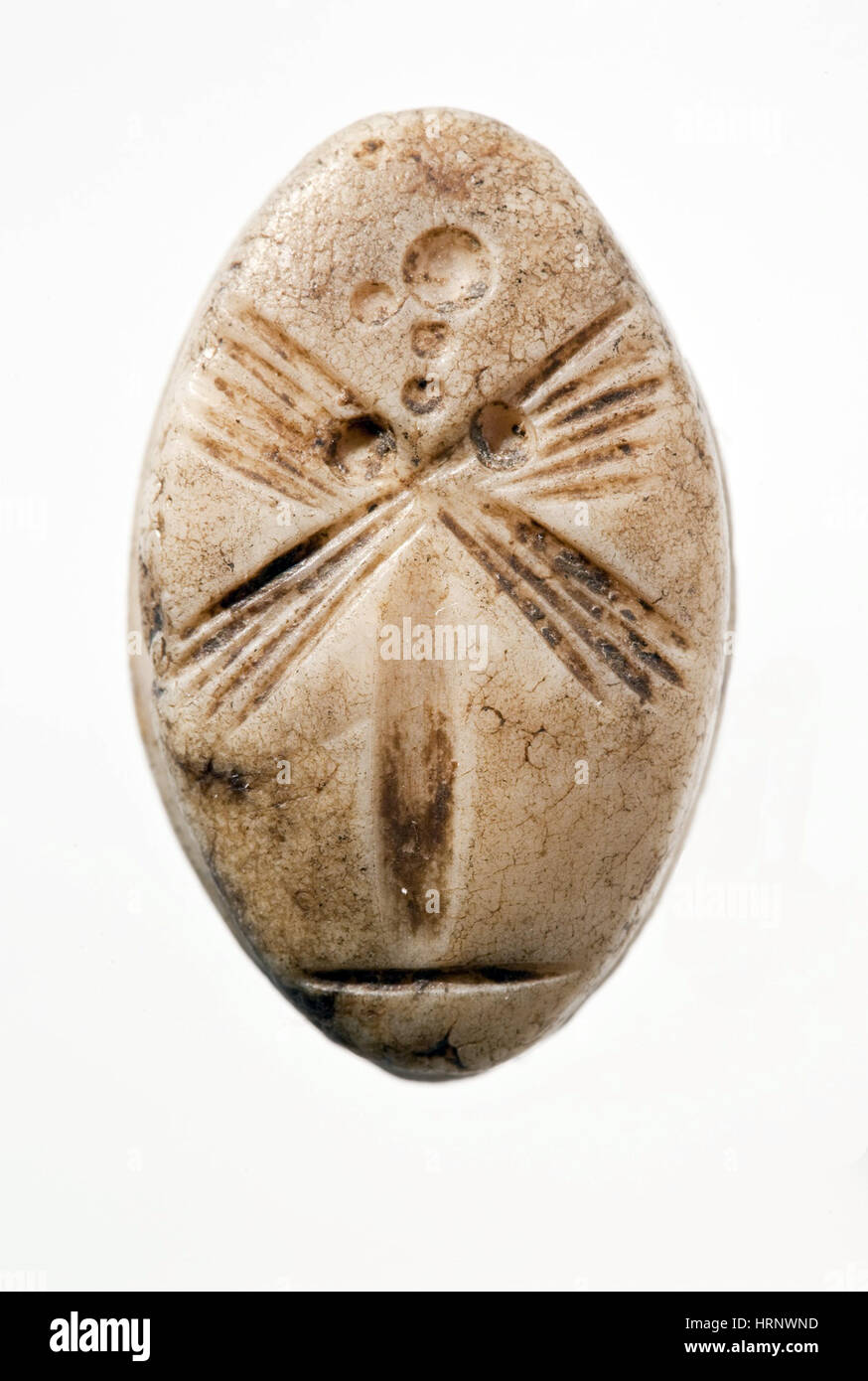 Marble Stamp Seal, 8th-7th Century BC Stock Photohttps://www.alamy.com/image-license-details/?v=1https://www.alamy.com/stock-photo-marble-stamp-seal-8th-7th-century-bc-135090857.html
Marble Stamp Seal, 8th-7th Century BC Stock Photohttps://www.alamy.com/image-license-details/?v=1https://www.alamy.com/stock-photo-marble-stamp-seal-8th-7th-century-bc-135090857.htmlRMHRNWND–Marble Stamp Seal, 8th-7th Century BC
 The Epic of Gilgamesh. Neo-Assyrian clay tablet. Epic of Gilgamesh, Tablet 11: Story of the Flood. Known as the 'Flood Tablet'. 7th century BC. Stock Photohttps://www.alamy.com/image-license-details/?v=1https://www.alamy.com/the-epic-of-gilgamesh-neo-assyrian-clay-tablet-epic-of-gilgamesh-tablet-11-story-of-the-flood-known-as-the-flood-tablet-7th-century-bc-image607560204.html
The Epic of Gilgamesh. Neo-Assyrian clay tablet. Epic of Gilgamesh, Tablet 11: Story of the Flood. Known as the 'Flood Tablet'. 7th century BC. Stock Photohttps://www.alamy.com/image-license-details/?v=1https://www.alamy.com/the-epic-of-gilgamesh-neo-assyrian-clay-tablet-epic-of-gilgamesh-tablet-11-story-of-the-flood-known-as-the-flood-tablet-7th-century-bc-image607560204.htmlRM2X8CN6M–The Epic of Gilgamesh. Neo-Assyrian clay tablet. Epic of Gilgamesh, Tablet 11: Story of the Flood. Known as the 'Flood Tablet'. 7th century BC.
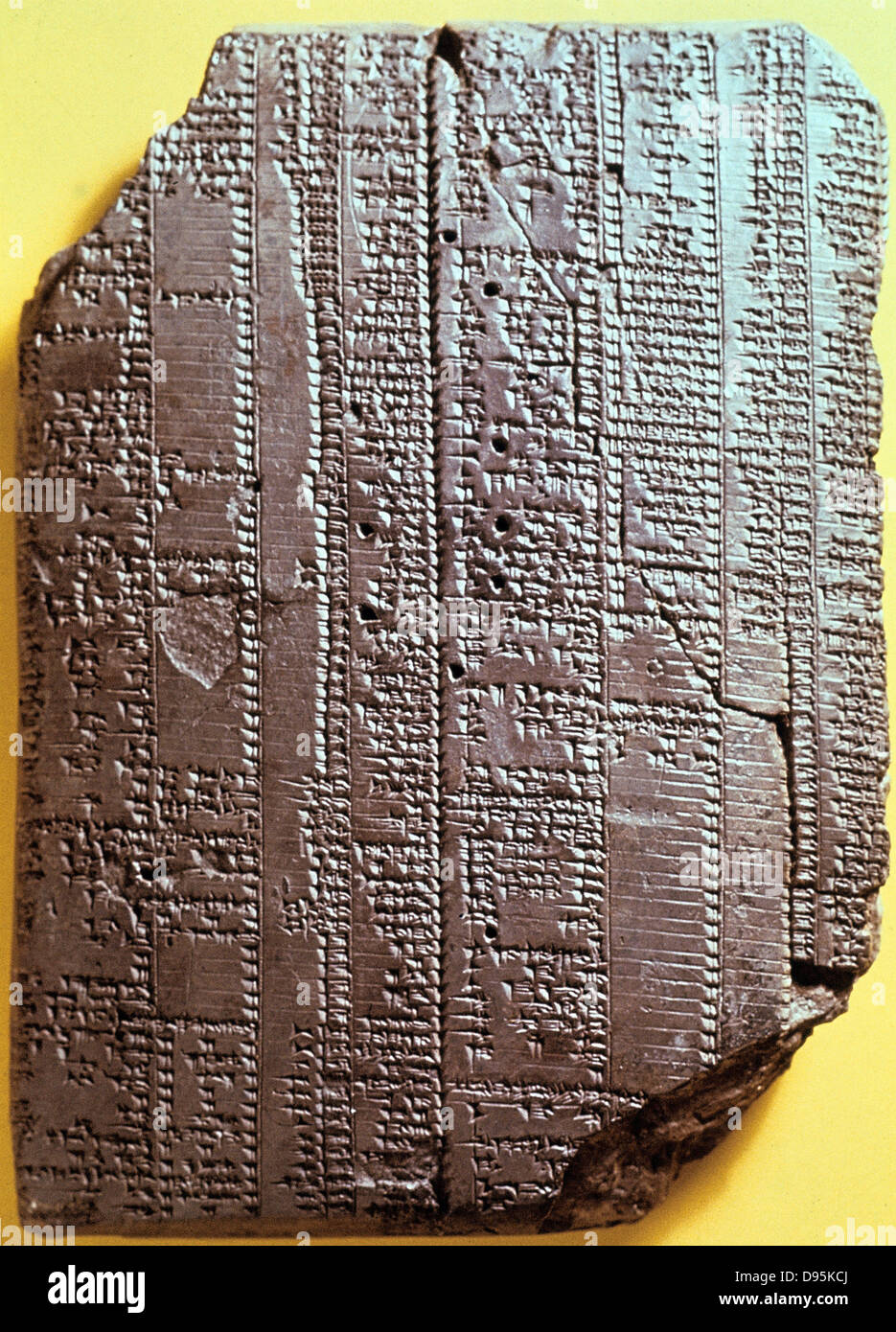 Babylonian clay tablet with text. 7th century BC. Table with syllabary. Stock Photohttps://www.alamy.com/image-license-details/?v=1https://www.alamy.com/stock-photo-babylonian-clay-tablet-with-text-7th-century-bc-table-with-syllabary-57288018.html
Babylonian clay tablet with text. 7th century BC. Table with syllabary. Stock Photohttps://www.alamy.com/image-license-details/?v=1https://www.alamy.com/stock-photo-babylonian-clay-tablet-with-text-7th-century-bc-table-with-syllabary-57288018.htmlRMD95KCJ–Babylonian clay tablet with text. 7th century BC. Table with syllabary.
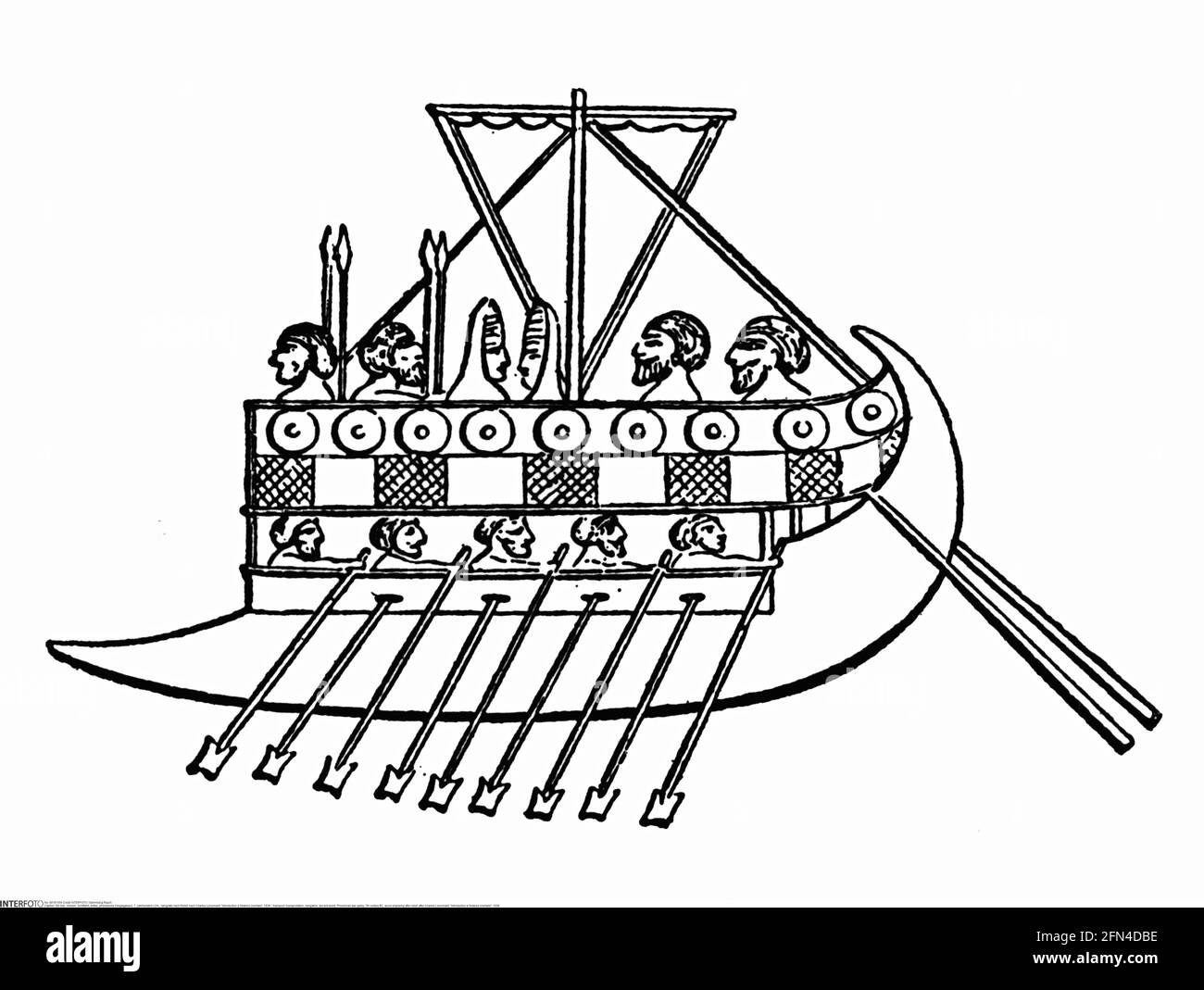 transport / transportation, navigation, ancient world, Phoenician war galley, 7th century BC, ADDITIONAL-RIGHTS-CLEARANCE-INFO-NOT-AVAILABLE Stock Photohttps://www.alamy.com/image-license-details/?v=1https://www.alamy.com/transport-transportation-navigation-ancient-world-phoenician-war-galley-7th-century-bc-additional-rights-clearance-info-not-available-image426054930.html
transport / transportation, navigation, ancient world, Phoenician war galley, 7th century BC, ADDITIONAL-RIGHTS-CLEARANCE-INFO-NOT-AVAILABLE Stock Photohttps://www.alamy.com/image-license-details/?v=1https://www.alamy.com/transport-transportation-navigation-ancient-world-phoenician-war-galley-7th-century-bc-additional-rights-clearance-info-not-available-image426054930.htmlRM2FN4DBE–transport / transportation, navigation, ancient world, Phoenician war galley, 7th century BC, ADDITIONAL-RIGHTS-CLEARANCE-INFO-NOT-AVAILABLE
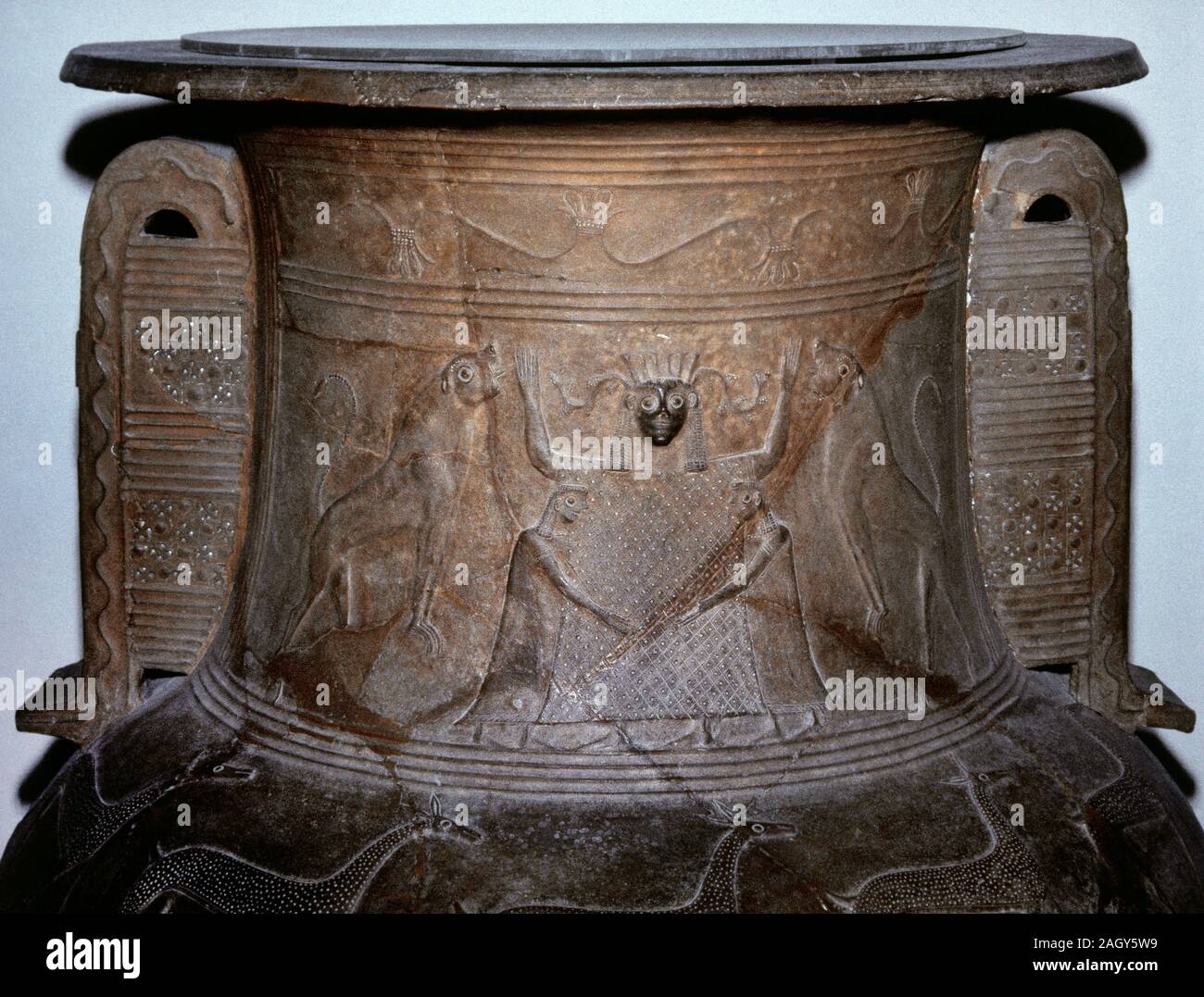 Cycladic relief. Pithos. Depiction of Potnia Theron, the Mistress of the Animals. Goddess of nature, crowned with flowers and shotts, flanked by two rampant lionesses and two submissive women. Second half 7th century BC. Island of Delos. National Archaeological Museum. Athens, Greece. Stock Photohttps://www.alamy.com/image-license-details/?v=1https://www.alamy.com/cycladic-relief-pithos-depiction-of-potnia-theron-the-mistress-of-the-animals-goddess-of-nature-crowned-with-flowers-and-shotts-flanked-by-two-rampant-lionesses-and-two-submissive-women-second-half-7th-century-bc-island-of-delos-national-archaeological-museum-athens-greece-image337428821.html
Cycladic relief. Pithos. Depiction of Potnia Theron, the Mistress of the Animals. Goddess of nature, crowned with flowers and shotts, flanked by two rampant lionesses and two submissive women. Second half 7th century BC. Island of Delos. National Archaeological Museum. Athens, Greece. Stock Photohttps://www.alamy.com/image-license-details/?v=1https://www.alamy.com/cycladic-relief-pithos-depiction-of-potnia-theron-the-mistress-of-the-animals-goddess-of-nature-crowned-with-flowers-and-shotts-flanked-by-two-rampant-lionesses-and-two-submissive-women-second-half-7th-century-bc-island-of-delos-national-archaeological-museum-athens-greece-image337428821.htmlRM2AGY5W9–Cycladic relief. Pithos. Depiction of Potnia Theron, the Mistress of the Animals. Goddess of nature, crowned with flowers and shotts, flanked by two rampant lionesses and two submissive women. Second half 7th century BC. Island of Delos. National Archaeological Museum. Athens, Greece.
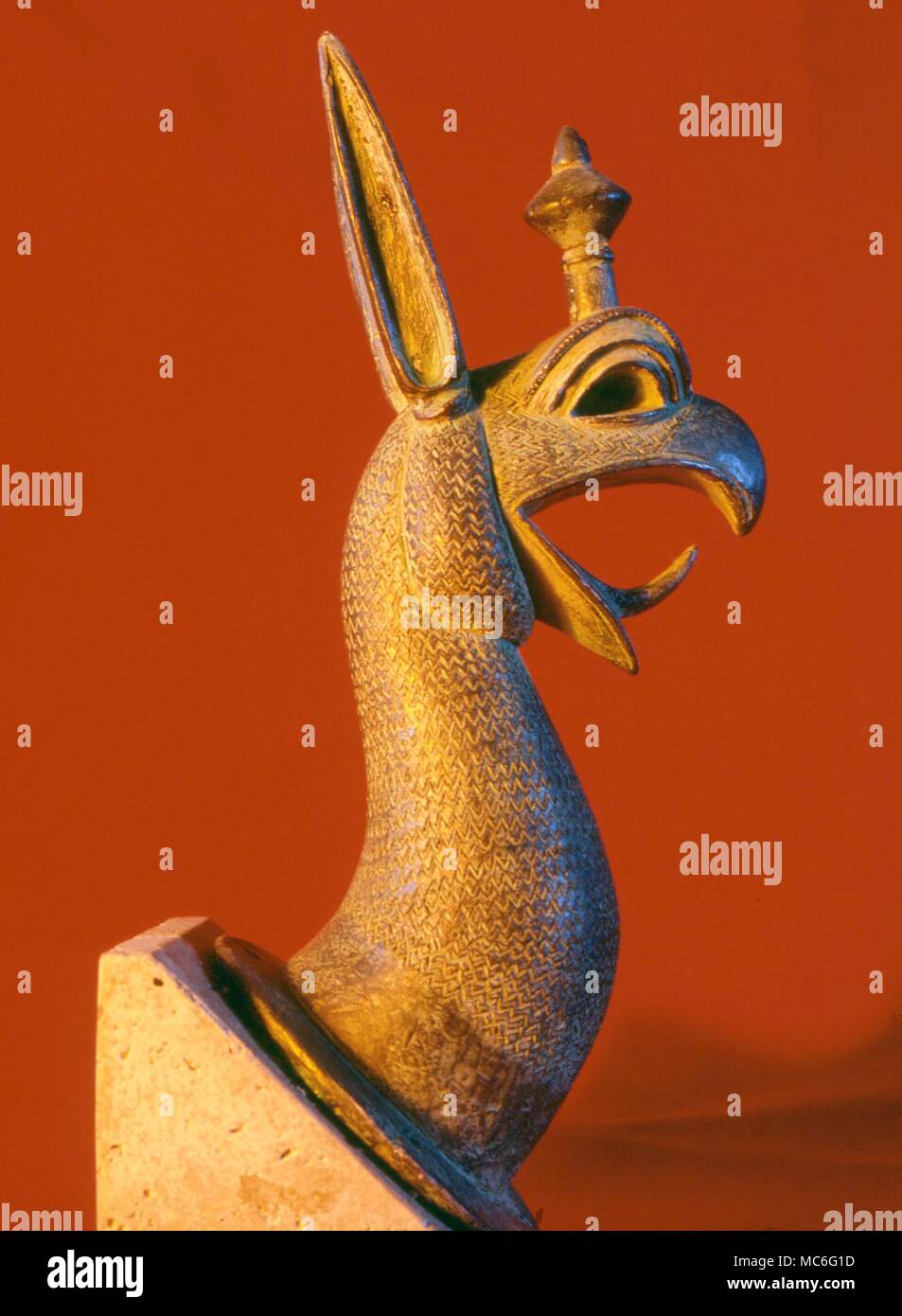 Head of a griffin, based on a 7th century BC Greek original, which formed part of a votive tripod, now in the Museum at Olympia. Stock Photohttps://www.alamy.com/image-license-details/?v=1https://www.alamy.com/head-of-a-griffin-based-on-a-7th-century-bc-greek-original-which-formed-part-of-a-votive-tripod-now-in-the-museum-at-olympia-image179623849.html
Head of a griffin, based on a 7th century BC Greek original, which formed part of a votive tripod, now in the Museum at Olympia. Stock Photohttps://www.alamy.com/image-license-details/?v=1https://www.alamy.com/head-of-a-griffin-based-on-a-7th-century-bc-greek-original-which-formed-part-of-a-votive-tripod-now-in-the-museum-at-olympia-image179623849.htmlRMMC6G1D–Head of a griffin, based on a 7th century BC Greek original, which formed part of a votive tripod, now in the Museum at Olympia.
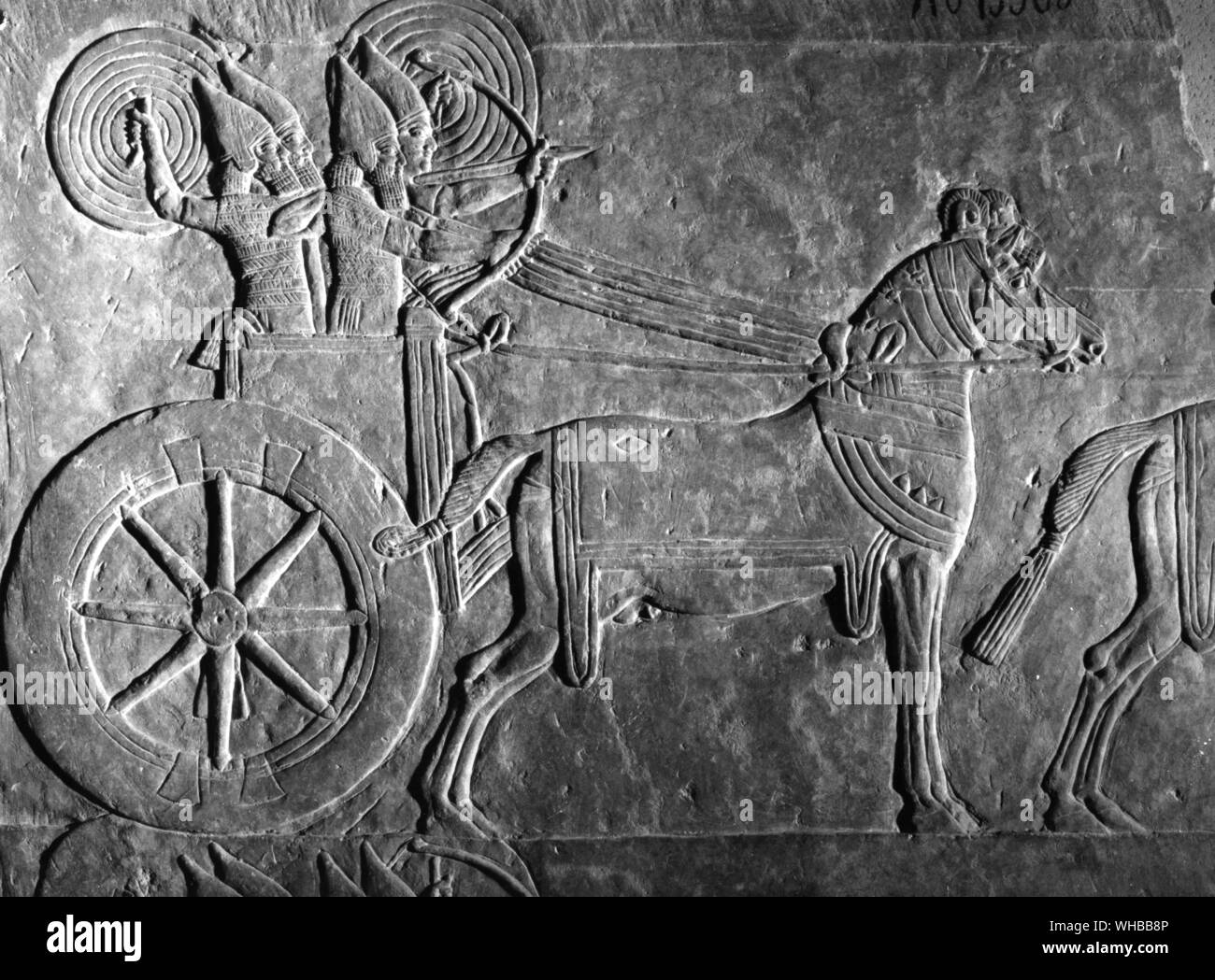 Assyrian relief from the Palace of Ashurbanipal : Mesopotamian chariot , 7th Century BC Stock Photohttps://www.alamy.com/image-license-details/?v=1https://www.alamy.com/assyrian-relief-from-the-palace-of-ashurbanipal-mesopotamian-chariot-7th-century-bc-image268855014.html
Assyrian relief from the Palace of Ashurbanipal : Mesopotamian chariot , 7th Century BC Stock Photohttps://www.alamy.com/image-license-details/?v=1https://www.alamy.com/assyrian-relief-from-the-palace-of-ashurbanipal-mesopotamian-chariot-7th-century-bc-image268855014.htmlRMWHBB8P–Assyrian relief from the Palace of Ashurbanipal : Mesopotamian chariot , 7th Century BC
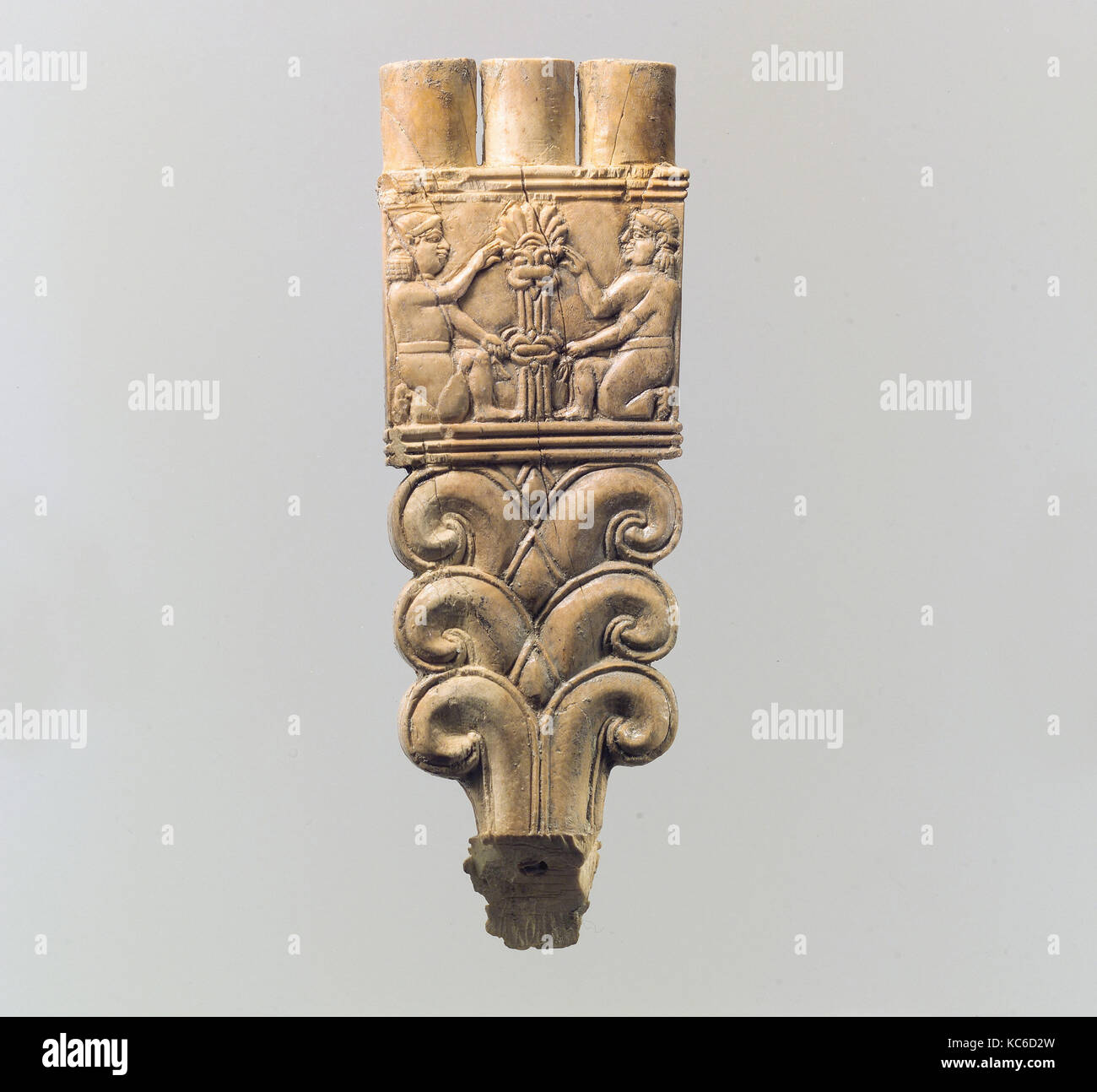 Handle of a flywhisk or fan, ca. 8th–7th century BC Stock Photohttps://www.alamy.com/image-license-details/?v=1https://www.alamy.com/stock-image-handle-of-a-flywhisk-or-fan-ca-8th7th-century-bc-162411169.html
Handle of a flywhisk or fan, ca. 8th–7th century BC Stock Photohttps://www.alamy.com/image-license-details/?v=1https://www.alamy.com/stock-image-handle-of-a-flywhisk-or-fan-ca-8th7th-century-bc-162411169.htmlRMKC6D2W–Handle of a flywhisk or fan, ca. 8th–7th century BC
 Sphinx/siren. Sandstone 7th century BC. Necropolis of Villaricos, Almanzora, Almeria, Spain. Phoenician. Stock Photohttps://www.alamy.com/image-license-details/?v=1https://www.alamy.com/stock-photo-sphinxsiren-sandstone-7th-century-bc-necropolis-of-villaricos-almanzora-131056340.html
Sphinx/siren. Sandstone 7th century BC. Necropolis of Villaricos, Almanzora, Almeria, Spain. Phoenician. Stock Photohttps://www.alamy.com/image-license-details/?v=1https://www.alamy.com/stock-photo-sphinxsiren-sandstone-7th-century-bc-necropolis-of-villaricos-almanzora-131056340.htmlRMHH63KG–Sphinx/siren. Sandstone 7th century BC. Necropolis of Villaricos, Almanzora, Almeria, Spain. Phoenician.
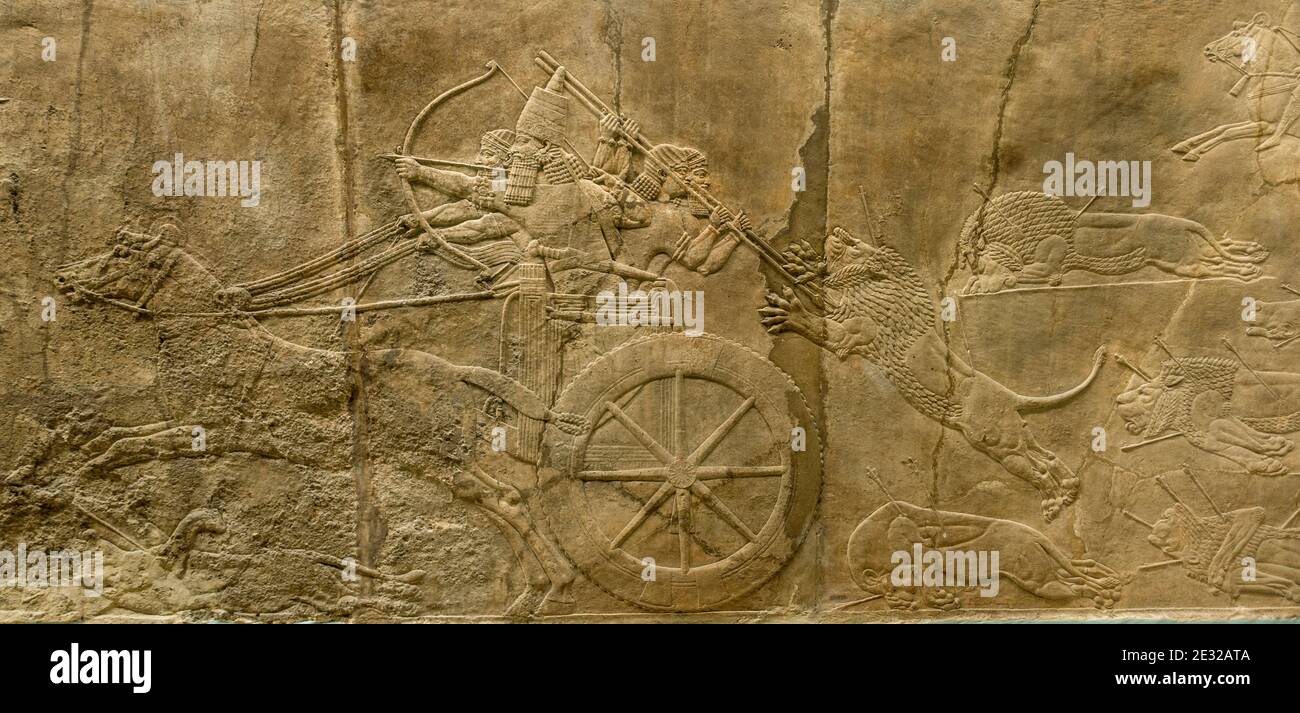 Ashurbanipal II's lion-hunt scene. 7th century BC. From the North Palace at Nineveh, now in the British Museum, London, UKcivilisation Stock Photohttps://www.alamy.com/image-license-details/?v=1https://www.alamy.com/ashurbanipal-iis-lion-hunt-scene-7th-century-bc-from-the-north-palace-at-nineveh-now-in-the-british-museum-london-ukcivilisation-image397734858.html
Ashurbanipal II's lion-hunt scene. 7th century BC. From the North Palace at Nineveh, now in the British Museum, London, UKcivilisation Stock Photohttps://www.alamy.com/image-license-details/?v=1https://www.alamy.com/ashurbanipal-iis-lion-hunt-scene-7th-century-bc-from-the-north-palace-at-nineveh-now-in-the-british-museum-london-ukcivilisation-image397734858.htmlRM2E32ATA–Ashurbanipal II's lion-hunt scene. 7th century BC. From the North Palace at Nineveh, now in the British Museum, London, UKcivilisation
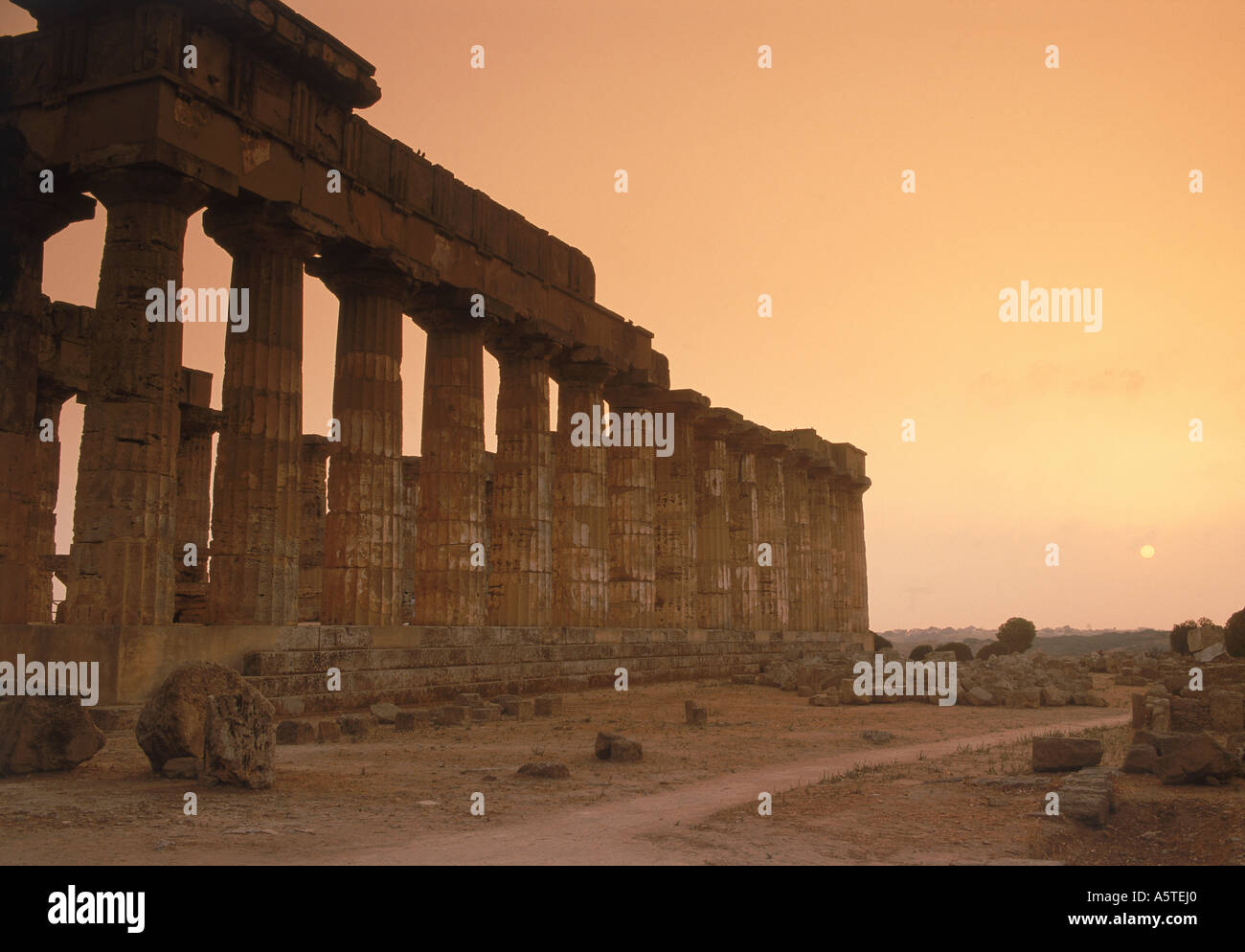 Ruins of Greek temple from 7th Century BC at Selinunte in Trapani Province on Sicily Stock Photohttps://www.alamy.com/image-license-details/?v=1https://www.alamy.com/ruins-of-greek-temple-from-7th-century-bc-at-selinunte-in-trapani-image6504095.html
Ruins of Greek temple from 7th Century BC at Selinunte in Trapani Province on Sicily Stock Photohttps://www.alamy.com/image-license-details/?v=1https://www.alamy.com/ruins-of-greek-temple-from-7th-century-bc-at-selinunte-in-trapani-image6504095.htmlRMA5TEJ0–Ruins of Greek temple from 7th Century BC at Selinunte in Trapani Province on Sicily
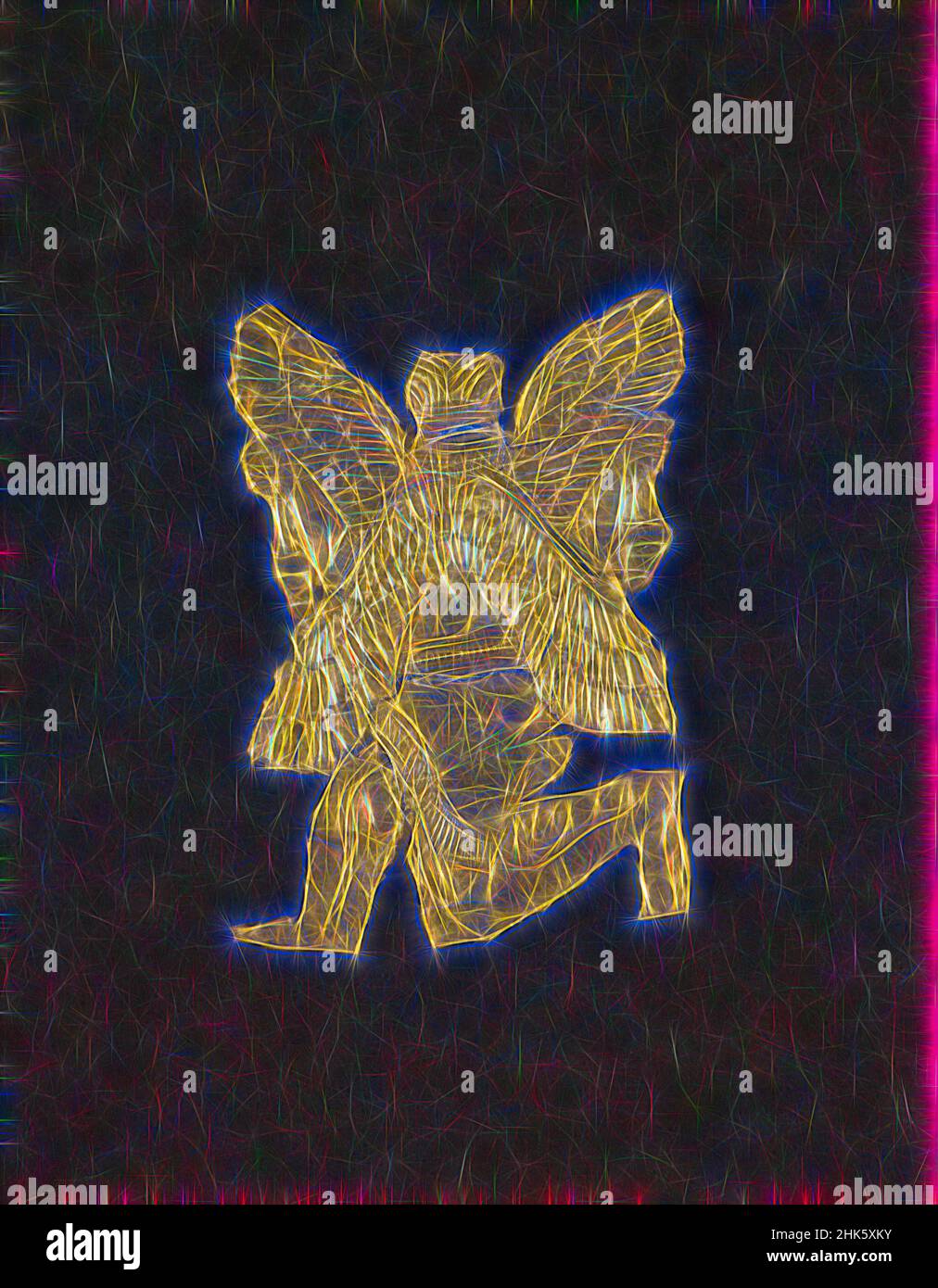 Inspired by Appliqué in the Form of a Winged Genie, Near Eastern, Mesopotamian, Assyrian, Neo-Assyrian period, 883–612 BC, 7th century BC, Gold, Ziwiye, Kurdistan province, Iran, Asia, Sculpture, 1 11/16 in. (4.3 cm, Reimagined by Artotop. Classic art reinvented with a modern twist. Design of warm cheerful glowing of brightness and light ray radiance. Photography inspired by surrealism and futurism, embracing dynamic energy of modern technology, movement, speed and revolutionize culture Stock Photohttps://www.alamy.com/image-license-details/?v=1https://www.alamy.com/inspired-by-appliqu-in-the-form-of-a-winged-genie-near-eastern-mesopotamian-assyrian-neo-assyrian-period-883612-bc-7th-century-bc-gold-ziwiye-kurdistan-province-iran-asia-sculpture-1-1116-in-43-cm-reimagined-by-artotop-classic-art-reinvented-with-a-modern-twist-design-of-warm-cheerful-glowing-of-brightness-and-light-ray-radiance-photography-inspired-by-surrealism-and-futurism-embracing-dynamic-energy-of-modern-technology-movement-speed-and-revolutionize-culture-image459278735.html
Inspired by Appliqué in the Form of a Winged Genie, Near Eastern, Mesopotamian, Assyrian, Neo-Assyrian period, 883–612 BC, 7th century BC, Gold, Ziwiye, Kurdistan province, Iran, Asia, Sculpture, 1 11/16 in. (4.3 cm, Reimagined by Artotop. Classic art reinvented with a modern twist. Design of warm cheerful glowing of brightness and light ray radiance. Photography inspired by surrealism and futurism, embracing dynamic energy of modern technology, movement, speed and revolutionize culture Stock Photohttps://www.alamy.com/image-license-details/?v=1https://www.alamy.com/inspired-by-appliqu-in-the-form-of-a-winged-genie-near-eastern-mesopotamian-assyrian-neo-assyrian-period-883612-bc-7th-century-bc-gold-ziwiye-kurdistan-province-iran-asia-sculpture-1-1116-in-43-cm-reimagined-by-artotop-classic-art-reinvented-with-a-modern-twist-design-of-warm-cheerful-glowing-of-brightness-and-light-ray-radiance-photography-inspired-by-surrealism-and-futurism-embracing-dynamic-energy-of-modern-technology-movement-speed-and-revolutionize-culture-image459278735.htmlRF2HK5XKY–Inspired by Appliqué in the Form of a Winged Genie, Near Eastern, Mesopotamian, Assyrian, Neo-Assyrian period, 883–612 BC, 7th century BC, Gold, Ziwiye, Kurdistan province, Iran, Asia, Sculpture, 1 11/16 in. (4.3 cm, Reimagined by Artotop. Classic art reinvented with a modern twist. Design of warm cheerful glowing of brightness and light ray radiance. Photography inspired by surrealism and futurism, embracing dynamic energy of modern technology, movement, speed and revolutionize culture
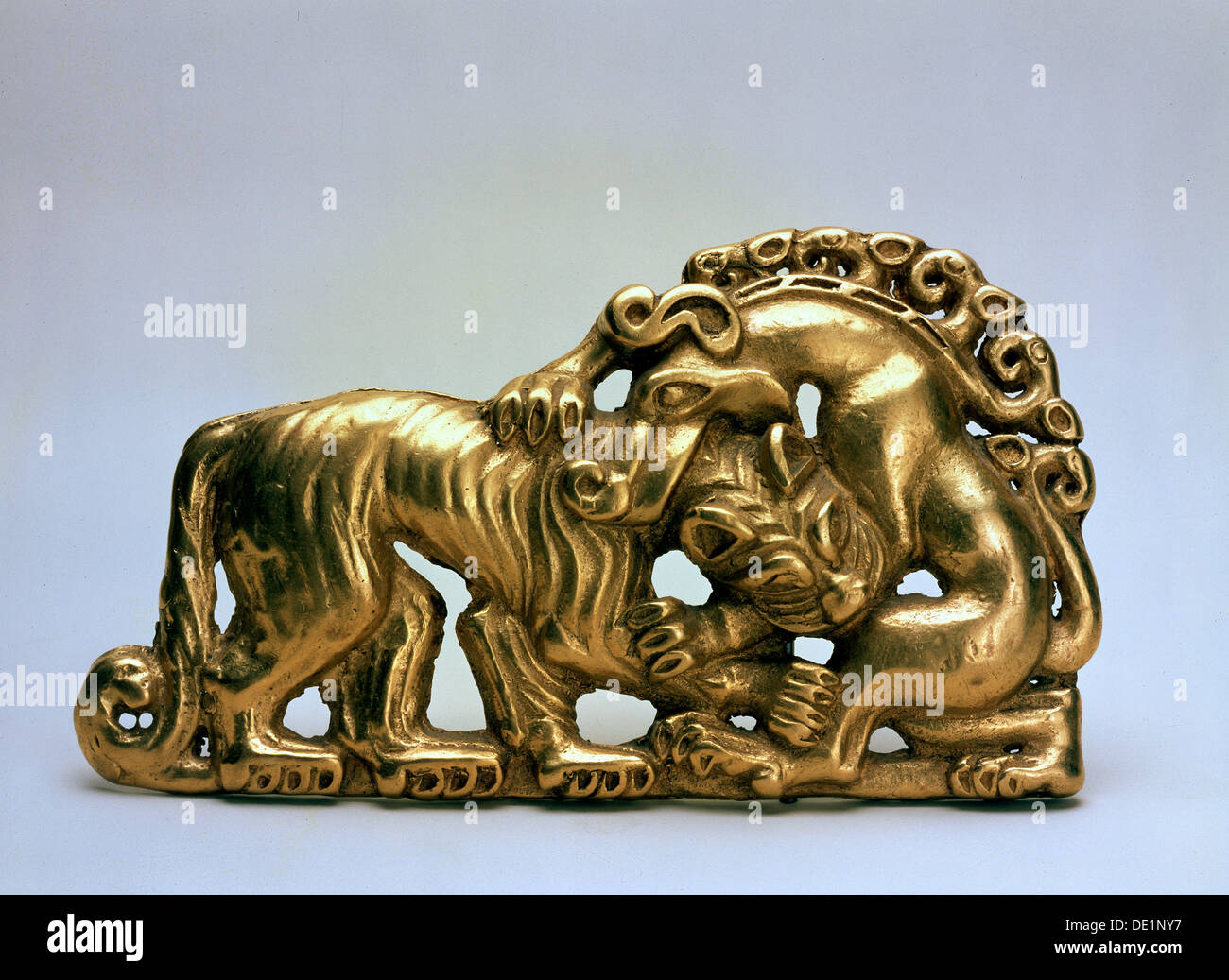 'Animals fighting' (Belt buckle), 7th century BC. Artist: Unknown Stock Photohttps://www.alamy.com/image-license-details/?v=1https://www.alamy.com/animals-fighting-belt-buckle-7th-century-bc-artist-unknown-image60275467.html
'Animals fighting' (Belt buckle), 7th century BC. Artist: Unknown Stock Photohttps://www.alamy.com/image-license-details/?v=1https://www.alamy.com/animals-fighting-belt-buckle-7th-century-bc-artist-unknown-image60275467.htmlRMDE1NY7–'Animals fighting' (Belt buckle), 7th century BC. Artist: Unknown
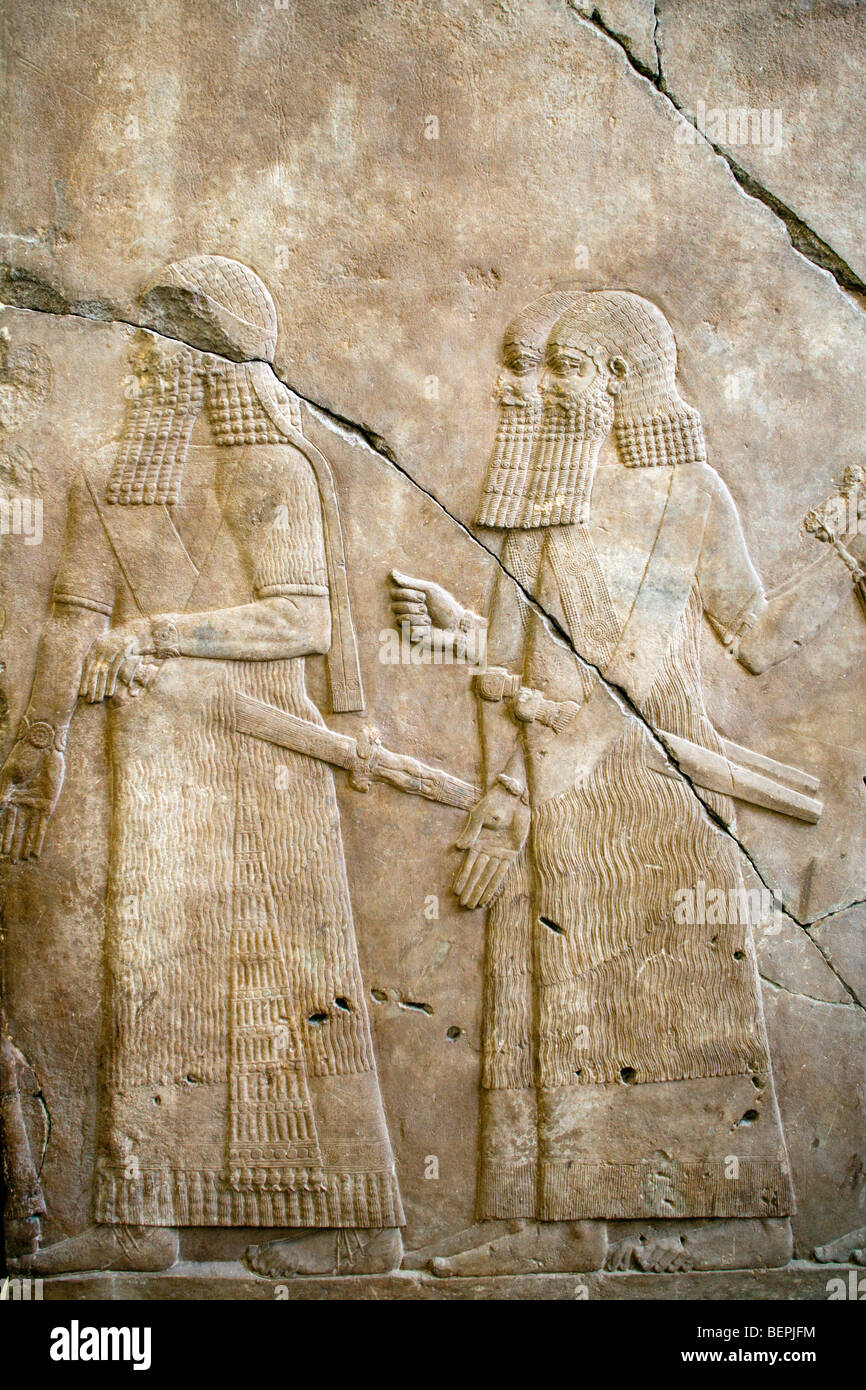 Assyrian bas-relief (8th-7th century BC), Pergamon Museum, Berlin, Germany Stock Photohttps://www.alamy.com/image-license-details/?v=1https://www.alamy.com/stock-photo-assyrian-bas-relief-8th-7th-century-bc-pergamon-museum-berlin-germany-26313048.html
Assyrian bas-relief (8th-7th century BC), Pergamon Museum, Berlin, Germany Stock Photohttps://www.alamy.com/image-license-details/?v=1https://www.alamy.com/stock-photo-assyrian-bas-relief-8th-7th-century-bc-pergamon-museum-berlin-germany-26313048.htmlRMBEPJFM–Assyrian bas-relief (8th-7th century BC), Pergamon Museum, Berlin, Germany
 Amon of Judah, c. 664 BC - c. 641 BC. 7th-century BC King of Judah. Stock Photohttps://www.alamy.com/image-license-details/?v=1https://www.alamy.com/stock-photo-amon-of-judah-c-664-bc-c-641-bc-7th-century-bc-king-of-judah-93051303.html
Amon of Judah, c. 664 BC - c. 641 BC. 7th-century BC King of Judah. Stock Photohttps://www.alamy.com/image-license-details/?v=1https://www.alamy.com/stock-photo-amon-of-judah-c-664-bc-c-641-bc-7th-century-bc-king-of-judah-93051303.htmlRMFBARTR–Amon of Judah, c. 664 BC - c. 641 BC. 7th-century BC King of Judah.
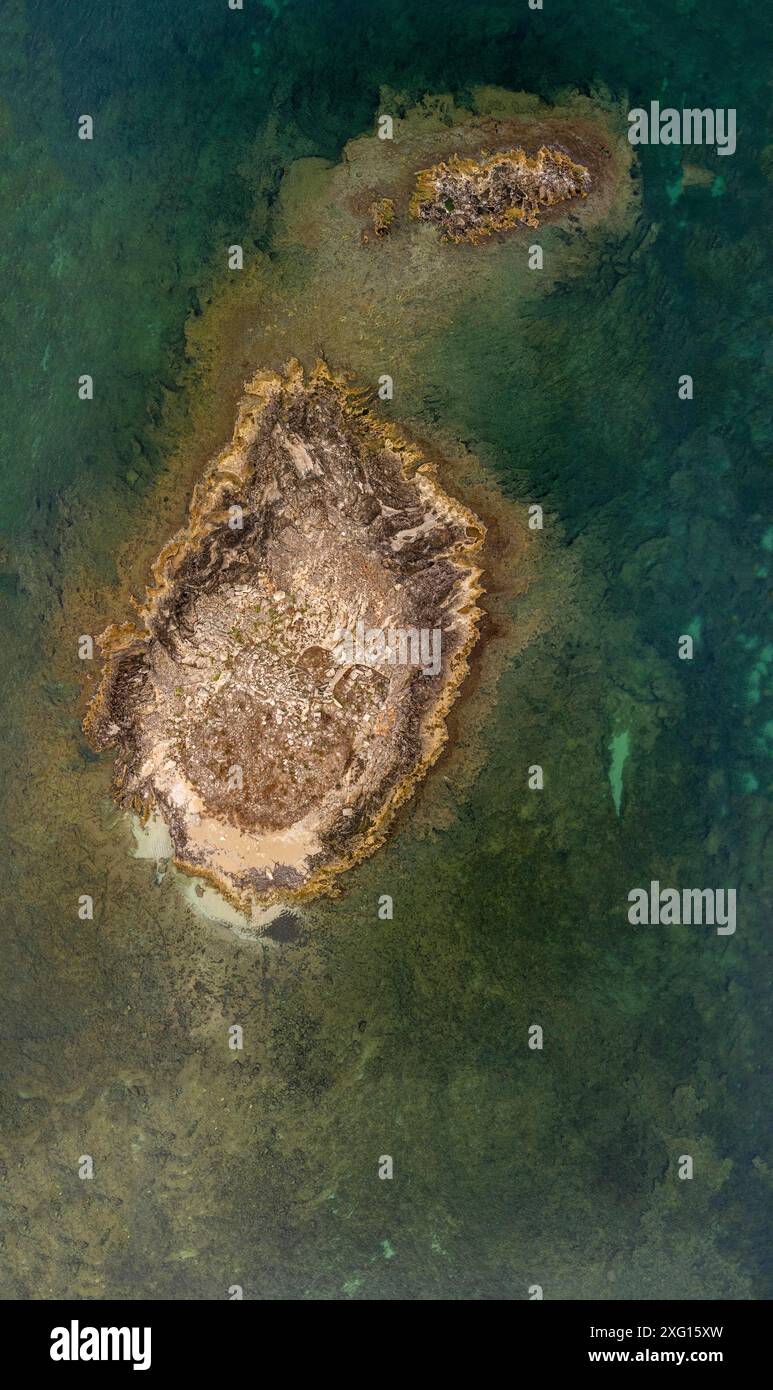 Illot des Porros, Talayotic necropolis, approximately 7th century BC. c, Son Real, Santa Margarita, Majorca, Balearic Islands, Spain Stock Photohttps://www.alamy.com/image-license-details/?v=1https://www.alamy.com/illot-des-porros-talayotic-necropolis-approximately-7th-century-bc-c-son-real-santa-margarita-majorca-balearic-islands-spain-image612224001.html
Illot des Porros, Talayotic necropolis, approximately 7th century BC. c, Son Real, Santa Margarita, Majorca, Balearic Islands, Spain Stock Photohttps://www.alamy.com/image-license-details/?v=1https://www.alamy.com/illot-des-porros-talayotic-necropolis-approximately-7th-century-bc-c-son-real-santa-margarita-majorca-balearic-islands-spain-image612224001.htmlRF2XG15XW–Illot des Porros, Talayotic necropolis, approximately 7th century BC. c, Son Real, Santa Margarita, Majorca, Balearic Islands, Spain
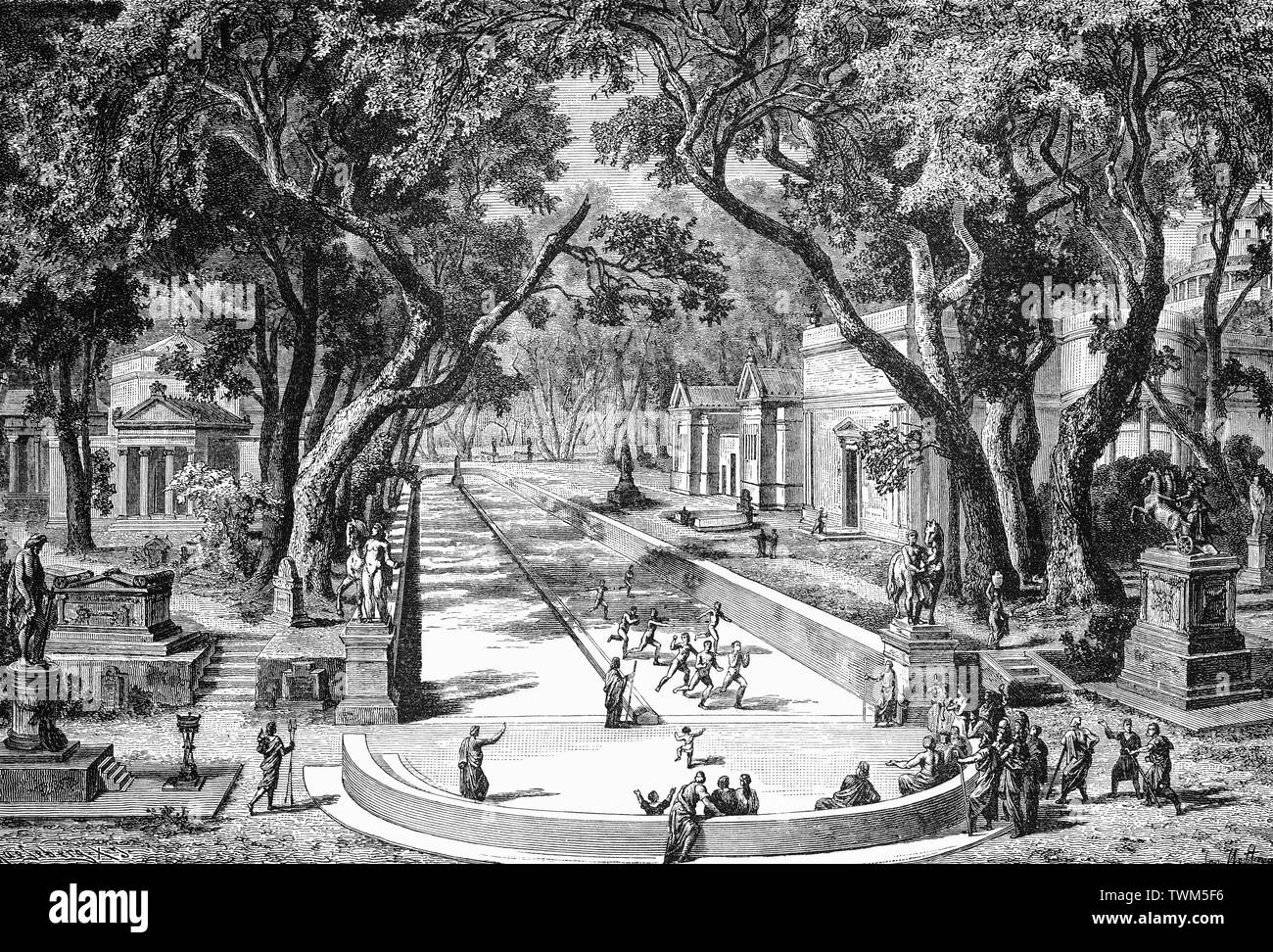 The Dromos of Sparta, a prominent city-state in ancient Greece on the banks of the Eurotas River in Laconia, in south-eastern Peloponnese. Around 650 BC, it rose to become the dominant military land-power in ancient Greece. The 5th century BCE Dromos, racecourse and gymnasia was a course for foot races where young Spartans were integrated into the city by offering sacrifices at the statue of Herakles when they reached adulthood. Stock Photohttps://www.alamy.com/image-license-details/?v=1https://www.alamy.com/the-dromos-of-sparta-a-prominent-city-state-in-ancient-greece-on-the-banks-of-the-eurotas-river-in-laconia-in-south-eastern-peloponnese-around-650-bc-it-rose-to-become-the-dominant-military-land-power-in-ancient-greece-the-5th-century-bce-dromos-racecourse-and-gymnasia-was-a-course-for-foot-races-where-young-spartans-were-integrated-into-the-city-by-offering-sacrifices-at-the-statue-of-herakles-when-they-reached-adulthood-image256754938.html
The Dromos of Sparta, a prominent city-state in ancient Greece on the banks of the Eurotas River in Laconia, in south-eastern Peloponnese. Around 650 BC, it rose to become the dominant military land-power in ancient Greece. The 5th century BCE Dromos, racecourse and gymnasia was a course for foot races where young Spartans were integrated into the city by offering sacrifices at the statue of Herakles when they reached adulthood. Stock Photohttps://www.alamy.com/image-license-details/?v=1https://www.alamy.com/the-dromos-of-sparta-a-prominent-city-state-in-ancient-greece-on-the-banks-of-the-eurotas-river-in-laconia-in-south-eastern-peloponnese-around-650-bc-it-rose-to-become-the-dominant-military-land-power-in-ancient-greece-the-5th-century-bce-dromos-racecourse-and-gymnasia-was-a-course-for-foot-races-where-young-spartans-were-integrated-into-the-city-by-offering-sacrifices-at-the-statue-of-herakles-when-they-reached-adulthood-image256754938.htmlRMTWM5F6–The Dromos of Sparta, a prominent city-state in ancient Greece on the banks of the Eurotas River in Laconia, in south-eastern Peloponnese. Around 650 BC, it rose to become the dominant military land-power in ancient Greece. The 5th century BCE Dromos, racecourse and gymnasia was a course for foot races where young Spartans were integrated into the city by offering sacrifices at the statue of Herakles when they reached adulthood.
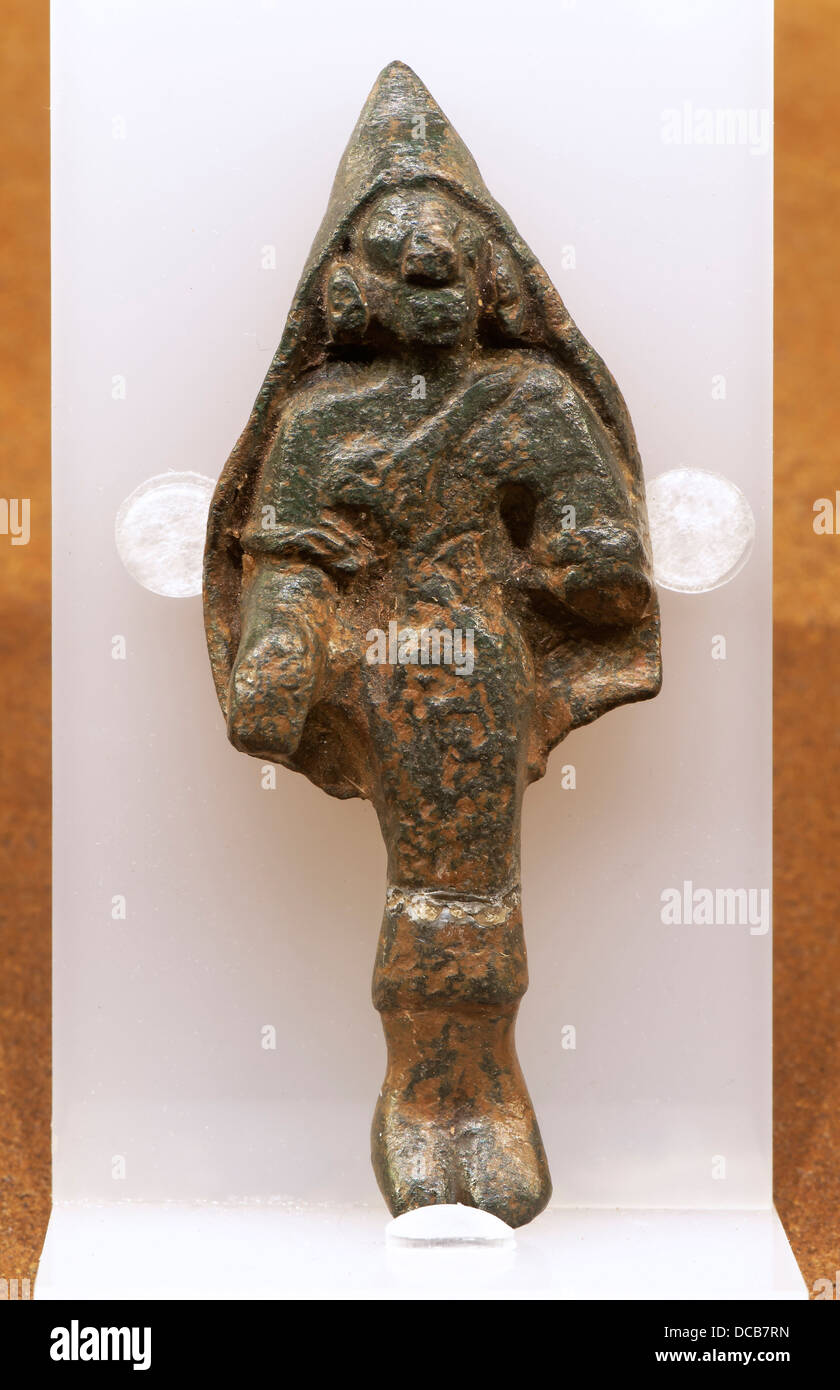 Ex Voto, Iberian Sanctuary 7th century BC Museum of the 'Cueva de la Lobera', Castellar, Jaen-province, Andalusia, Spain, Europe Stock Photohttps://www.alamy.com/image-license-details/?v=1https://www.alamy.com/stock-photo-ex-voto-iberian-sanctuary-7th-century-bc-museum-of-the-cueva-de-la-59254601.html
Ex Voto, Iberian Sanctuary 7th century BC Museum of the 'Cueva de la Lobera', Castellar, Jaen-province, Andalusia, Spain, Europe Stock Photohttps://www.alamy.com/image-license-details/?v=1https://www.alamy.com/stock-photo-ex-voto-iberian-sanctuary-7th-century-bc-museum-of-the-cueva-de-la-59254601.htmlRMDCB7RN–Ex Voto, Iberian Sanctuary 7th century BC Museum of the 'Cueva de la Lobera', Castellar, Jaen-province, Andalusia, Spain, Europe
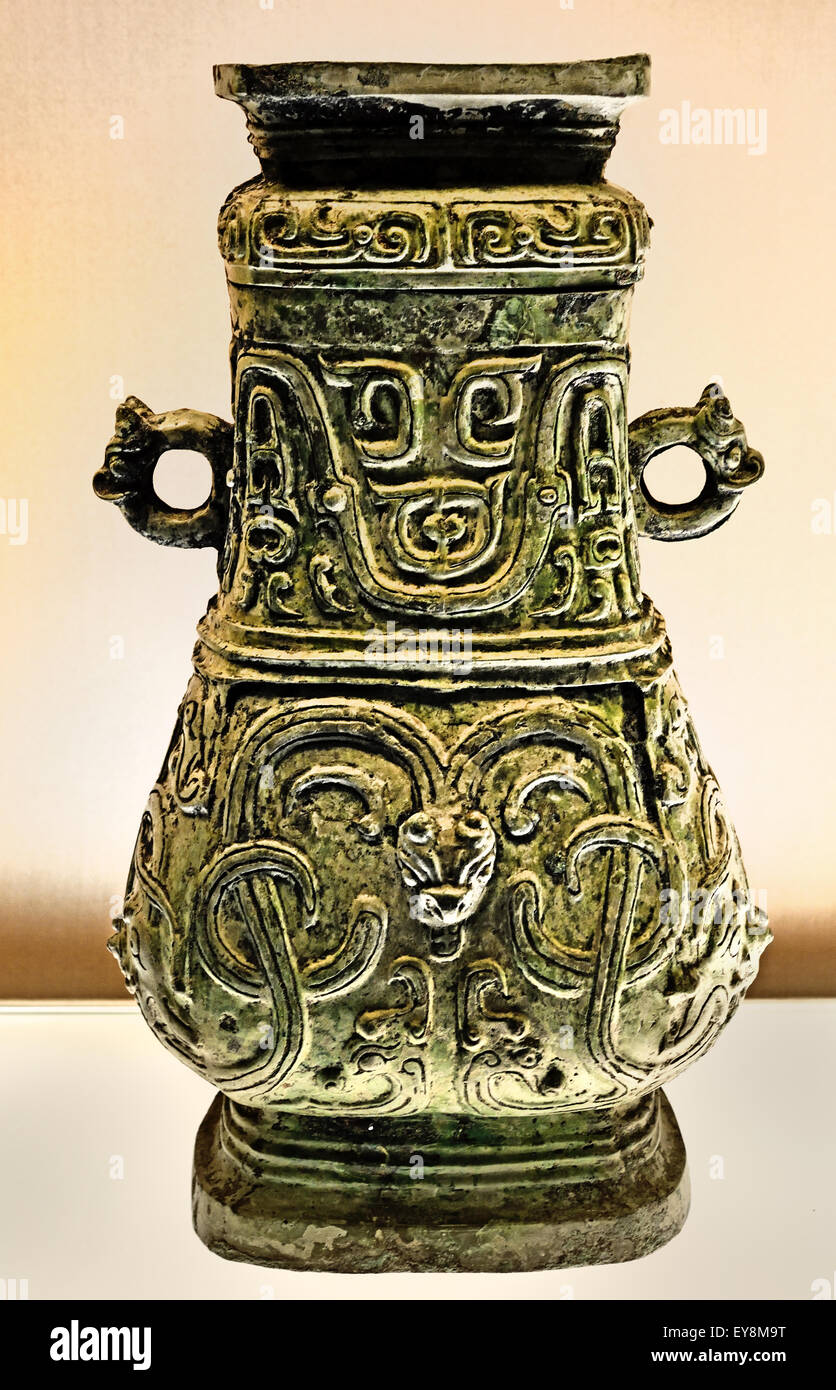 Square Hu ( Wine Vessel ) with dragon Design 770, 7th century BC Bronze Shanghai Museum of ancient Chinese art China Stock Photohttps://www.alamy.com/image-license-details/?v=1https://www.alamy.com/stock-photo-square-hu-wine-vessel-with-dragon-design-770-7th-century-bc-bronze-85628756.html
Square Hu ( Wine Vessel ) with dragon Design 770, 7th century BC Bronze Shanghai Museum of ancient Chinese art China Stock Photohttps://www.alamy.com/image-license-details/?v=1https://www.alamy.com/stock-photo-square-hu-wine-vessel-with-dragon-design-770-7th-century-bc-bronze-85628756.htmlRMEY8M9T–Square Hu ( Wine Vessel ) with dragon Design 770, 7th century BC Bronze Shanghai Museum of ancient Chinese art China
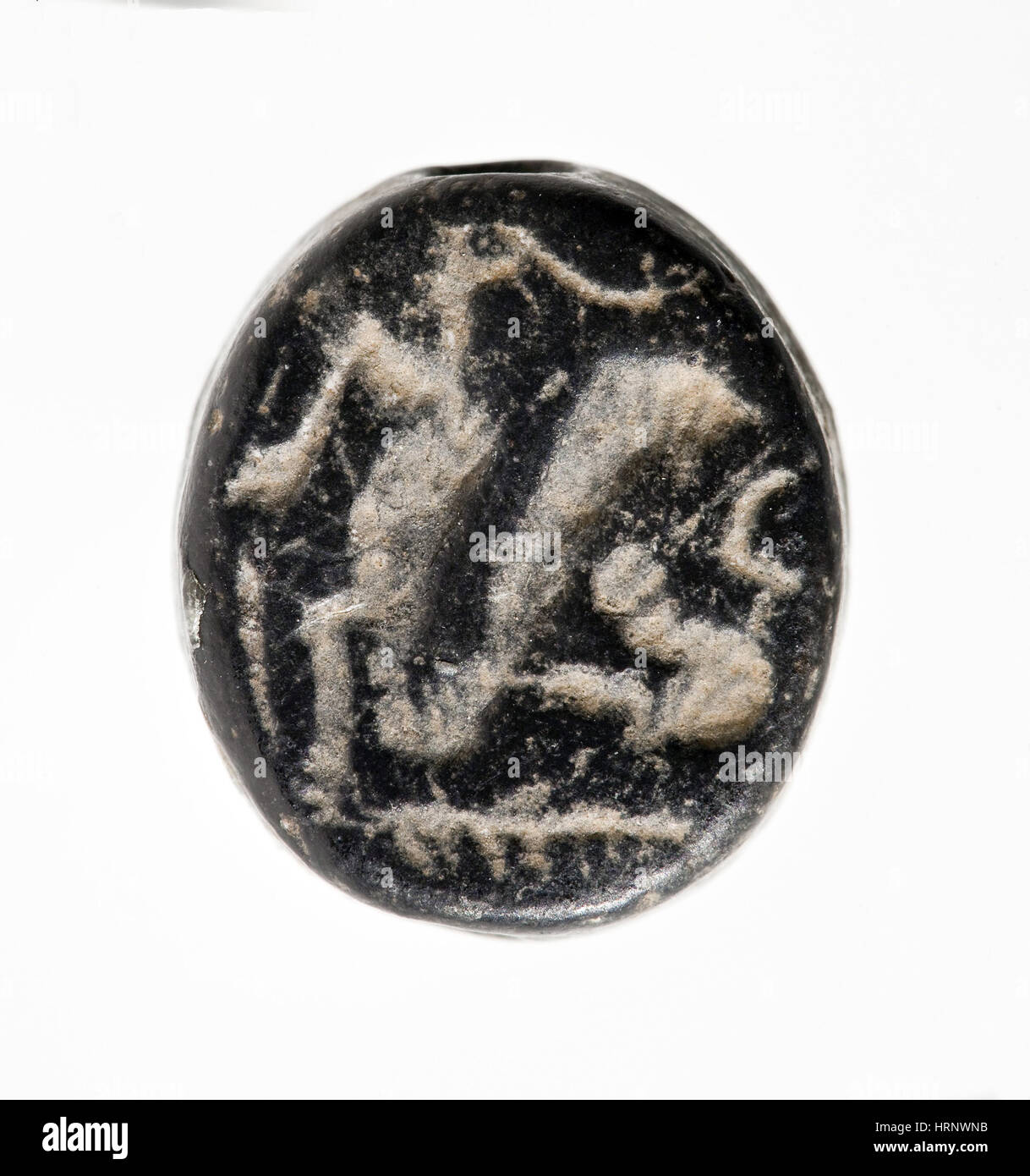 Scaraboid Stamp Seal, 8th-7th Century BC Stock Photohttps://www.alamy.com/image-license-details/?v=1https://www.alamy.com/stock-photo-scaraboid-stamp-seal-8th-7th-century-bc-135090855.html
Scaraboid Stamp Seal, 8th-7th Century BC Stock Photohttps://www.alamy.com/image-license-details/?v=1https://www.alamy.com/stock-photo-scaraboid-stamp-seal-8th-7th-century-bc-135090855.htmlRMHRNWNB–Scaraboid Stamp Seal, 8th-7th Century BC
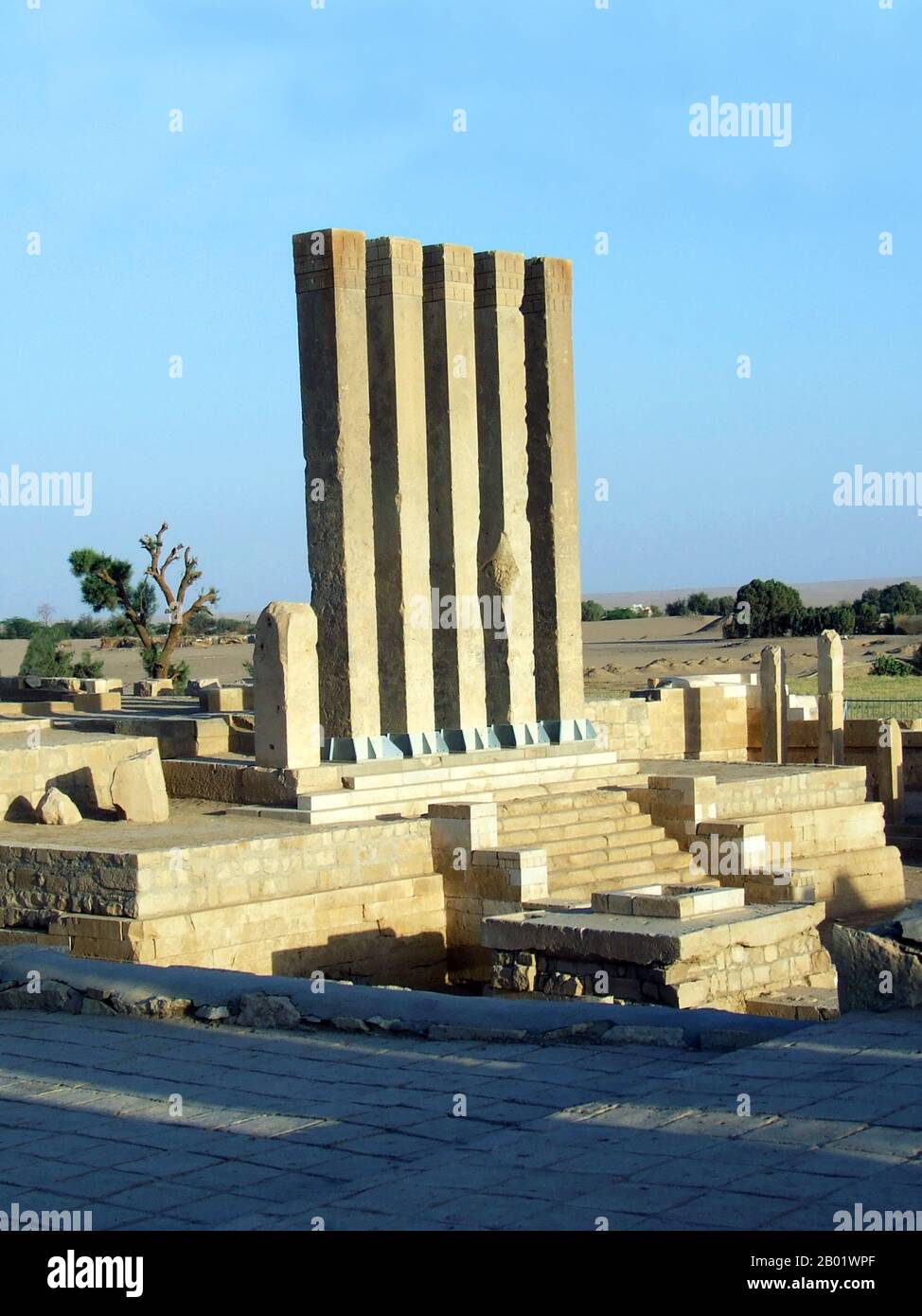 Yemen: The Temple of Awwam (Mahram Bilqis) dedicated to the Moon God Almaqah at Ma'rib, former capital of the Sabaean Kingdom, c. 7th-5th century BCE. Ma'rib or Marib is the capital city of the Ma'rib Governorate, Yemen and was the capital of the Sabaean kingdom, which some scholars believe to be the ancient Sheba of biblical fame. It is located at approximately 120 kilometres east of Yemen's modern capital, Sana'a. Stock Photohttps://www.alamy.com/image-license-details/?v=1https://www.alamy.com/yemen-the-temple-of-awwam-mahram-bilqis-dedicated-to-the-moon-god-almaqah-at-marib-former-capital-of-the-sabaean-kingdom-c-7th-5th-century-bce-marib-or-marib-is-the-capital-city-of-the-marib-governorate-yemen-and-was-the-capital-of-the-sabaean-kingdom-which-some-scholars-believe-to-be-the-ancient-sheba-of-biblical-fame-it-is-located-at-approximately-120-kilometres-east-of-yemens-modern-capital-sanaa-image344249543.html
Yemen: The Temple of Awwam (Mahram Bilqis) dedicated to the Moon God Almaqah at Ma'rib, former capital of the Sabaean Kingdom, c. 7th-5th century BCE. Ma'rib or Marib is the capital city of the Ma'rib Governorate, Yemen and was the capital of the Sabaean kingdom, which some scholars believe to be the ancient Sheba of biblical fame. It is located at approximately 120 kilometres east of Yemen's modern capital, Sana'a. Stock Photohttps://www.alamy.com/image-license-details/?v=1https://www.alamy.com/yemen-the-temple-of-awwam-mahram-bilqis-dedicated-to-the-moon-god-almaqah-at-marib-former-capital-of-the-sabaean-kingdom-c-7th-5th-century-bce-marib-or-marib-is-the-capital-city-of-the-marib-governorate-yemen-and-was-the-capital-of-the-sabaean-kingdom-which-some-scholars-believe-to-be-the-ancient-sheba-of-biblical-fame-it-is-located-at-approximately-120-kilometres-east-of-yemens-modern-capital-sanaa-image344249543.htmlRM2B01WPF–Yemen: The Temple of Awwam (Mahram Bilqis) dedicated to the Moon God Almaqah at Ma'rib, former capital of the Sabaean Kingdom, c. 7th-5th century BCE. Ma'rib or Marib is the capital city of the Ma'rib Governorate, Yemen and was the capital of the Sabaean kingdom, which some scholars believe to be the ancient Sheba of biblical fame. It is located at approximately 120 kilometres east of Yemen's modern capital, Sana'a.
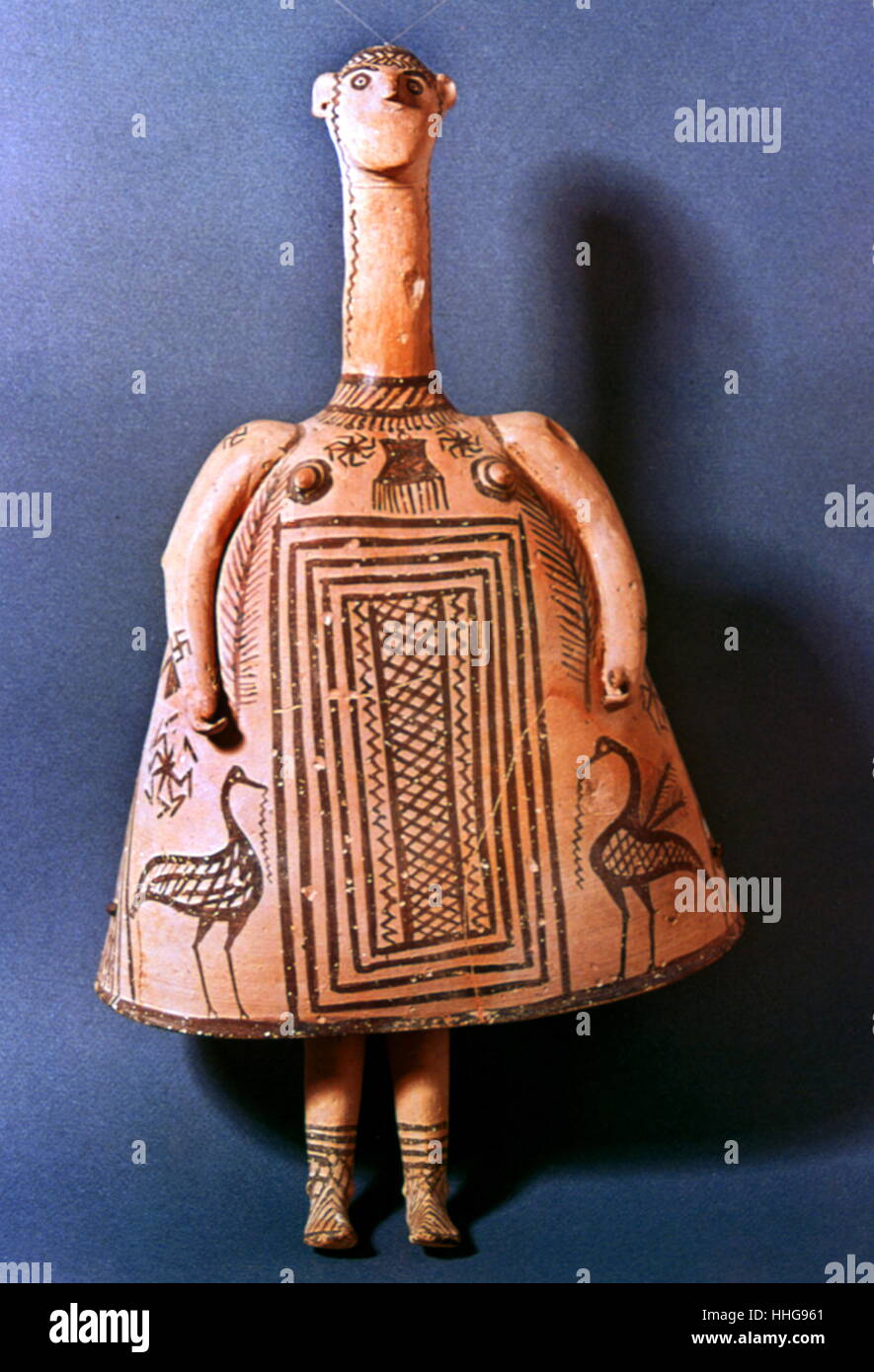 Bell idol. Terracotta figurine, 7th century BC (Late Geometric period). Theban workshop (Oinochoe type) Stock Photohttps://www.alamy.com/image-license-details/?v=1https://www.alamy.com/stock-photo-bell-idol-terracotta-figurine-7th-century-bc-late-geometric-period-131280185.html
Bell idol. Terracotta figurine, 7th century BC (Late Geometric period). Theban workshop (Oinochoe type) Stock Photohttps://www.alamy.com/image-license-details/?v=1https://www.alamy.com/stock-photo-bell-idol-terracotta-figurine-7th-century-bc-late-geometric-period-131280185.htmlRMHHG961–Bell idol. Terracotta figurine, 7th century BC (Late Geometric period). Theban workshop (Oinochoe type)
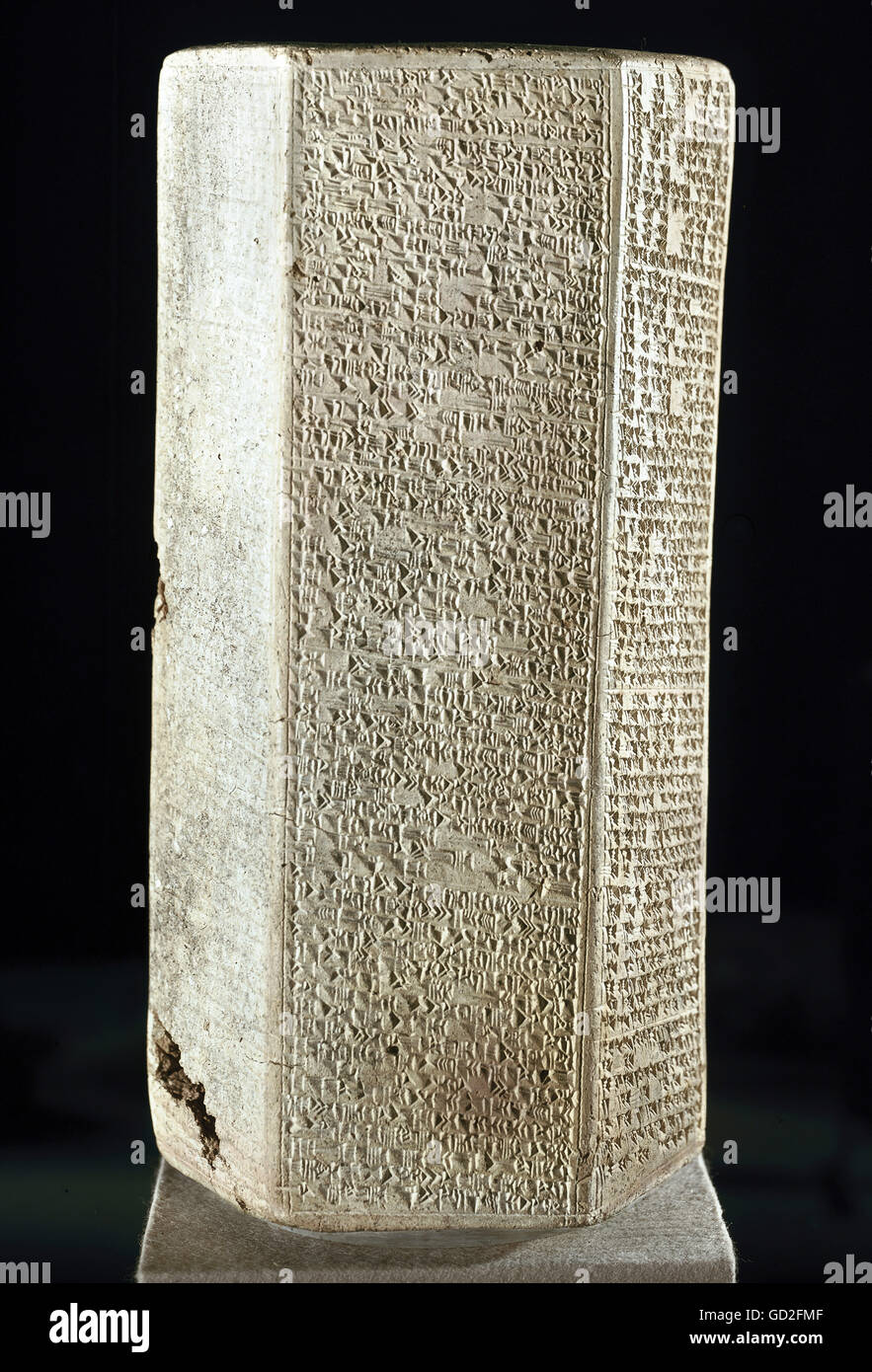 writing, script, wedge writing, Assyria, prism with inscription of the King Assur-ahhe-iddina about his military campaigns, Nineveh, clay, 676 BC, National Museum Baghdad, Iraq, Assur ahhe iddina, Esarhaddon, Assyrian, Assyrian empire, campaign, campaigns, war, wars, document, documents, report, reports, deed report, Mesopotamia, stone, stones, 7th century BC, ancient world, ancient times, historic, historical, ancient world, Additional-Rights-Clearences-Not Available Stock Photohttps://www.alamy.com/image-license-details/?v=1https://www.alamy.com/stock-photo-writing-script-wedge-writing-assyria-prism-with-inscription-of-the-111308975.html
writing, script, wedge writing, Assyria, prism with inscription of the King Assur-ahhe-iddina about his military campaigns, Nineveh, clay, 676 BC, National Museum Baghdad, Iraq, Assur ahhe iddina, Esarhaddon, Assyrian, Assyrian empire, campaign, campaigns, war, wars, document, documents, report, reports, deed report, Mesopotamia, stone, stones, 7th century BC, ancient world, ancient times, historic, historical, ancient world, Additional-Rights-Clearences-Not Available Stock Photohttps://www.alamy.com/image-license-details/?v=1https://www.alamy.com/stock-photo-writing-script-wedge-writing-assyria-prism-with-inscription-of-the-111308975.htmlRMGD2FMF–writing, script, wedge writing, Assyria, prism with inscription of the King Assur-ahhe-iddina about his military campaigns, Nineveh, clay, 676 BC, National Museum Baghdad, Iraq, Assur ahhe iddina, Esarhaddon, Assyrian, Assyrian empire, campaign, campaigns, war, wars, document, documents, report, reports, deed report, Mesopotamia, stone, stones, 7th century BC, ancient world, ancient times, historic, historical, ancient world, Additional-Rights-Clearences-Not Available
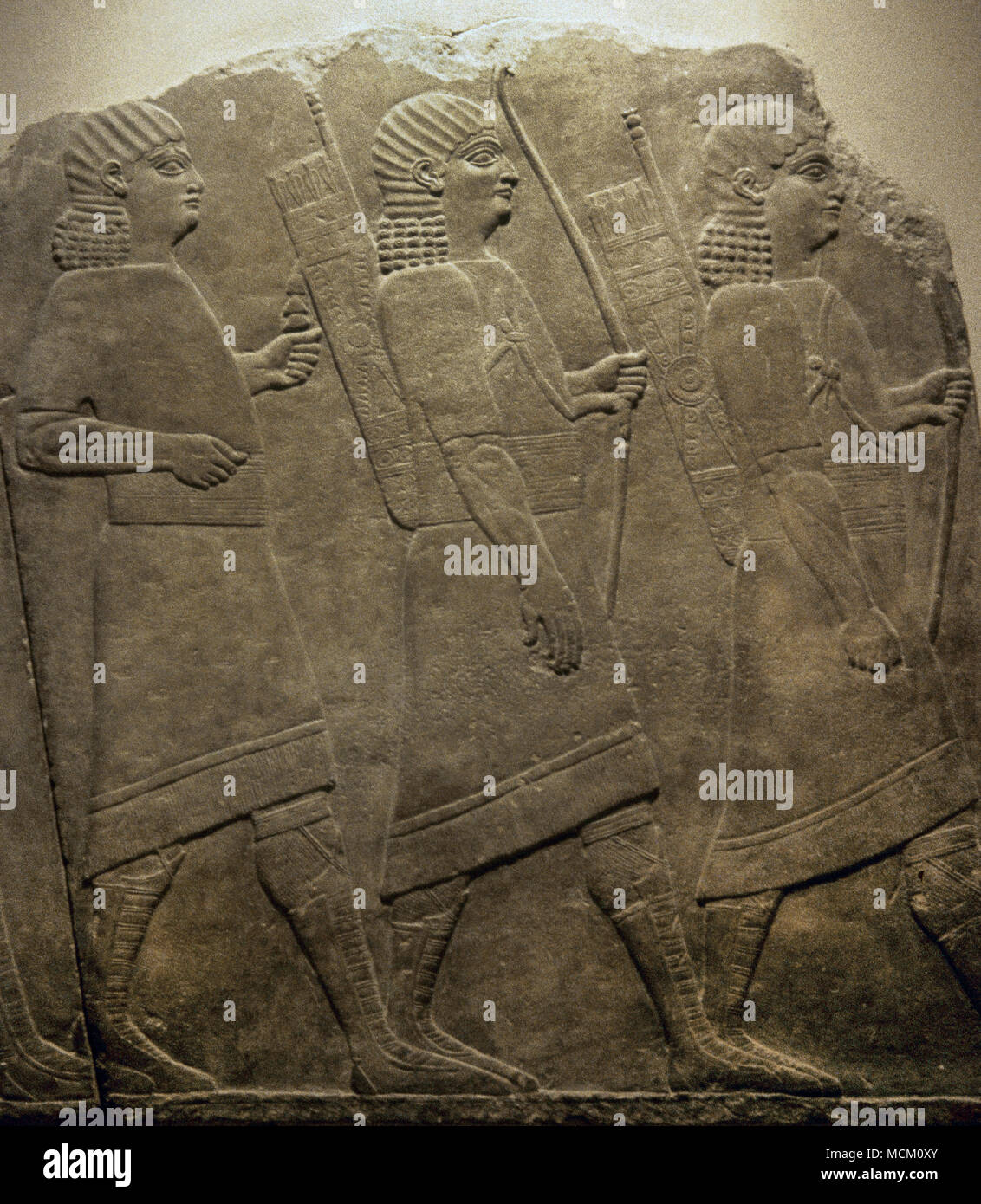 Archers of the Royal Guard. Relief from the Palace of Ashurbanipal, Niniveh, Iraq. 7th century BC. Louvre Museum. Paris, France. Stock Photohttps://www.alamy.com/image-license-details/?v=1https://www.alamy.com/archers-of-the-royal-guard-relief-from-the-palace-of-ashurbanipal-niniveh-iraq-7th-century-bc-louvre-museum-paris-france-image179919347.html
Archers of the Royal Guard. Relief from the Palace of Ashurbanipal, Niniveh, Iraq. 7th century BC. Louvre Museum. Paris, France. Stock Photohttps://www.alamy.com/image-license-details/?v=1https://www.alamy.com/archers-of-the-royal-guard-relief-from-the-palace-of-ashurbanipal-niniveh-iraq-7th-century-bc-louvre-museum-paris-france-image179919347.htmlRMMCM0XY–Archers of the Royal Guard. Relief from the Palace of Ashurbanipal, Niniveh, Iraq. 7th century BC. Louvre Museum. Paris, France.
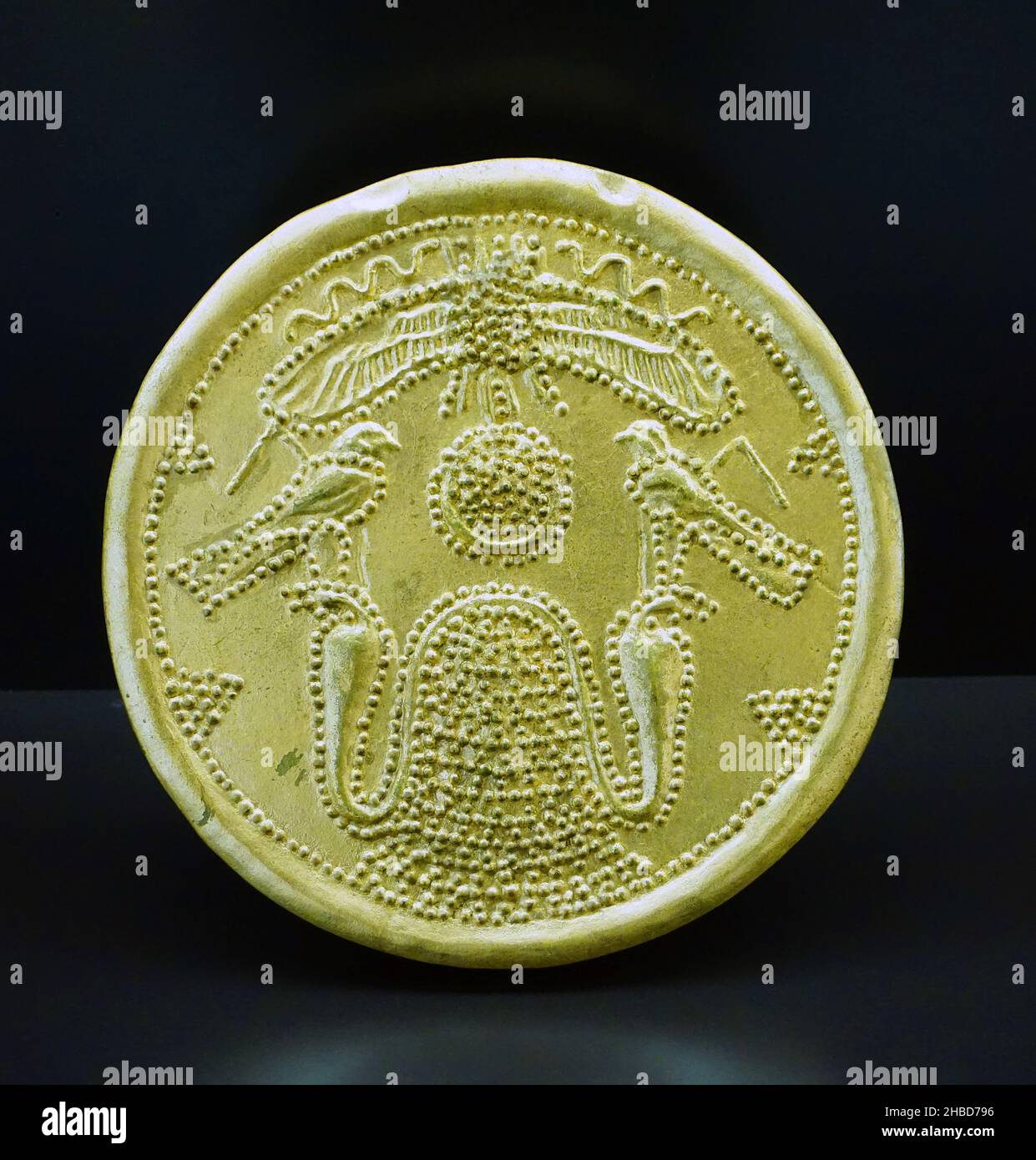 Detalle decorativo del medallón de Trayamar.Oro,con técnicas de filigrana y granulado.Época fenicia,siglo VII a.C.Necrópolis de Trayamar,Algarrobo.Decorative detail of the Trayamar medallion, Gold, with filigree and granulated techniques. Phoenician period, 7th century BC Necropolis of Trayamar, Algarrobo. Stock Photohttps://www.alamy.com/image-license-details/?v=1https://www.alamy.com/detalle-decorativo-del-medalln-de-trayamarorocon-tcnicas-de-filigrana-y-granuladopoca-feniciasiglo-vii-acnecrpolis-de-trayamaralgarrobodecorative-detail-of-the-trayamar-medallion-gold-with-filigree-and-granulated-techniques-phoenician-period-7th-century-bc-necropolis-of-trayamar-algarrobo-image454521906.html
Detalle decorativo del medallón de Trayamar.Oro,con técnicas de filigrana y granulado.Época fenicia,siglo VII a.C.Necrópolis de Trayamar,Algarrobo.Decorative detail of the Trayamar medallion, Gold, with filigree and granulated techniques. Phoenician period, 7th century BC Necropolis of Trayamar, Algarrobo. Stock Photohttps://www.alamy.com/image-license-details/?v=1https://www.alamy.com/detalle-decorativo-del-medalln-de-trayamarorocon-tcnicas-de-filigrana-y-granuladopoca-feniciasiglo-vii-acnecrpolis-de-trayamaralgarrobodecorative-detail-of-the-trayamar-medallion-gold-with-filigree-and-granulated-techniques-phoenician-period-7th-century-bc-necropolis-of-trayamar-algarrobo-image454521906.htmlRM2HBD796–Detalle decorativo del medallón de Trayamar.Oro,con técnicas de filigrana y granulado.Época fenicia,siglo VII a.C.Necrópolis de Trayamar,Algarrobo.Decorative detail of the Trayamar medallion, Gold, with filigree and granulated techniques. Phoenician period, 7th century BC Necropolis of Trayamar, Algarrobo.
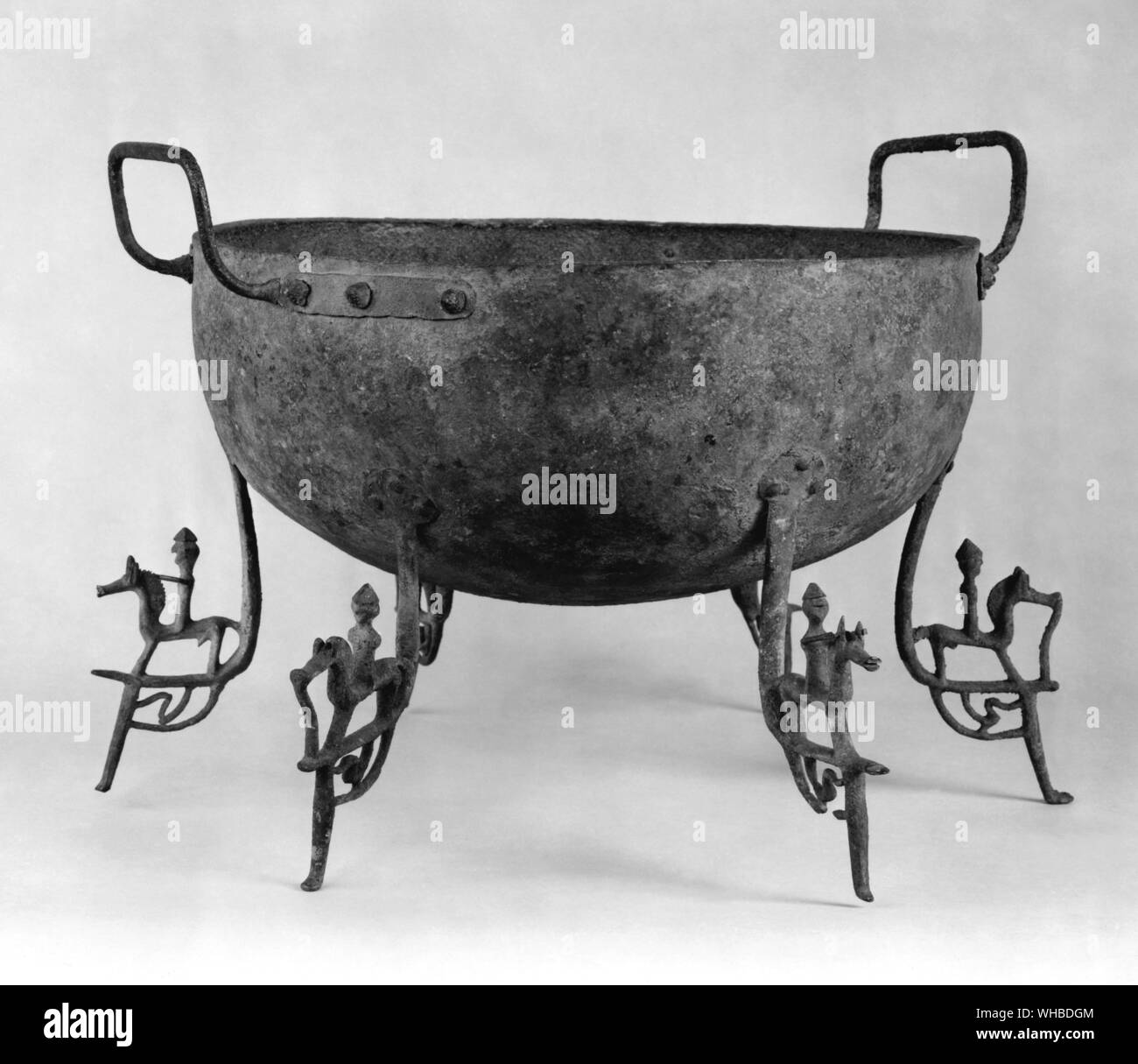 Etruscan Bronze Cauldron with horsemen detail on legs Early 7th Century BC Stock Photohttps://www.alamy.com/image-license-details/?v=1https://www.alamy.com/etruscan-bronze-cauldron-with-horsemen-detail-on-legs-early-7th-century-bc-image268856804.html
Etruscan Bronze Cauldron with horsemen detail on legs Early 7th Century BC Stock Photohttps://www.alamy.com/image-license-details/?v=1https://www.alamy.com/etruscan-bronze-cauldron-with-horsemen-detail-on-legs-early-7th-century-bc-image268856804.htmlRMWHBDGM–Etruscan Bronze Cauldron with horsemen detail on legs Early 7th Century BC
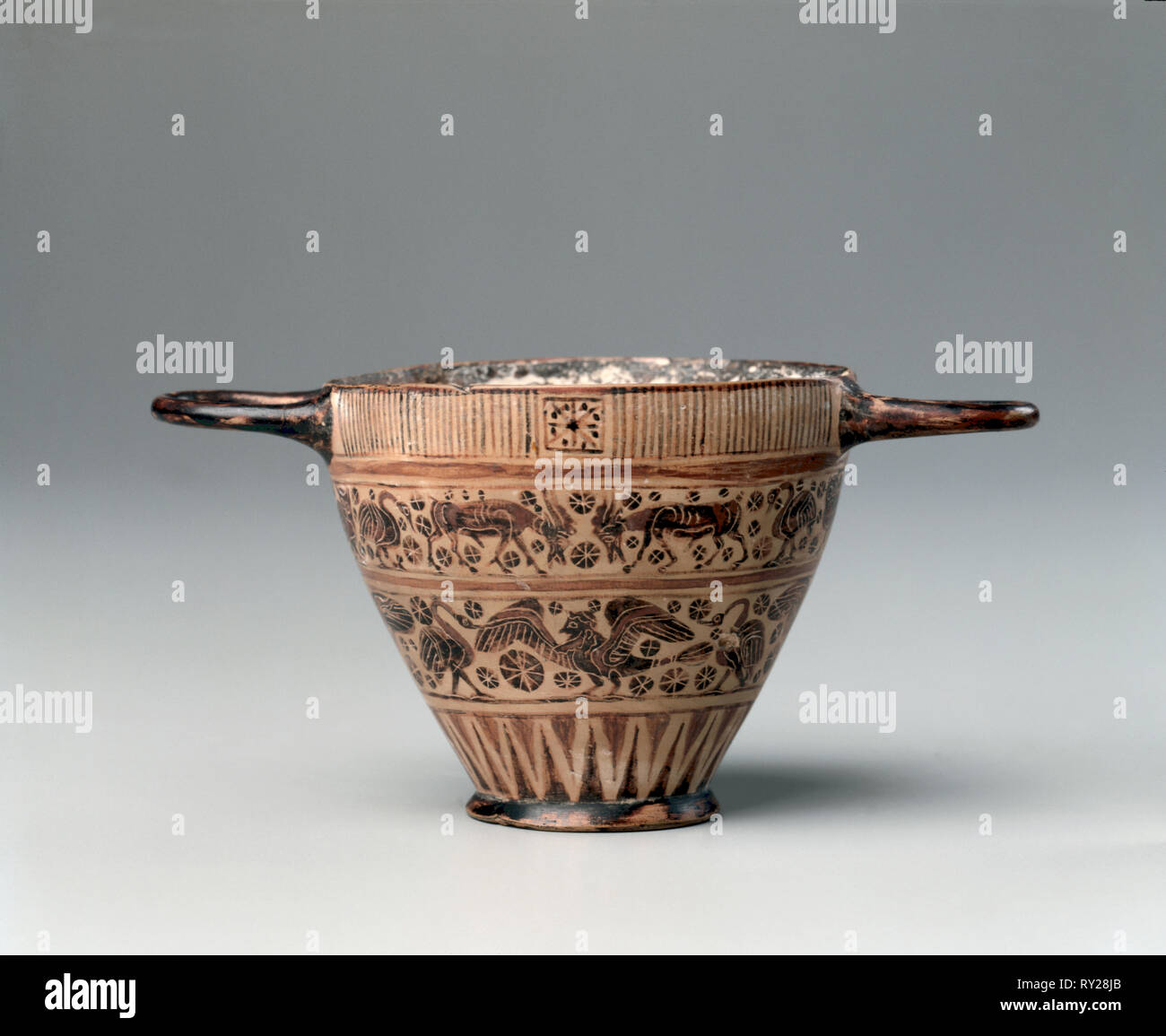 Corinthian Skyphos, 600s. Greece, 7th Century BC. Earthenware; overall: 7.3 cm (2 7/8 in Stock Photohttps://www.alamy.com/image-license-details/?v=1https://www.alamy.com/corinthian-skyphos-600s-greece-7th-century-bc-earthenware-overall-73-cm-2-78-in-image240381187.html
Corinthian Skyphos, 600s. Greece, 7th Century BC. Earthenware; overall: 7.3 cm (2 7/8 in Stock Photohttps://www.alamy.com/image-license-details/?v=1https://www.alamy.com/corinthian-skyphos-600s-greece-7th-century-bc-earthenware-overall-73-cm-2-78-in-image240381187.htmlRMRY28JB–Corinthian Skyphos, 600s. Greece, 7th Century BC. Earthenware; overall: 7.3 cm (2 7/8 in
 Shutruru stele. Limestone. 7th century BC. Found in the Acropolis of Susa, Iran. Louvre Museum. Paris. France. Detail. Stock Photohttps://www.alamy.com/image-license-details/?v=1https://www.alamy.com/stock-photo-shutruru-stele-limestone-7th-century-bc-found-in-the-acropolis-of-89912328.html
Shutruru stele. Limestone. 7th century BC. Found in the Acropolis of Susa, Iran. Louvre Museum. Paris. France. Detail. Stock Photohttps://www.alamy.com/image-license-details/?v=1https://www.alamy.com/stock-photo-shutruru-stele-limestone-7th-century-bc-found-in-the-acropolis-of-89912328.htmlRMF67T2G–Shutruru stele. Limestone. 7th century BC. Found in the Acropolis of Susa, Iran. Louvre Museum. Paris. France. Detail.
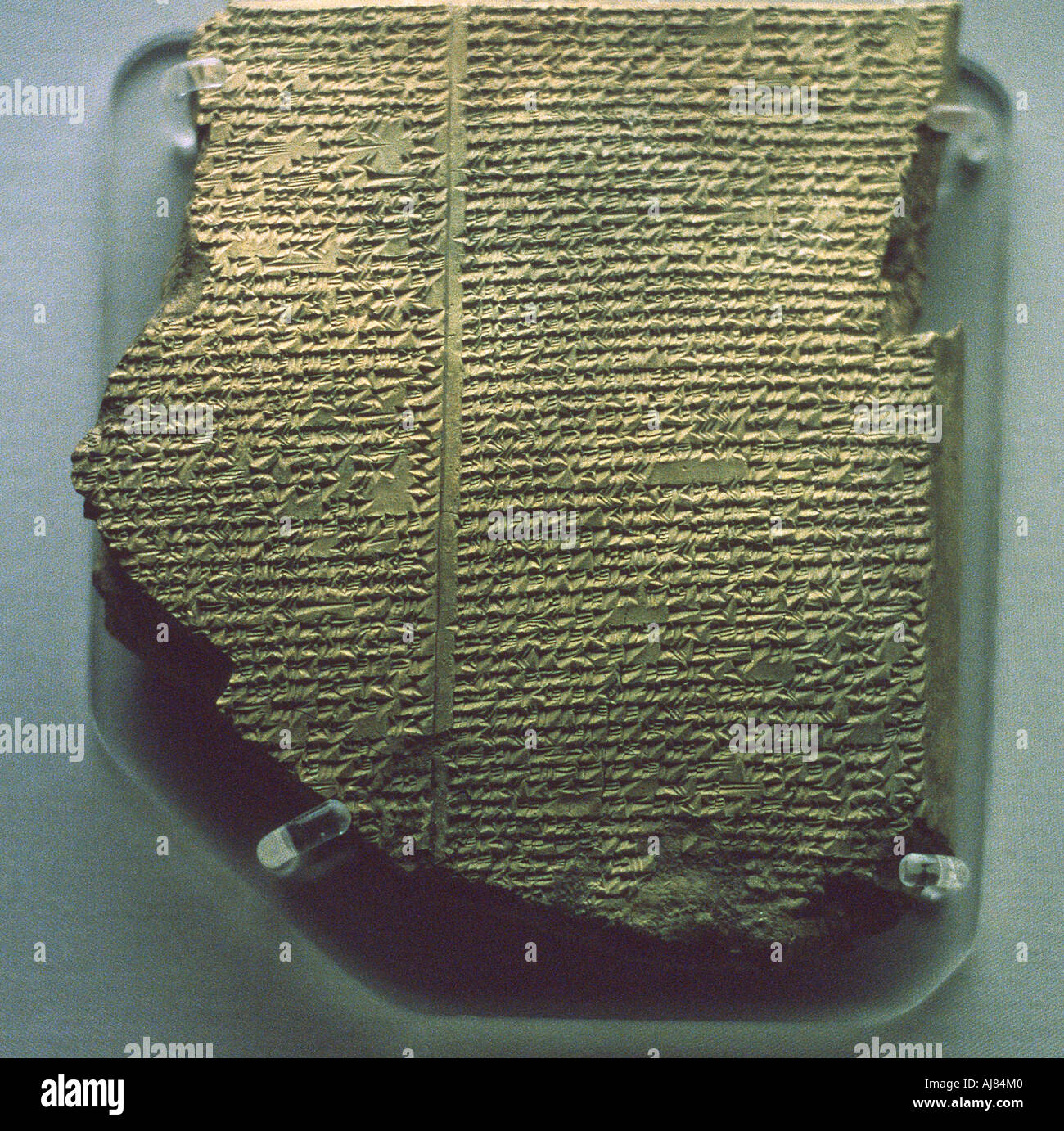 Cuneiform tablet relating part of the Epic of Gilgamesh, Neo-Assyrian, 7th century BC. Artist: Unknown Stock Photohttps://www.alamy.com/image-license-details/?v=1https://www.alamy.com/cuneiform-tablet-relating-part-of-the-epic-of-gilgamesh-neo-assyrian-image8373055.html
Cuneiform tablet relating part of the Epic of Gilgamesh, Neo-Assyrian, 7th century BC. Artist: Unknown Stock Photohttps://www.alamy.com/image-license-details/?v=1https://www.alamy.com/cuneiform-tablet-relating-part-of-the-epic-of-gilgamesh-neo-assyrian-image8373055.htmlRMAJ84M0–Cuneiform tablet relating part of the Epic of Gilgamesh, Neo-Assyrian, 7th century BC. Artist: Unknown
 Woman walking through ruins of Greek temple from 7th Century BC at Selinunte in Trapani Province on Sicily Stock Photohttps://www.alamy.com/image-license-details/?v=1https://www.alamy.com/woman-walking-through-ruins-of-greek-temple-from-7th-century-bc-at-image7267738.html
Woman walking through ruins of Greek temple from 7th Century BC at Selinunte in Trapani Province on Sicily Stock Photohttps://www.alamy.com/image-license-details/?v=1https://www.alamy.com/woman-walking-through-ruins-of-greek-temple-from-7th-century-bc-at-image7267738.htmlRMAAXFNB–Woman walking through ruins of Greek temple from 7th Century BC at Selinunte in Trapani Province on Sicily
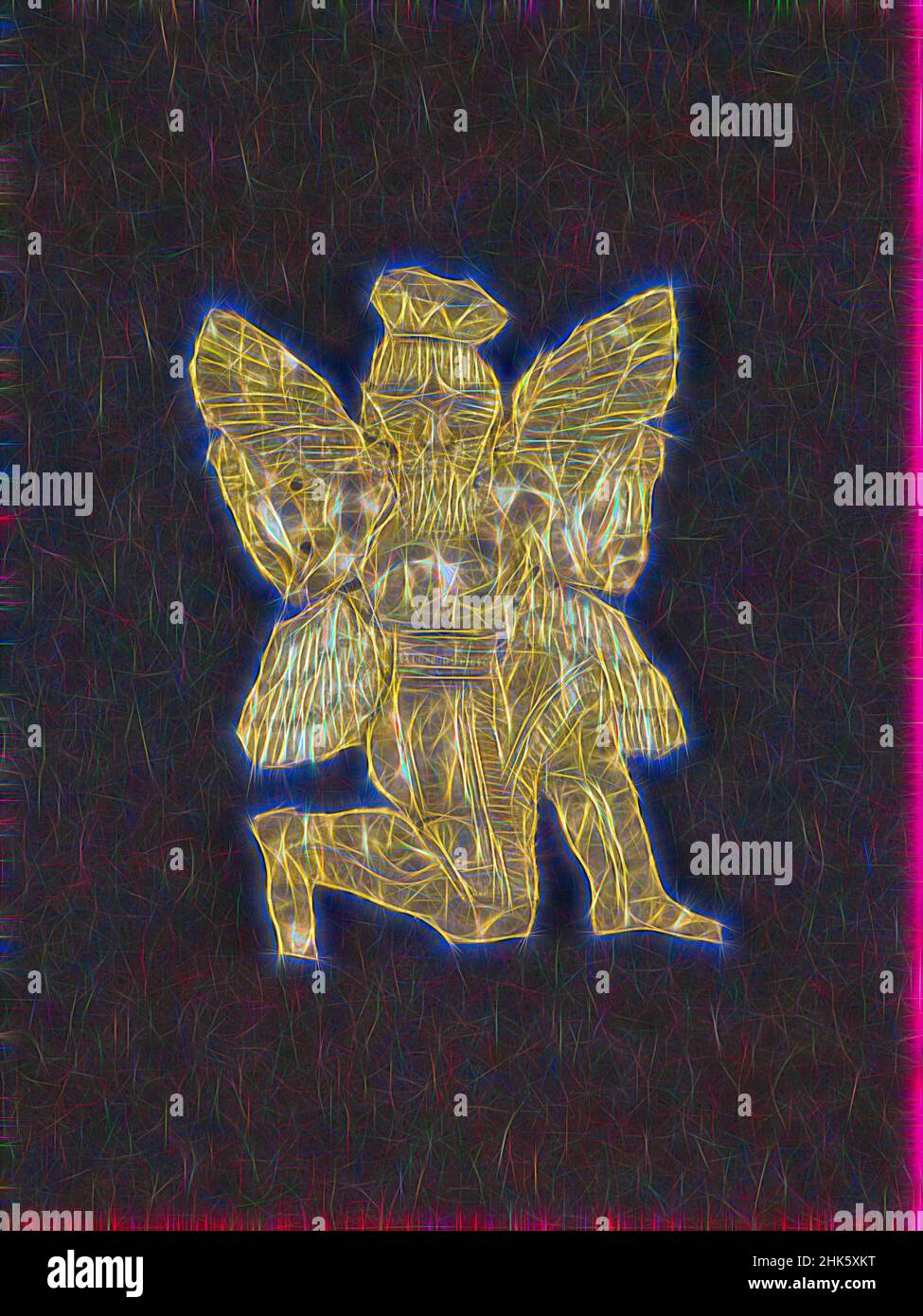 Inspired by Pair of Appliqués in the Form of Winged Genies, Near Eastern, Mesopotamian, Assyrian, Neo-Assyrian period, 883–612 BC, 7th century BC, Gold, Ziwiye, Kurdistan province, Iran, Asia, Metalwork, height: 1 3/4 in. (4.4 cm, Reimagined by Artotop. Classic art reinvented with a modern twist. Design of warm cheerful glowing of brightness and light ray radiance. Photography inspired by surrealism and futurism, embracing dynamic energy of modern technology, movement, speed and revolutionize culture Stock Photohttps://www.alamy.com/image-license-details/?v=1https://www.alamy.com/inspired-by-pair-of-appliqus-in-the-form-of-winged-genies-near-eastern-mesopotamian-assyrian-neo-assyrian-period-883612-bc-7th-century-bc-gold-ziwiye-kurdistan-province-iran-asia-metalwork-height-1-34-in-44-cm-reimagined-by-artotop-classic-art-reinvented-with-a-modern-twist-design-of-warm-cheerful-glowing-of-brightness-and-light-ray-radiance-photography-inspired-by-surrealism-and-futurism-embracing-dynamic-energy-of-modern-technology-movement-speed-and-revolutionize-culture-image459278732.html
Inspired by Pair of Appliqués in the Form of Winged Genies, Near Eastern, Mesopotamian, Assyrian, Neo-Assyrian period, 883–612 BC, 7th century BC, Gold, Ziwiye, Kurdistan province, Iran, Asia, Metalwork, height: 1 3/4 in. (4.4 cm, Reimagined by Artotop. Classic art reinvented with a modern twist. Design of warm cheerful glowing of brightness and light ray radiance. Photography inspired by surrealism and futurism, embracing dynamic energy of modern technology, movement, speed and revolutionize culture Stock Photohttps://www.alamy.com/image-license-details/?v=1https://www.alamy.com/inspired-by-pair-of-appliqus-in-the-form-of-winged-genies-near-eastern-mesopotamian-assyrian-neo-assyrian-period-883612-bc-7th-century-bc-gold-ziwiye-kurdistan-province-iran-asia-metalwork-height-1-34-in-44-cm-reimagined-by-artotop-classic-art-reinvented-with-a-modern-twist-design-of-warm-cheerful-glowing-of-brightness-and-light-ray-radiance-photography-inspired-by-surrealism-and-futurism-embracing-dynamic-energy-of-modern-technology-movement-speed-and-revolutionize-culture-image459278732.htmlRF2HK5XKT–Inspired by Pair of Appliqués in the Form of Winged Genies, Near Eastern, Mesopotamian, Assyrian, Neo-Assyrian period, 883–612 BC, 7th century BC, Gold, Ziwiye, Kurdistan province, Iran, Asia, Metalwork, height: 1 3/4 in. (4.4 cm, Reimagined by Artotop. Classic art reinvented with a modern twist. Design of warm cheerful glowing of brightness and light ray radiance. Photography inspired by surrealism and futurism, embracing dynamic energy of modern technology, movement, speed and revolutionize culture
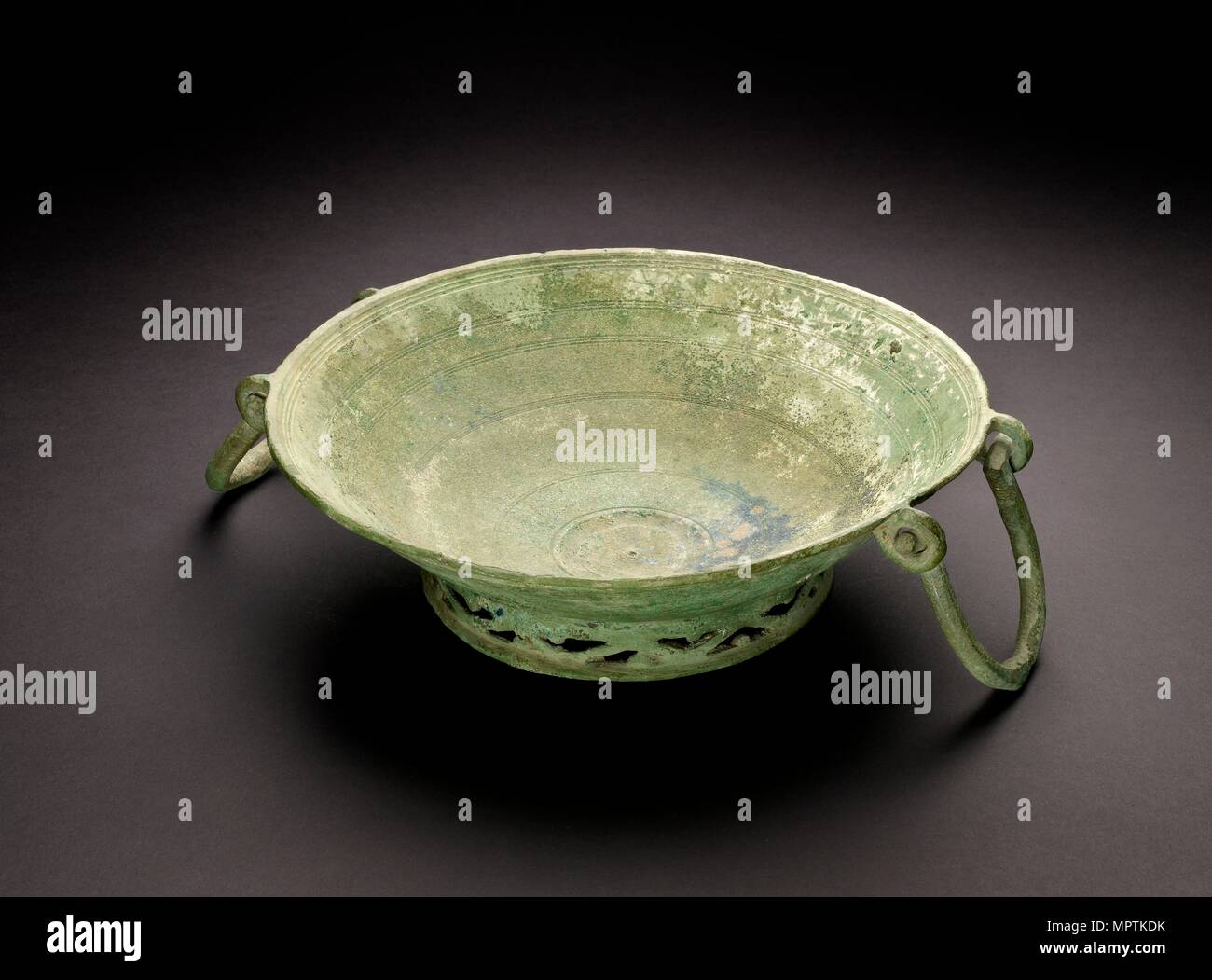 Bowl, 7th century BC. Artist: Unknown. Stock Photohttps://www.alamy.com/image-license-details/?v=1https://www.alamy.com/bowl-7th-century-bc-artist-unknown-image186168239.html
Bowl, 7th century BC. Artist: Unknown. Stock Photohttps://www.alamy.com/image-license-details/?v=1https://www.alamy.com/bowl-7th-century-bc-artist-unknown-image186168239.htmlRMMPTKDK–Bowl, 7th century BC. Artist: Unknown.
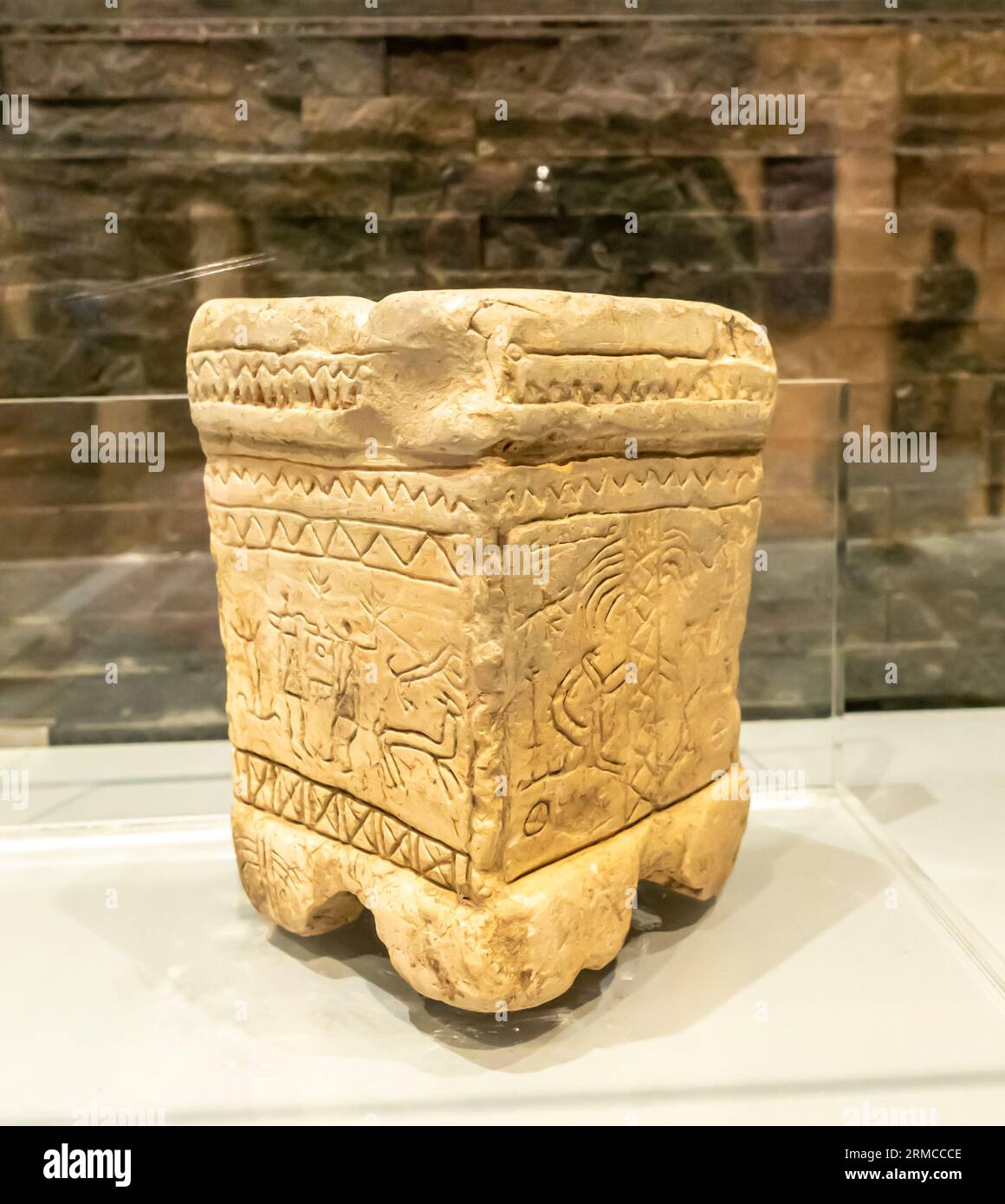 Stone altar with drawings- Khirbat al-Mu'allaq - edomite - 8th century BC - 7th century BC Stock Photohttps://www.alamy.com/image-license-details/?v=1https://www.alamy.com/stone-altar-with-drawings-khirbat-al-muallaq-edomite-8th-century-bc-7th-century-bc-image563298078.html
Stone altar with drawings- Khirbat al-Mu'allaq - edomite - 8th century BC - 7th century BC Stock Photohttps://www.alamy.com/image-license-details/?v=1https://www.alamy.com/stone-altar-with-drawings-khirbat-al-muallaq-edomite-8th-century-bc-7th-century-bc-image563298078.htmlRM2RMCCCE–Stone altar with drawings- Khirbat al-Mu'allaq - edomite - 8th century BC - 7th century BC
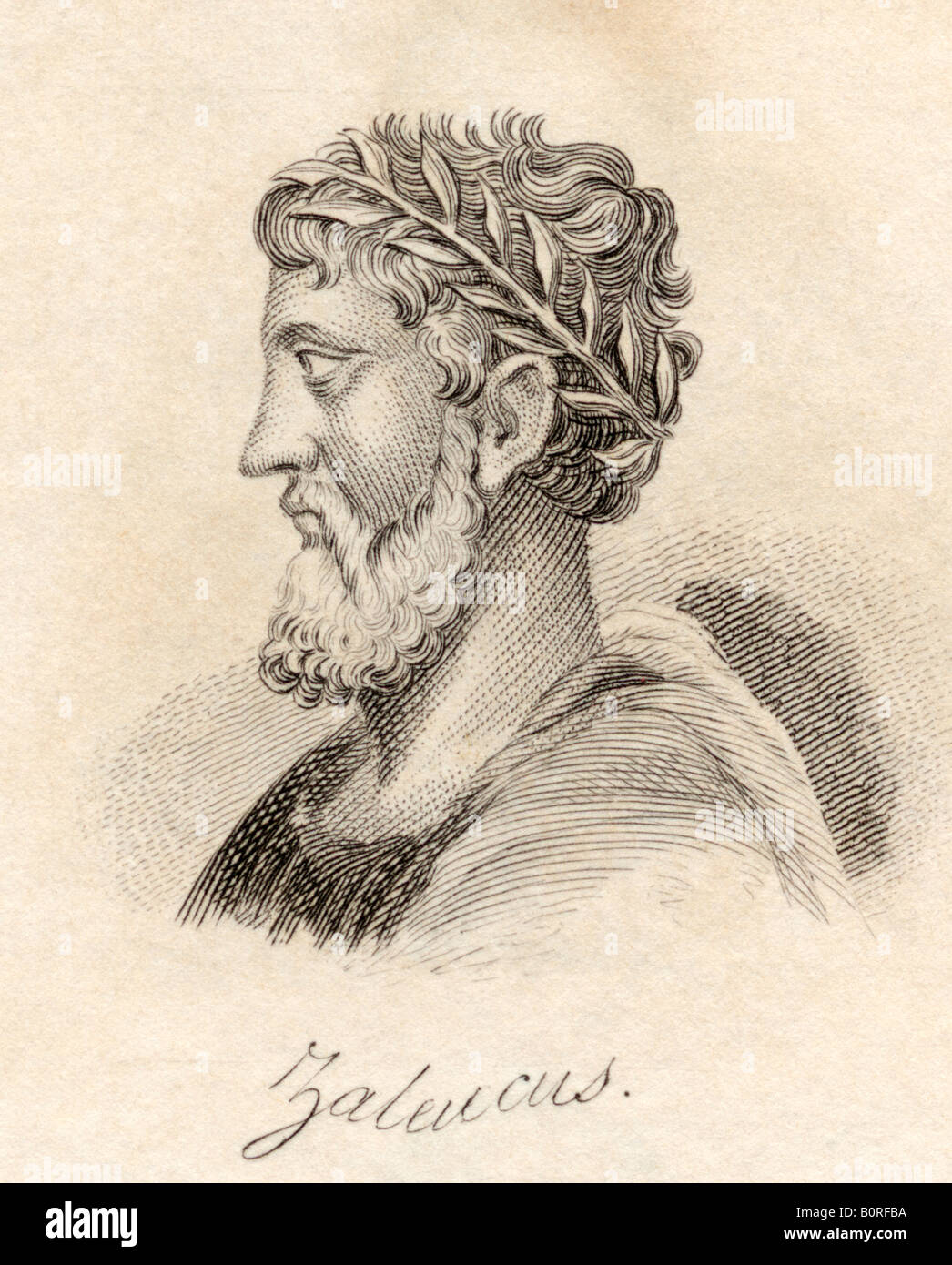 Zaleucus, 7th century BC. Greek lawgiver of Epizephyrian Locri in Italy, and Pythagorean philosopher. Deviser of first written Greek law code Locrian. Stock Photohttps://www.alamy.com/image-license-details/?v=1https://www.alamy.com/stock-photo-zaleucus-7th-century-bc-greek-lawgiver-of-epizephyrian-locri-in-italy-17727342.html
Zaleucus, 7th century BC. Greek lawgiver of Epizephyrian Locri in Italy, and Pythagorean philosopher. Deviser of first written Greek law code Locrian. Stock Photohttps://www.alamy.com/image-license-details/?v=1https://www.alamy.com/stock-photo-zaleucus-7th-century-bc-greek-lawgiver-of-epizephyrian-locri-in-italy-17727342.htmlRMB0RFBA–Zaleucus, 7th century BC. Greek lawgiver of Epizephyrian Locri in Italy, and Pythagorean philosopher. Deviser of first written Greek law code Locrian.
 Son Real necropolis archaeological site, Talayotic necropolis from the 7th century BC, Santa Margarita, Majorca, Balearic Islands, Spain Stock Photohttps://www.alamy.com/image-license-details/?v=1https://www.alamy.com/son-real-necropolis-archaeological-site-talayotic-necropolis-from-the-7th-century-bc-santa-margarita-majorca-balearic-islands-spain-image612223506.html
Son Real necropolis archaeological site, Talayotic necropolis from the 7th century BC, Santa Margarita, Majorca, Balearic Islands, Spain Stock Photohttps://www.alamy.com/image-license-details/?v=1https://www.alamy.com/son-real-necropolis-archaeological-site-talayotic-necropolis-from-the-7th-century-bc-santa-margarita-majorca-balearic-islands-spain-image612223506.htmlRF2XG1596–Son Real necropolis archaeological site, Talayotic necropolis from the 7th century BC, Santa Margarita, Majorca, Balearic Islands, Spain
 Photo of two joined postage stamps from Cyprus Vase Decoration 7th century BC Definitive Issues 1971 Stock Photohttps://www.alamy.com/image-license-details/?v=1https://www.alamy.com/photo-of-two-joined-postage-stamps-from-cyprus-vase-decoration-7th-century-bc-definitive-issues-1971-image499539782.html
Photo of two joined postage stamps from Cyprus Vase Decoration 7th century BC Definitive Issues 1971 Stock Photohttps://www.alamy.com/image-license-details/?v=1https://www.alamy.com/photo-of-two-joined-postage-stamps-from-cyprus-vase-decoration-7th-century-bc-definitive-issues-1971-image499539782.htmlRM2M0M02E–Photo of two joined postage stamps from Cyprus Vase Decoration 7th century BC Definitive Issues 1971
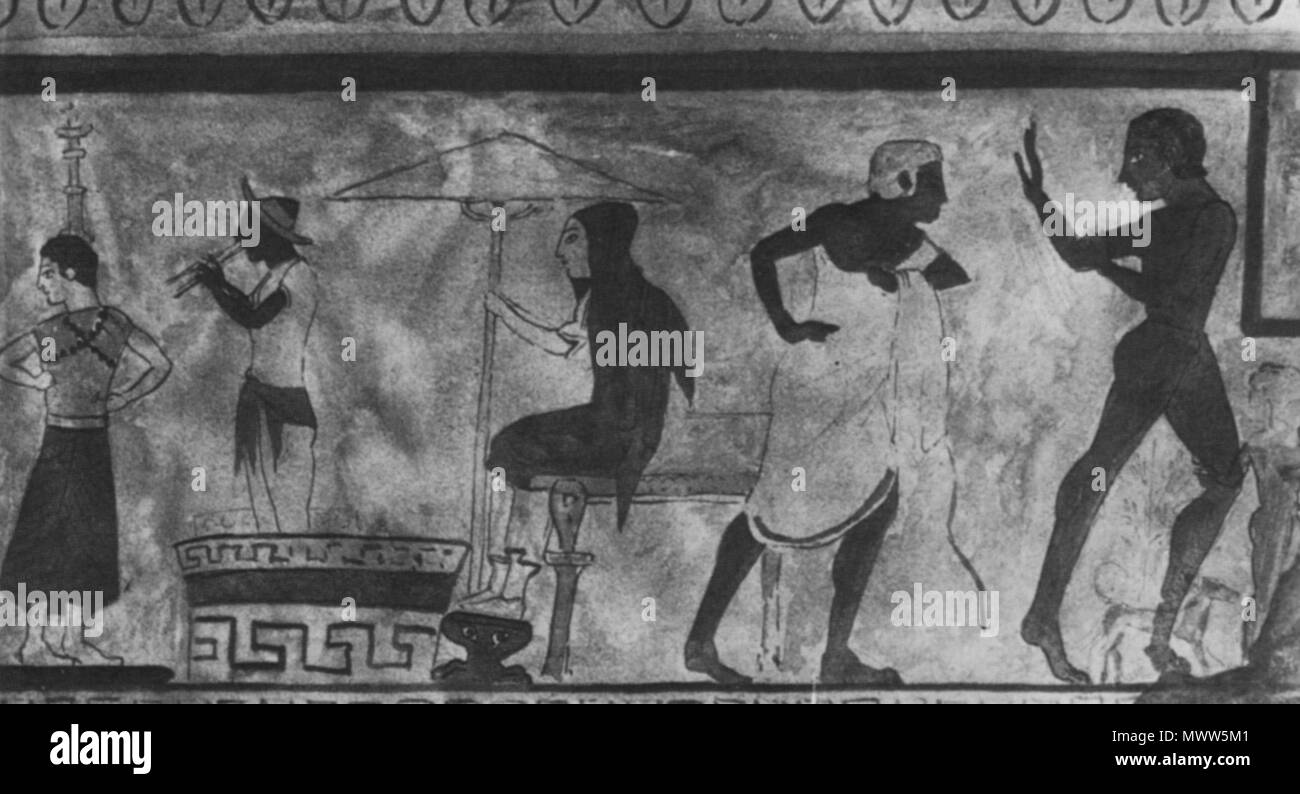 . Tomba della scimmia . end of 7th century BC. see filename or category 611 Tomba della scimmia 03 Stock Photohttps://www.alamy.com/image-license-details/?v=1https://www.alamy.com/tomba-della-scimmia-end-of-7th-century-bc-see-filename-or-category-611-tomba-della-scimmia-03-image188023361.html
. Tomba della scimmia . end of 7th century BC. see filename or category 611 Tomba della scimmia 03 Stock Photohttps://www.alamy.com/image-license-details/?v=1https://www.alamy.com/tomba-della-scimmia-end-of-7th-century-bc-see-filename-or-category-611-tomba-della-scimmia-03-image188023361.htmlRMMWW5M1–. Tomba della scimmia . end of 7th century BC. see filename or category 611 Tomba della scimmia 03
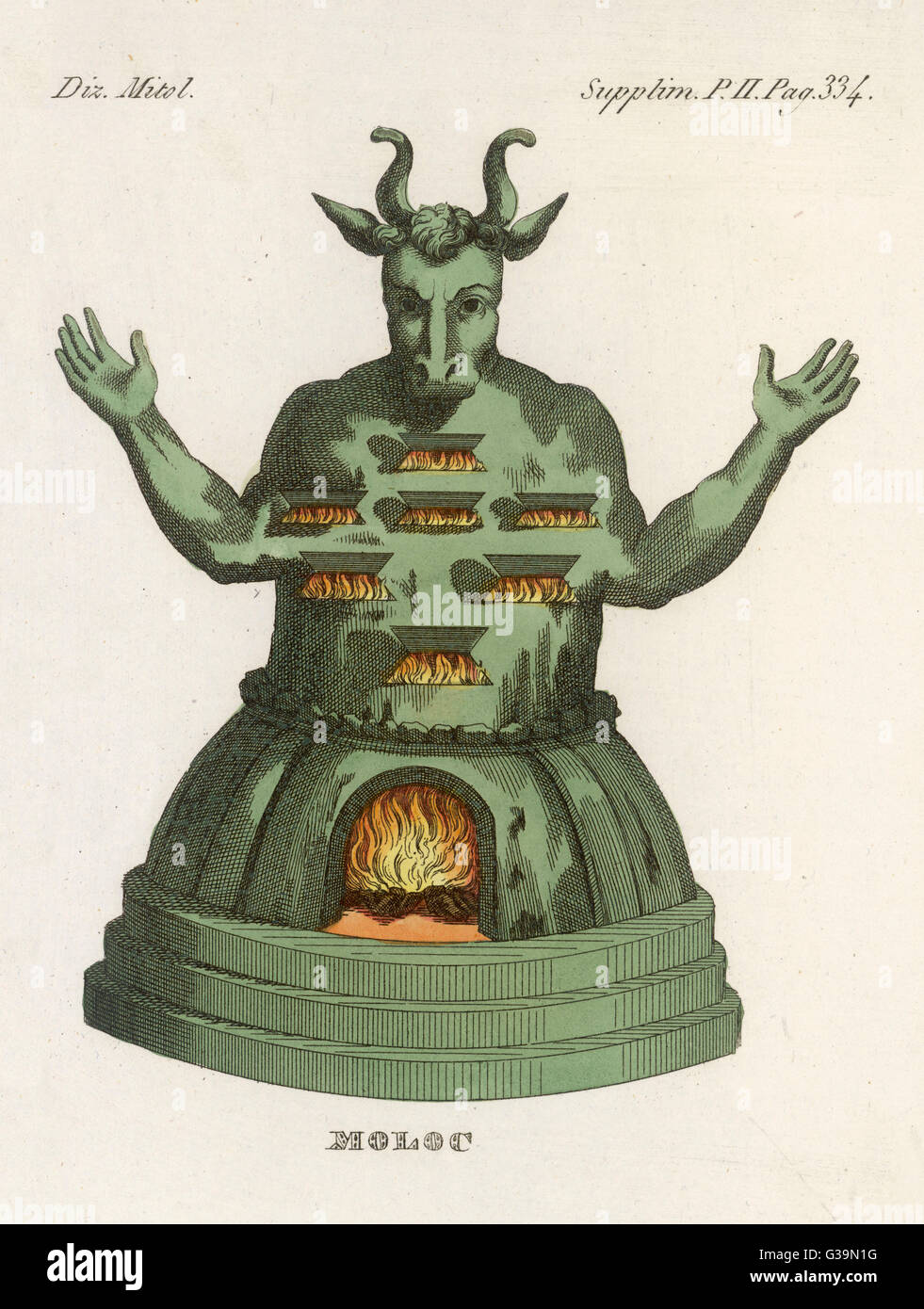 MOLOCH the Phoenician deity to whom live children were sacrificed by fire Date: 7th century BC Stock Photohttps://www.alamy.com/image-license-details/?v=1https://www.alamy.com/stock-photo-moloch-the-phoenician-deity-to-whom-live-children-were-sacrificed-105320252.html
MOLOCH the Phoenician deity to whom live children were sacrificed by fire Date: 7th century BC Stock Photohttps://www.alamy.com/image-license-details/?v=1https://www.alamy.com/stock-photo-moloch-the-phoenician-deity-to-whom-live-children-were-sacrificed-105320252.htmlRMG39N1G–MOLOCH the Phoenician deity to whom live children were sacrificed by fire Date: 7th century BC
 Lapis Stamp Seal, 8th-7th Century BC Stock Photohttps://www.alamy.com/image-license-details/?v=1https://www.alamy.com/stock-photo-lapis-stamp-seal-8th-7th-century-bc-135090856.html
Lapis Stamp Seal, 8th-7th Century BC Stock Photohttps://www.alamy.com/image-license-details/?v=1https://www.alamy.com/stock-photo-lapis-stamp-seal-8th-7th-century-bc-135090856.htmlRMHRNWNC–Lapis Stamp Seal, 8th-7th Century BC
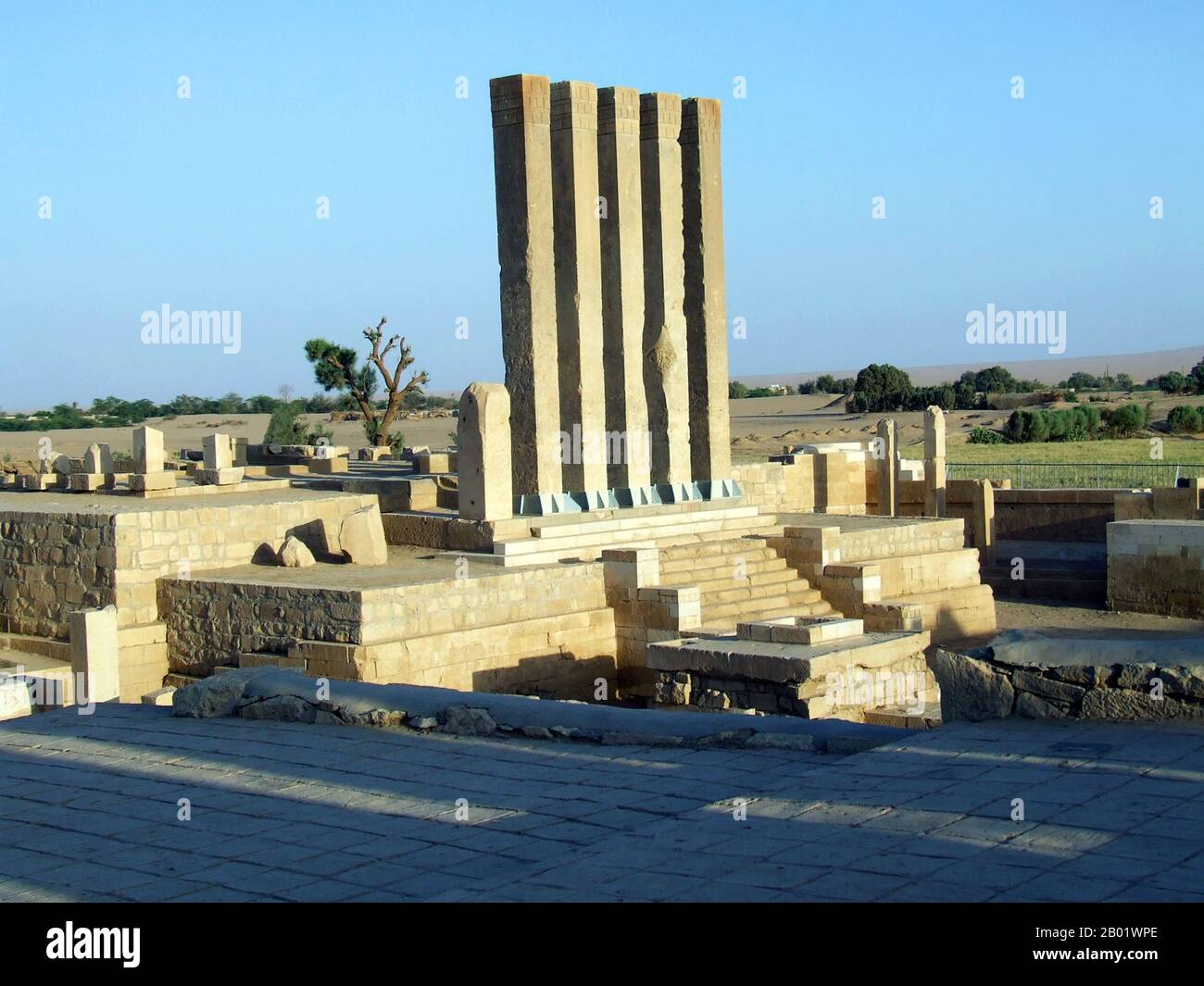 Yemen: The Temple of Awwam (Mahram Bilqis) dedicated to the Moon God Almaqah at Ma'rib, former capital of the Sabaean Kingdom, c. 7th-5th century BCE. Ma'rib or Marib is the capital city of the Ma'rib Governorate, Yemen and was the capital of the Sabaean kingdom, which some scholars believe to be the ancient Sheba of biblical fame. It is located at approximately 120 kilometres east of Yemen's modern capital, Sana'a. Stock Photohttps://www.alamy.com/image-license-details/?v=1https://www.alamy.com/yemen-the-temple-of-awwam-mahram-bilqis-dedicated-to-the-moon-god-almaqah-at-marib-former-capital-of-the-sabaean-kingdom-c-7th-5th-century-bce-marib-or-marib-is-the-capital-city-of-the-marib-governorate-yemen-and-was-the-capital-of-the-sabaean-kingdom-which-some-scholars-believe-to-be-the-ancient-sheba-of-biblical-fame-it-is-located-at-approximately-120-kilometres-east-of-yemens-modern-capital-sanaa-image344249542.html
Yemen: The Temple of Awwam (Mahram Bilqis) dedicated to the Moon God Almaqah at Ma'rib, former capital of the Sabaean Kingdom, c. 7th-5th century BCE. Ma'rib or Marib is the capital city of the Ma'rib Governorate, Yemen and was the capital of the Sabaean kingdom, which some scholars believe to be the ancient Sheba of biblical fame. It is located at approximately 120 kilometres east of Yemen's modern capital, Sana'a. Stock Photohttps://www.alamy.com/image-license-details/?v=1https://www.alamy.com/yemen-the-temple-of-awwam-mahram-bilqis-dedicated-to-the-moon-god-almaqah-at-marib-former-capital-of-the-sabaean-kingdom-c-7th-5th-century-bce-marib-or-marib-is-the-capital-city-of-the-marib-governorate-yemen-and-was-the-capital-of-the-sabaean-kingdom-which-some-scholars-believe-to-be-the-ancient-sheba-of-biblical-fame-it-is-located-at-approximately-120-kilometres-east-of-yemens-modern-capital-sanaa-image344249542.htmlRM2B01WPE–Yemen: The Temple of Awwam (Mahram Bilqis) dedicated to the Moon God Almaqah at Ma'rib, former capital of the Sabaean Kingdom, c. 7th-5th century BCE. Ma'rib or Marib is the capital city of the Ma'rib Governorate, Yemen and was the capital of the Sabaean kingdom, which some scholars believe to be the ancient Sheba of biblical fame. It is located at approximately 120 kilometres east of Yemen's modern capital, Sana'a.
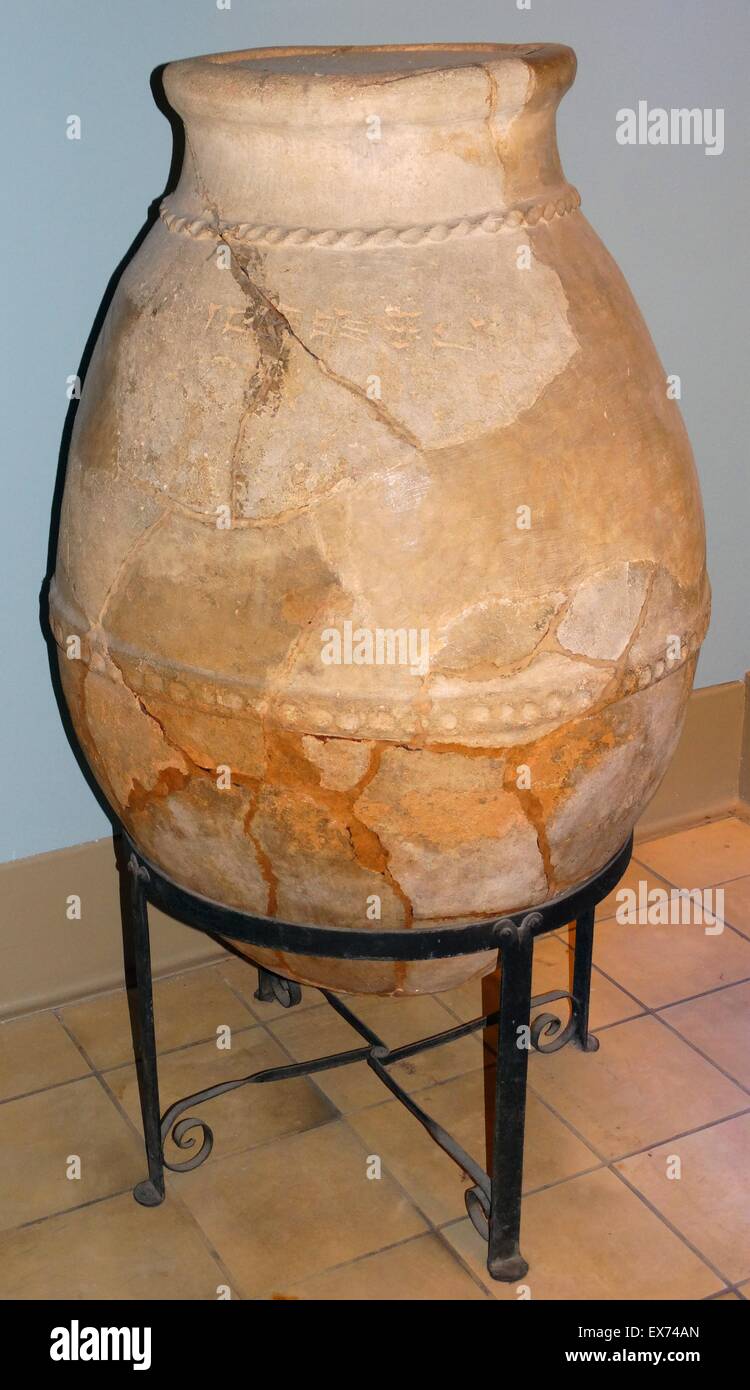 Storage Jar, Assyrian, late 7th century BC From Nimrud. This jar was found in one of the wine-cellars in the arsenal at Nimrud Stock Photohttps://www.alamy.com/image-license-details/?v=1https://www.alamy.com/stock-photo-storage-jar-assyrian-late-7th-century-bc-from-nimrud-this-jar-was-84979629.html
Storage Jar, Assyrian, late 7th century BC From Nimrud. This jar was found in one of the wine-cellars in the arsenal at Nimrud Stock Photohttps://www.alamy.com/image-license-details/?v=1https://www.alamy.com/stock-photo-storage-jar-assyrian-late-7th-century-bc-from-nimrud-this-jar-was-84979629.htmlRMEX74AN–Storage Jar, Assyrian, late 7th century BC From Nimrud. This jar was found in one of the wine-cellars in the arsenal at Nimrud
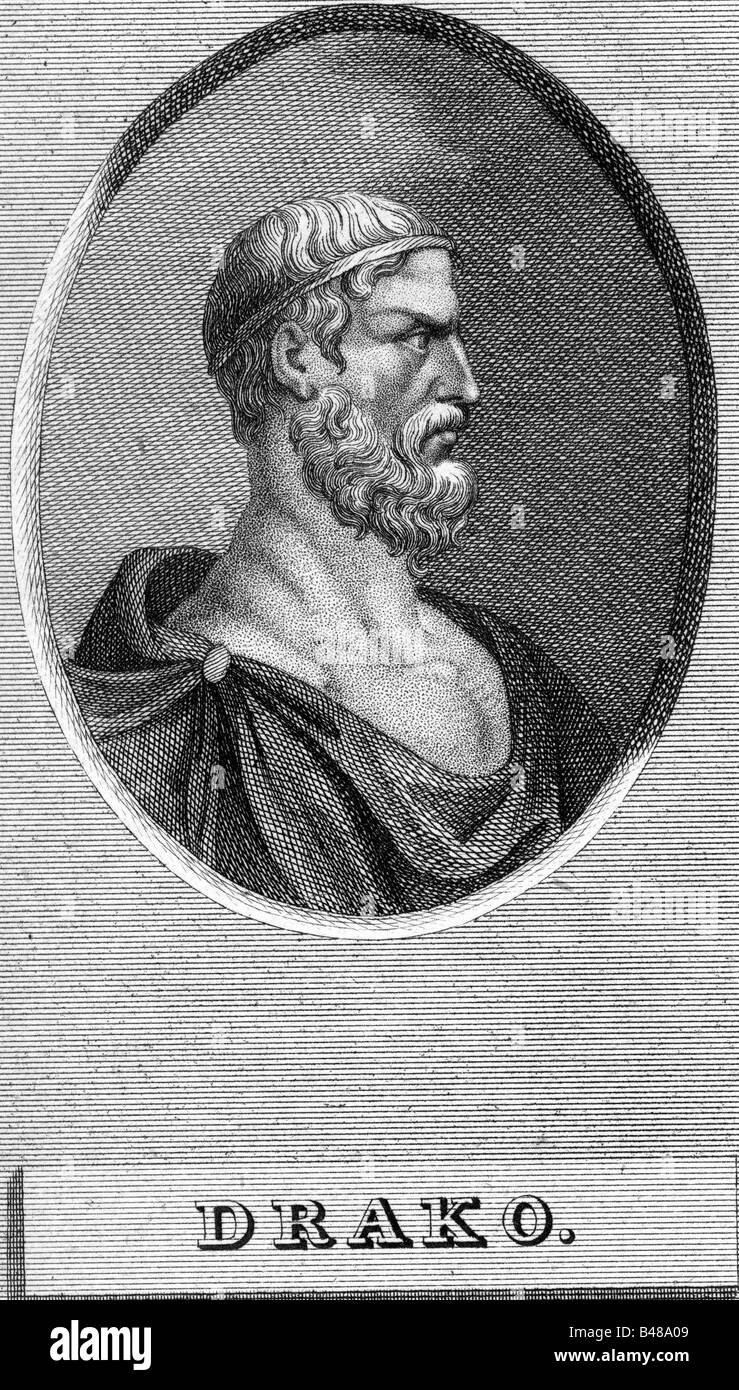 Draco, first lawgiver of ancient Athens, 621 BC, portrait, side view, engraving, circa 18th century, Artist's Copyright has not to be cleared Stock Photohttps://www.alamy.com/image-license-details/?v=1https://www.alamy.com/stock-photo-draco-first-lawgiver-of-ancient-athens-621-bc-portrait-side-view-engraving-19852457.html
Draco, first lawgiver of ancient Athens, 621 BC, portrait, side view, engraving, circa 18th century, Artist's Copyright has not to be cleared Stock Photohttps://www.alamy.com/image-license-details/?v=1https://www.alamy.com/stock-photo-draco-first-lawgiver-of-ancient-athens-621-bc-portrait-side-view-engraving-19852457.htmlRMB48A09–Draco, first lawgiver of ancient Athens, 621 BC, portrait, side view, engraving, circa 18th century, Artist's Copyright has not to be cleared
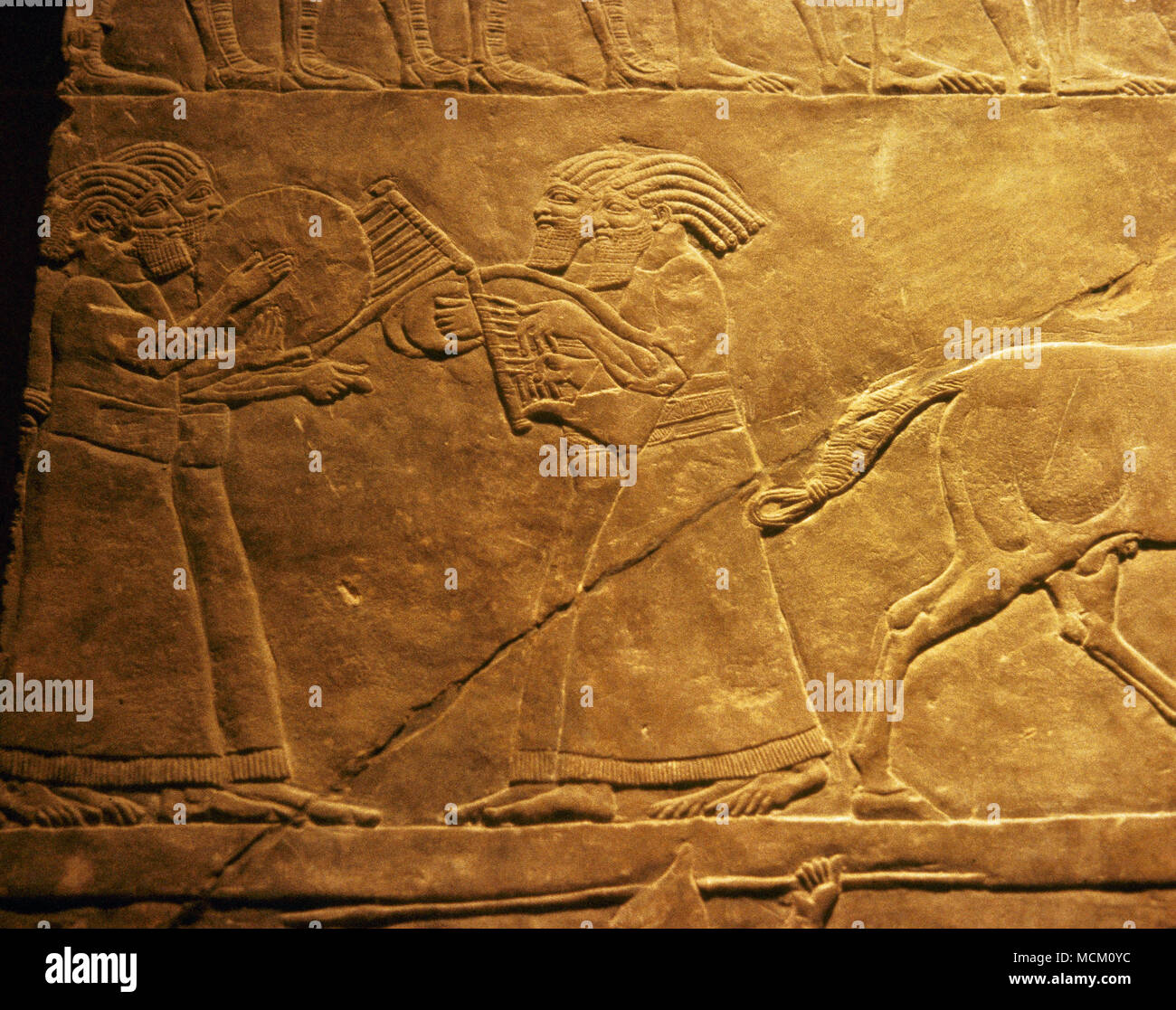 Palace of Ashurbanipal, Nineveh, Iraq. Relief, detail. Music scene. Upper Mesopotamia. Neo-Assyrian Empire, 7th century BC. Louvre Museum. Paris, France. Stock Photohttps://www.alamy.com/image-license-details/?v=1https://www.alamy.com/palace-of-ashurbanipal-nineveh-iraq-relief-detail-music-scene-upper-mesopotamia-neo-assyrian-empire-7th-century-bc-louvre-museum-paris-france-image179919360.html
Palace of Ashurbanipal, Nineveh, Iraq. Relief, detail. Music scene. Upper Mesopotamia. Neo-Assyrian Empire, 7th century BC. Louvre Museum. Paris, France. Stock Photohttps://www.alamy.com/image-license-details/?v=1https://www.alamy.com/palace-of-ashurbanipal-nineveh-iraq-relief-detail-music-scene-upper-mesopotamia-neo-assyrian-empire-7th-century-bc-louvre-museum-paris-france-image179919360.htmlRMMCM0YC–Palace of Ashurbanipal, Nineveh, Iraq. Relief, detail. Music scene. Upper Mesopotamia. Neo-Assyrian Empire, 7th century BC. Louvre Museum. Paris, France.
 Silver Statuette Priestess Kybele 7th Century BC Bayindir Elmali Turkey Greek Greece Stock Photohttps://www.alamy.com/image-license-details/?v=1https://www.alamy.com/stock-photo-silver-statuette-priestess-kybele-7th-century-bc-bayindir-elmali-turkey-38110507.html
Silver Statuette Priestess Kybele 7th Century BC Bayindir Elmali Turkey Greek Greece Stock Photohttps://www.alamy.com/image-license-details/?v=1https://www.alamy.com/stock-photo-silver-statuette-priestess-kybele-7th-century-bc-bayindir-elmali-turkey-38110507.htmlRMC6029F–Silver Statuette Priestess Kybele 7th Century BC Bayindir Elmali Turkey Greek Greece
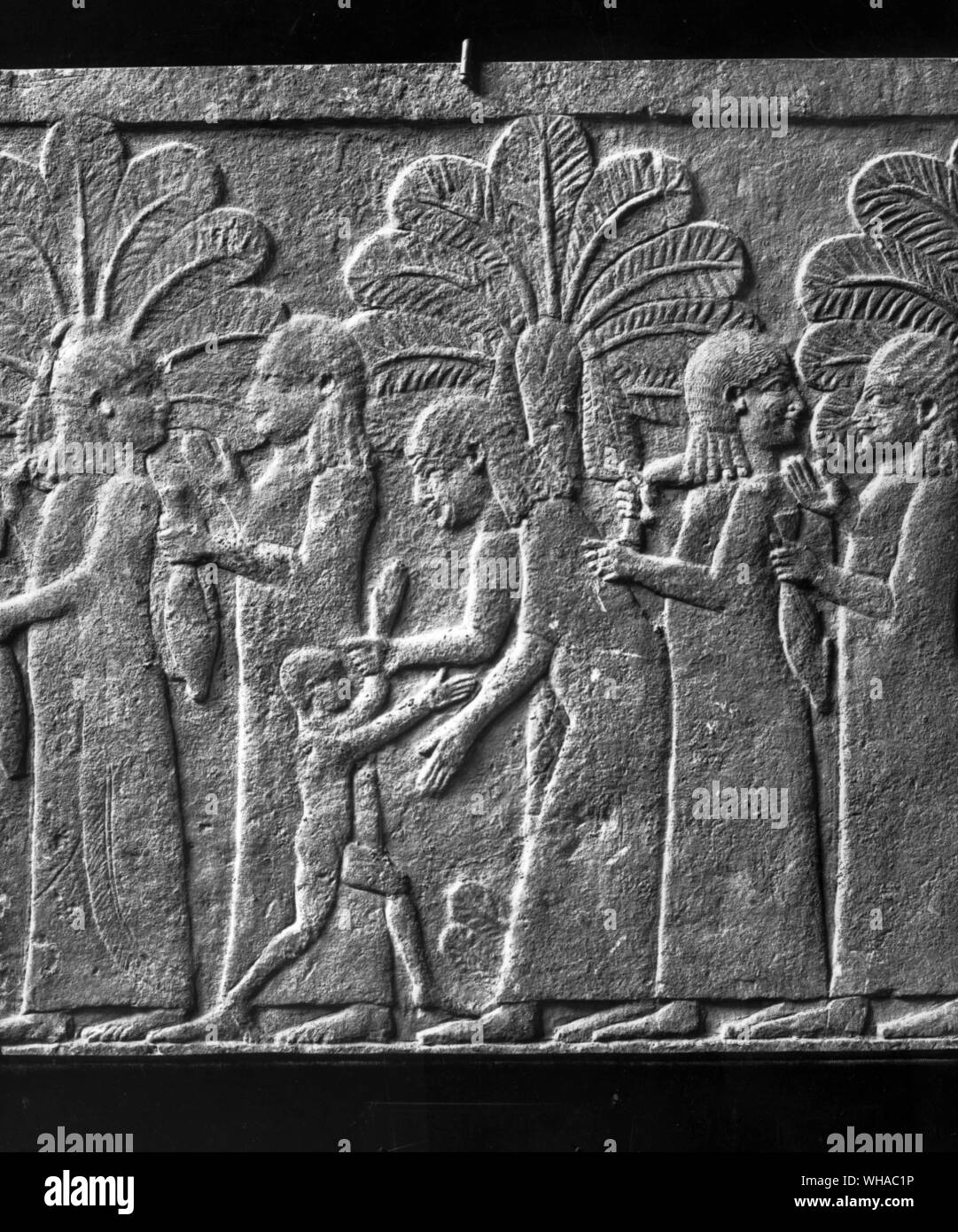 Five women prisoners in a palm grove. Assyrian 7th century BC. limestone Stock Photohttps://www.alamy.com/image-license-details/?v=1https://www.alamy.com/five-women-prisoners-in-a-palm-grove-assyrian-7th-century-bc-limestone-image268833650.html
Five women prisoners in a palm grove. Assyrian 7th century BC. limestone Stock Photohttps://www.alamy.com/image-license-details/?v=1https://www.alamy.com/five-women-prisoners-in-a-palm-grove-assyrian-7th-century-bc-limestone-image268833650.htmlRMWHAC1P–Five women prisoners in a palm grove. Assyrian 7th century BC. limestone
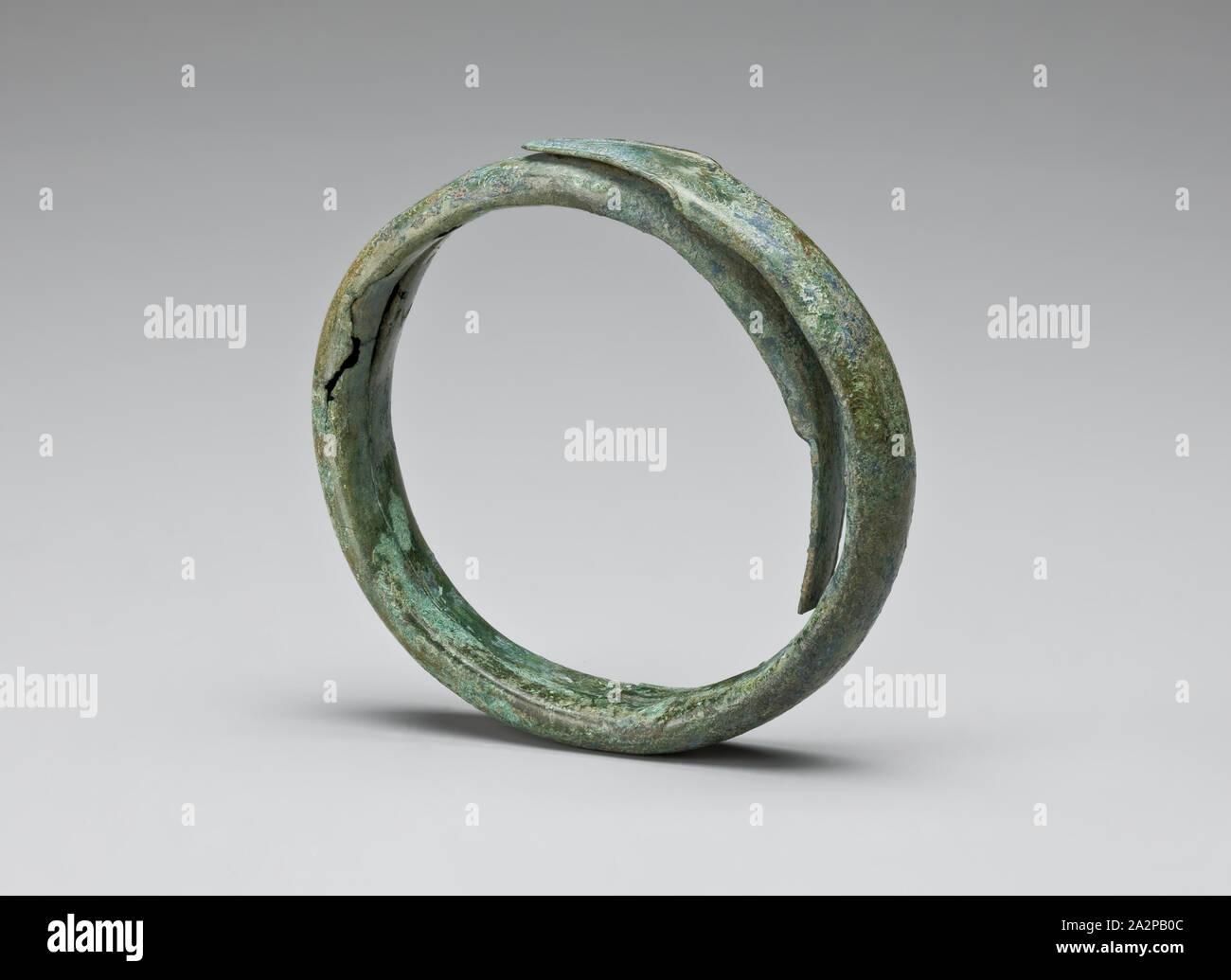 Villanovan, Italic, Bracelet, 8th/7th Century BC, bronze, Max. dia. 3 3/4, Max. Th. 3/4 Stock Photohttps://www.alamy.com/image-license-details/?v=1https://www.alamy.com/villanovan-italic-bracelet-8th7th-century-bc-bronze-max-dia-3-34-max-th-34-image328717884.html
Villanovan, Italic, Bracelet, 8th/7th Century BC, bronze, Max. dia. 3 3/4, Max. Th. 3/4 Stock Photohttps://www.alamy.com/image-license-details/?v=1https://www.alamy.com/villanovan-italic-bracelet-8th7th-century-bc-bronze-max-dia-3-34-max-th-34-image328717884.htmlRM2A2PB0C–Villanovan, Italic, Bracelet, 8th/7th Century BC, bronze, Max. dia. 3 3/4, Max. Th. 3/4
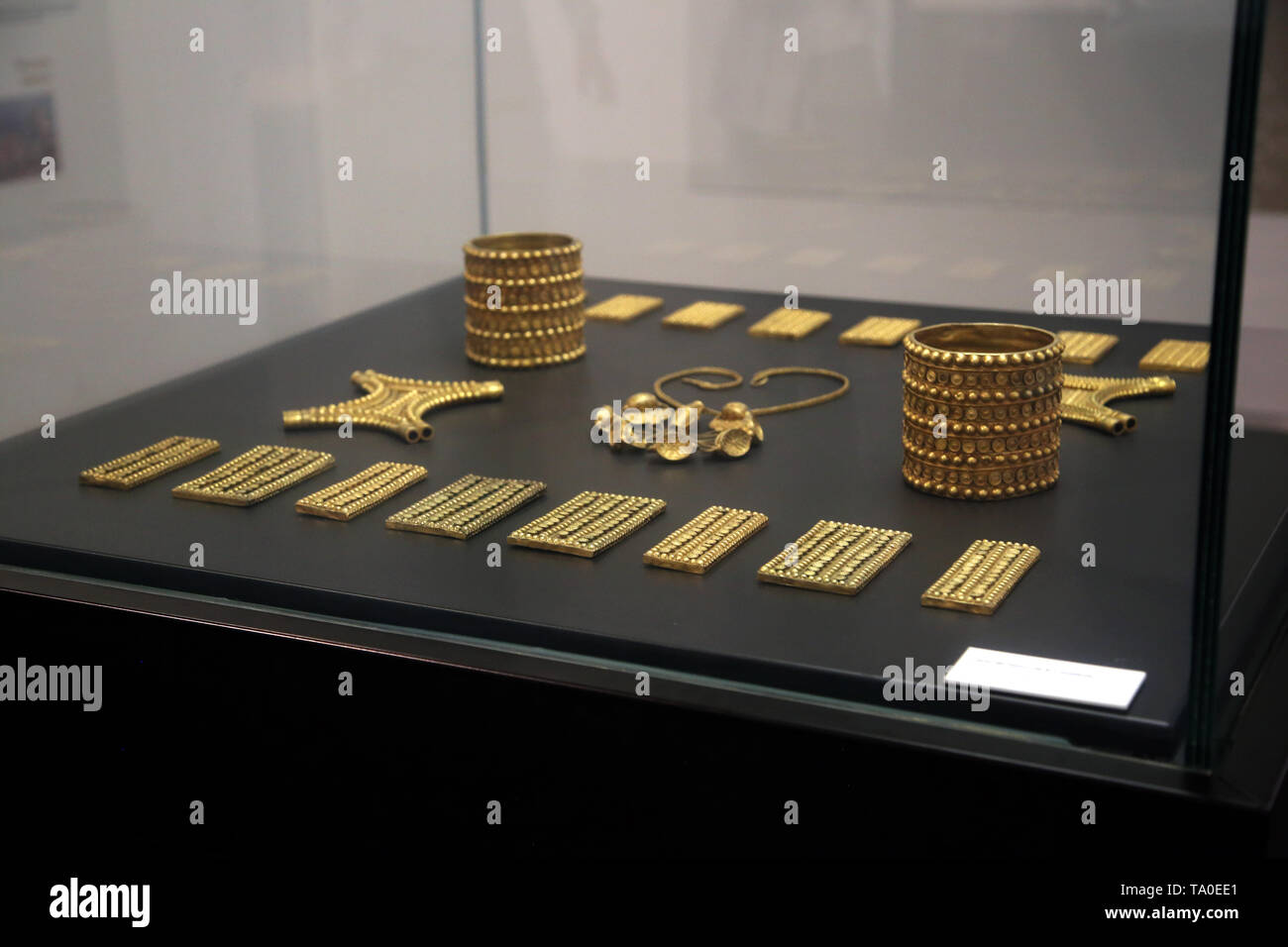 Treasure of El Carambolo. Tartessian and Phoecian culture. 5th-7th century BC. Camas, Andalusia, Spain. Archaeological Museum of Seville. Spain. Stock Photohttps://www.alamy.com/image-license-details/?v=1https://www.alamy.com/treasure-of-el-carambolo-tartessian-and-phoecian-culture-5th-7th-century-bc-camas-andalusia-spain-archaeological-museum-of-seville-spain-image247103081.html
Treasure of El Carambolo. Tartessian and Phoecian culture. 5th-7th century BC. Camas, Andalusia, Spain. Archaeological Museum of Seville. Spain. Stock Photohttps://www.alamy.com/image-license-details/?v=1https://www.alamy.com/treasure-of-el-carambolo-tartessian-and-phoecian-culture-5th-7th-century-bc-camas-andalusia-spain-archaeological-museum-of-seville-spain-image247103081.htmlRMTA0EE1–Treasure of El Carambolo. Tartessian and Phoecian culture. 5th-7th century BC. Camas, Andalusia, Spain. Archaeological Museum of Seville. Spain.
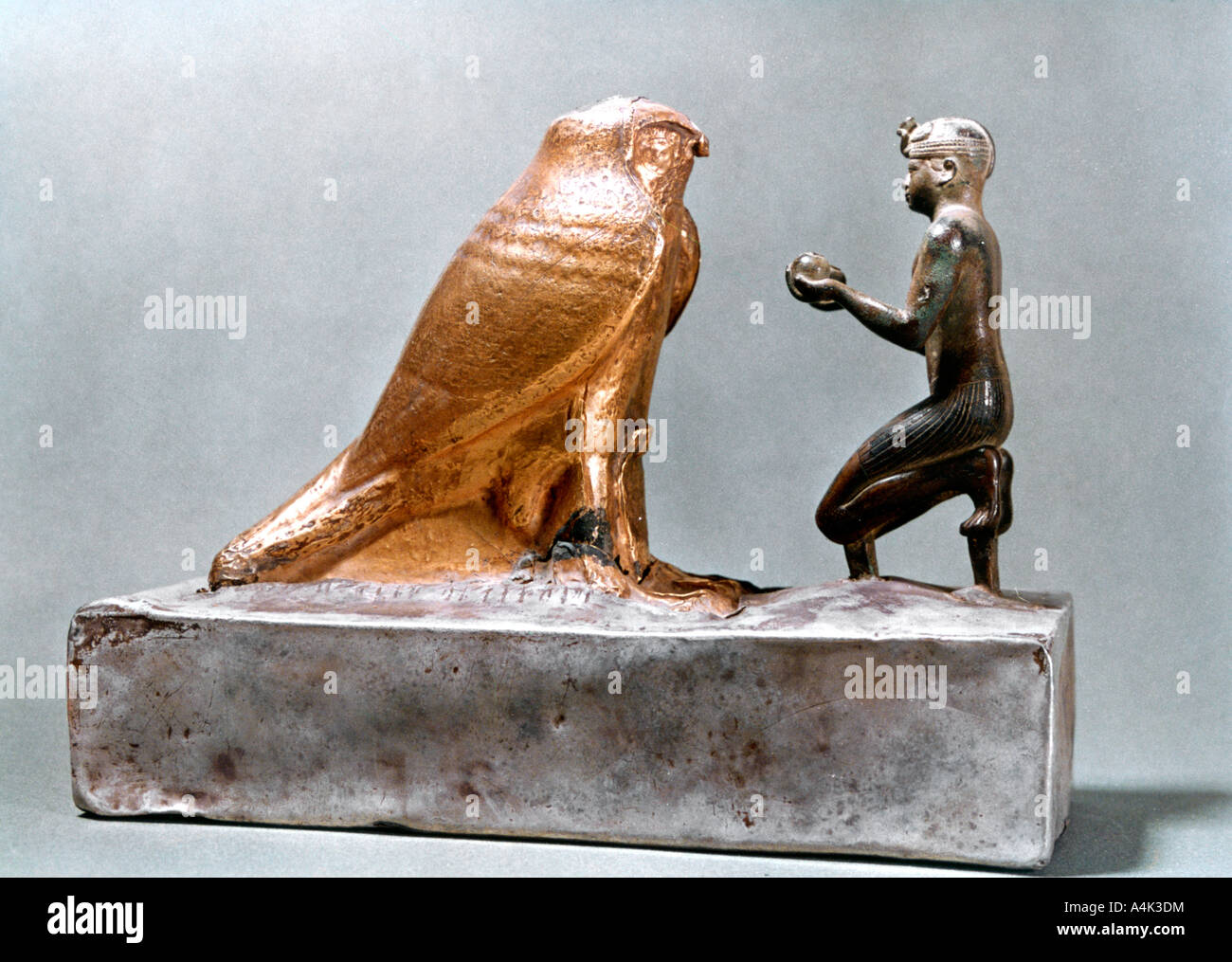 Taharqa in front of the falcon Hemen, Ancient Egyptian, 7th century BC. Artist: Unknown Stock Photohttps://www.alamy.com/image-license-details/?v=1https://www.alamy.com/stock-photo-taharqa-in-front-of-the-falcon-hemen-ancient-egyptian-7th-century-11068111.html
Taharqa in front of the falcon Hemen, Ancient Egyptian, 7th century BC. Artist: Unknown Stock Photohttps://www.alamy.com/image-license-details/?v=1https://www.alamy.com/stock-photo-taharqa-in-front-of-the-falcon-hemen-ancient-egyptian-7th-century-11068111.htmlRMA4K3DM–Taharqa in front of the falcon Hemen, Ancient Egyptian, 7th century BC. Artist: Unknown
 Delphi - the Pythian Priestess who also served as the oracle on the tripod in Apollo's Temple. The Pythia was established at the latest in the 8th century BC, and was widely credited for her prophecies inspired by being filled by the spirit of the god (or enthusiasmos), in this case Apollo. The Pythian priestess emerged pre-eminent by the end of 7th century BC and would continue to be consulted until the 4th century AD. Stock Photohttps://www.alamy.com/image-license-details/?v=1https://www.alamy.com/stock-photo-delphi-the-pythian-priestess-who-also-served-as-the-oracle-on-the-148188006.html
Delphi - the Pythian Priestess who also served as the oracle on the tripod in Apollo's Temple. The Pythia was established at the latest in the 8th century BC, and was widely credited for her prophecies inspired by being filled by the spirit of the god (or enthusiasmos), in this case Apollo. The Pythian priestess emerged pre-eminent by the end of 7th century BC and would continue to be consulted until the 4th century AD. Stock Photohttps://www.alamy.com/image-license-details/?v=1https://www.alamy.com/stock-photo-delphi-the-pythian-priestess-who-also-served-as-the-oracle-on-the-148188006.htmlRMJH2F8P–Delphi - the Pythian Priestess who also served as the oracle on the tripod in Apollo's Temple. The Pythia was established at the latest in the 8th century BC, and was widely credited for her prophecies inspired by being filled by the spirit of the god (or enthusiasmos), in this case Apollo. The Pythian priestess emerged pre-eminent by the end of 7th century BC and would continue to be consulted until the 4th century AD.
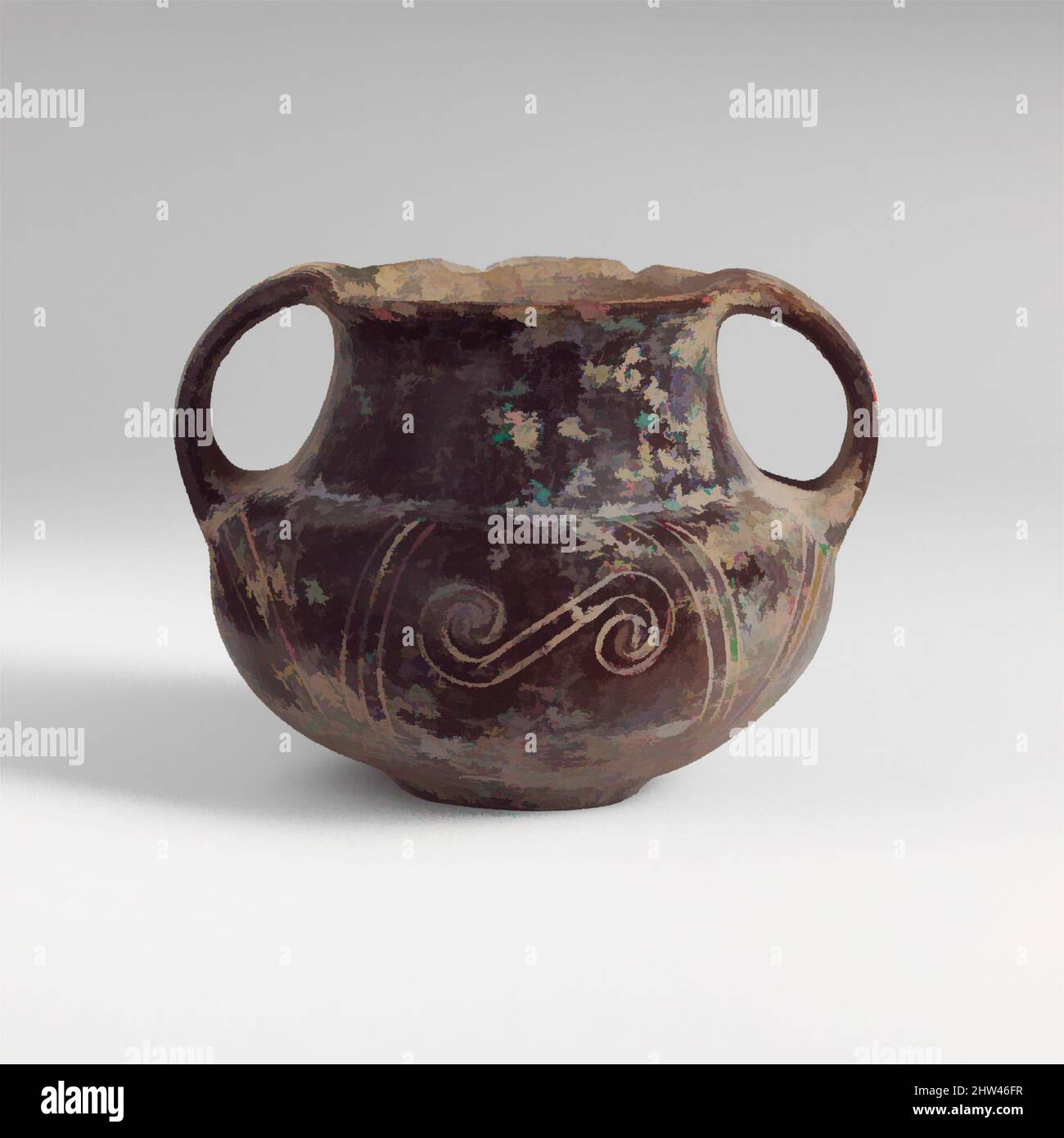 Art inspired by Terracotta two-handled jar, Orientalizing, early 7th–mid 7th century BC, Italic, Villanovan, Terracotta, H. 2 5/8 in. (6.7 cm), Vases, Reddish-brown, two-handled, with incised curvilinear decoration, Classic works modernized by Artotop with a splash of modernity. Shapes, color and value, eye-catching visual impact on art. Emotions through freedom of artworks in a contemporary way. A timeless message pursuing a wildly creative new direction. Artists turning to the digital medium and creating the Artotop NFT Stock Photohttps://www.alamy.com/image-license-details/?v=1https://www.alamy.com/art-inspired-by-terracotta-two-handled-jar-orientalizing-early-7thmid-7th-century-bc-italic-villanovan-terracotta-h-2-58-in-67-cm-vases-reddish-brown-two-handled-with-incised-curvilinear-decoration-classic-works-modernized-by-artotop-with-a-splash-of-modernity-shapes-color-and-value-eye-catching-visual-impact-on-art-emotions-through-freedom-of-artworks-in-a-contemporary-way-a-timeless-message-pursuing-a-wildly-creative-new-direction-artists-turning-to-the-digital-medium-and-creating-the-artotop-nft-image462928923.html
Art inspired by Terracotta two-handled jar, Orientalizing, early 7th–mid 7th century BC, Italic, Villanovan, Terracotta, H. 2 5/8 in. (6.7 cm), Vases, Reddish-brown, two-handled, with incised curvilinear decoration, Classic works modernized by Artotop with a splash of modernity. Shapes, color and value, eye-catching visual impact on art. Emotions through freedom of artworks in a contemporary way. A timeless message pursuing a wildly creative new direction. Artists turning to the digital medium and creating the Artotop NFT Stock Photohttps://www.alamy.com/image-license-details/?v=1https://www.alamy.com/art-inspired-by-terracotta-two-handled-jar-orientalizing-early-7thmid-7th-century-bc-italic-villanovan-terracotta-h-2-58-in-67-cm-vases-reddish-brown-two-handled-with-incised-curvilinear-decoration-classic-works-modernized-by-artotop-with-a-splash-of-modernity-shapes-color-and-value-eye-catching-visual-impact-on-art-emotions-through-freedom-of-artworks-in-a-contemporary-way-a-timeless-message-pursuing-a-wildly-creative-new-direction-artists-turning-to-the-digital-medium-and-creating-the-artotop-nft-image462928923.htmlRF2HW46FR–Art inspired by Terracotta two-handled jar, Orientalizing, early 7th–mid 7th century BC, Italic, Villanovan, Terracotta, H. 2 5/8 in. (6.7 cm), Vases, Reddish-brown, two-handled, with incised curvilinear decoration, Classic works modernized by Artotop with a splash of modernity. Shapes, color and value, eye-catching visual impact on art. Emotions through freedom of artworks in a contemporary way. A timeless message pursuing a wildly creative new direction. Artists turning to the digital medium and creating the Artotop NFT
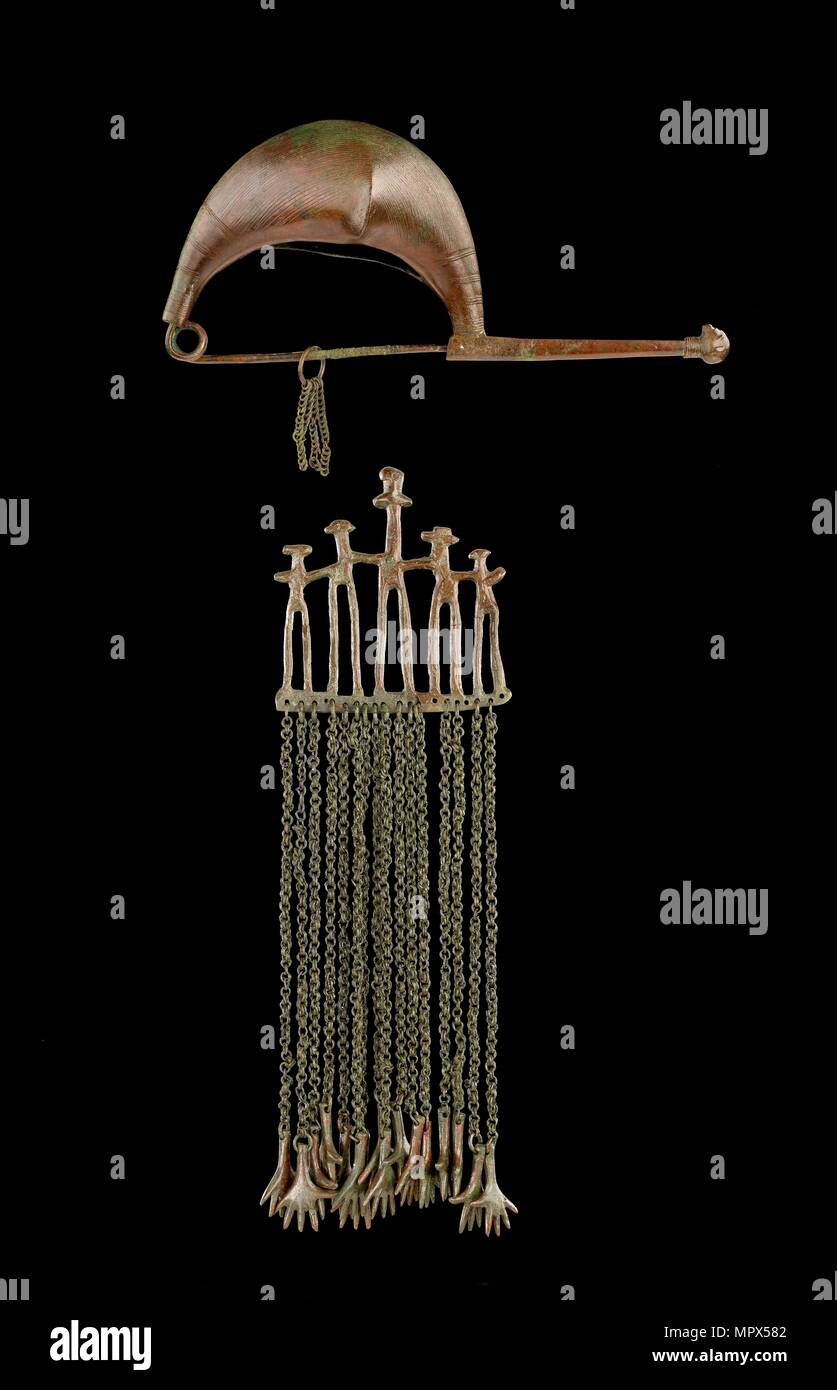 Fibula, 7th century BC. Artist: Unknown. Stock Photohttps://www.alamy.com/image-license-details/?v=1https://www.alamy.com/fibula-7th-century-bc-artist-unknown-image186201010.html
Fibula, 7th century BC. Artist: Unknown. Stock Photohttps://www.alamy.com/image-license-details/?v=1https://www.alamy.com/fibula-7th-century-bc-artist-unknown-image186201010.htmlRMMPX582–Fibula, 7th century BC. Artist: Unknown.
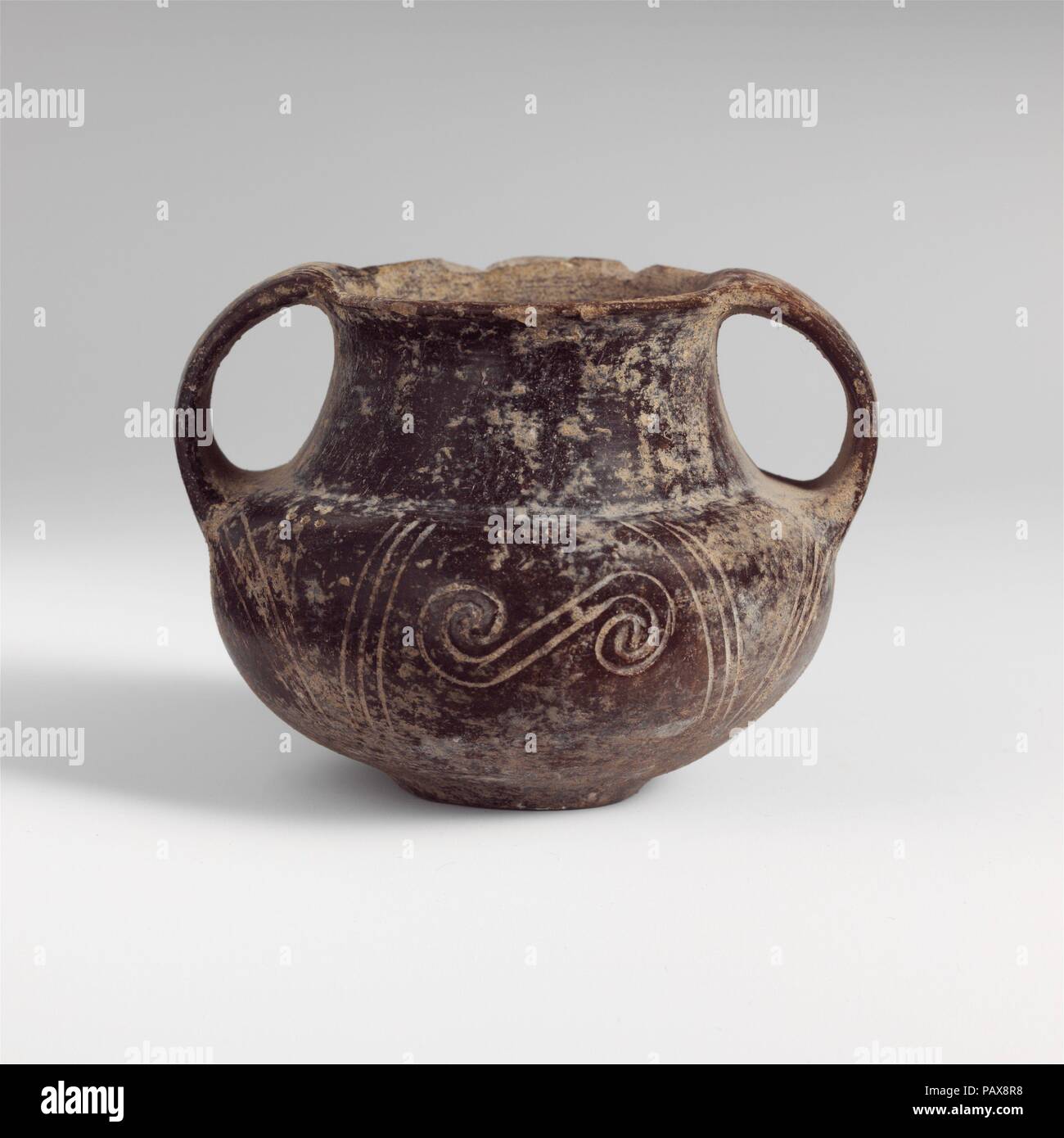 Terracotta two-handled jar. Culture: Italic, Villanovan. Dimensions: H. 2 5/8 in. (6.7 cm). Date: early 7th-mid 7th century BC. Reddish-brown, two-handled, with incised curvilinear decoration. Museum: Metropolitan Museum of Art, New York, USA. Stock Photohttps://www.alamy.com/image-license-details/?v=1https://www.alamy.com/terracotta-two-handled-jar-culture-italic-villanovan-dimensions-h-2-58-in-67-cm-date-early-7th-mid-7th-century-bc-reddish-brown-two-handled-with-incised-curvilinear-decoration-museum-metropolitan-museum-of-art-new-york-usa-image213248652.html
Terracotta two-handled jar. Culture: Italic, Villanovan. Dimensions: H. 2 5/8 in. (6.7 cm). Date: early 7th-mid 7th century BC. Reddish-brown, two-handled, with incised curvilinear decoration. Museum: Metropolitan Museum of Art, New York, USA. Stock Photohttps://www.alamy.com/image-license-details/?v=1https://www.alamy.com/terracotta-two-handled-jar-culture-italic-villanovan-dimensions-h-2-58-in-67-cm-date-early-7th-mid-7th-century-bc-reddish-brown-two-handled-with-incised-curvilinear-decoration-museum-metropolitan-museum-of-art-new-york-usa-image213248652.htmlRMPAX8R8–Terracotta two-handled jar. Culture: Italic, Villanovan. Dimensions: H. 2 5/8 in. (6.7 cm). Date: early 7th-mid 7th century BC. Reddish-brown, two-handled, with incised curvilinear decoration. Museum: Metropolitan Museum of Art, New York, USA.
 Nineveh.Limestone relief showing soldiers and horse.7th century BC Stock Photohttps://www.alamy.com/image-license-details/?v=1https://www.alamy.com/stock-image-ninevehlimestone-relief-showing-soldiers-and-horse7th-century-bc-164973944.html
Nineveh.Limestone relief showing soldiers and horse.7th century BC Stock Photohttps://www.alamy.com/image-license-details/?v=1https://www.alamy.com/stock-image-ninevehlimestone-relief-showing-soldiers-and-horse7th-century-bc-164973944.htmlRMKGB5XG–Nineveh.Limestone relief showing soldiers and horse.7th century BC
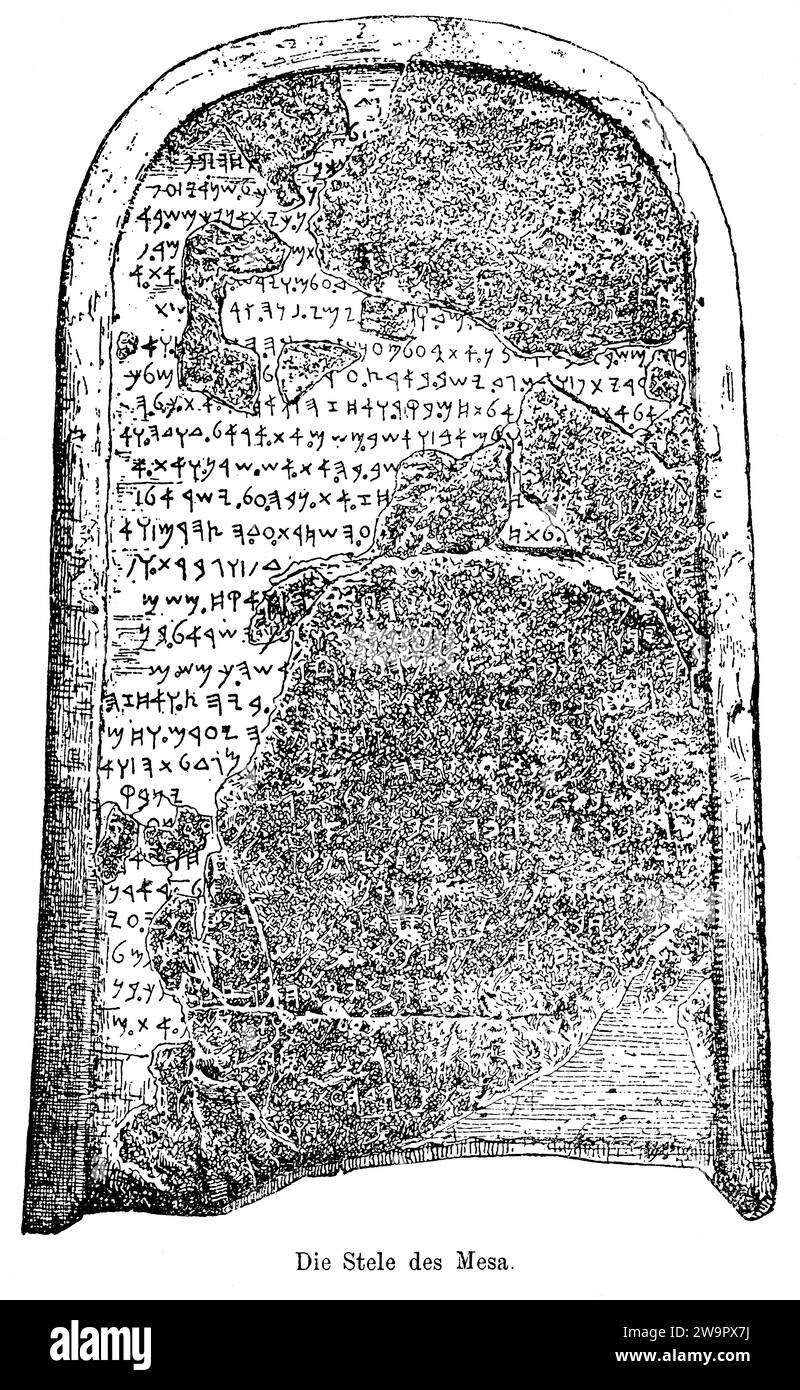 Stele of Mesa, King of Moab, mortuary stone, height 1m, width 60 cm, 7th century BC, cemetery, material baslat, inscription, Moabite dialect Stock Photohttps://www.alamy.com/image-license-details/?v=1https://www.alamy.com/stele-of-mesa-king-of-moab-mortuary-stone-height-1m-width-60-cm-7th-century-bc-cemetery-material-baslat-inscription-moabite-dialect-image591187958.html
Stele of Mesa, King of Moab, mortuary stone, height 1m, width 60 cm, 7th century BC, cemetery, material baslat, inscription, Moabite dialect Stock Photohttps://www.alamy.com/image-license-details/?v=1https://www.alamy.com/stele-of-mesa-king-of-moab-mortuary-stone-height-1m-width-60-cm-7th-century-bc-cemetery-material-baslat-inscription-moabite-dialect-image591187958.htmlRM2W9PX7J–Stele of Mesa, King of Moab, mortuary stone, height 1m, width 60 cm, 7th century BC, cemetery, material baslat, inscription, Moabite dialect
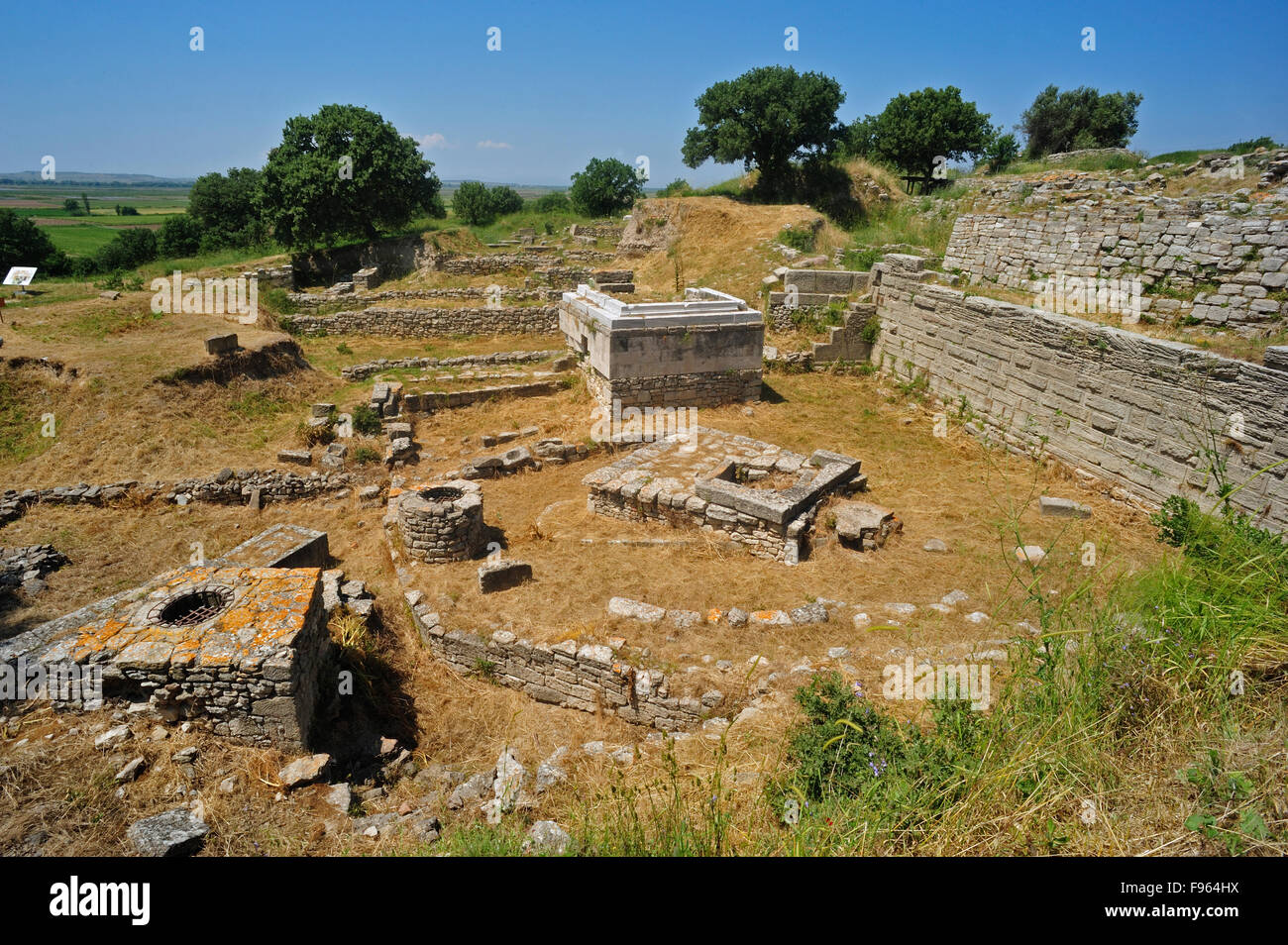 religious sanctuary from Troy 8, 7th century BC, Troy Historic Site, Biga Peninsula, Turkey Stock Photohttps://www.alamy.com/image-license-details/?v=1https://www.alamy.com/stock-photo-religious-sanctuary-from-troy-8-7th-century-bc-troy-historic-site-91719094.html
religious sanctuary from Troy 8, 7th century BC, Troy Historic Site, Biga Peninsula, Turkey Stock Photohttps://www.alamy.com/image-license-details/?v=1https://www.alamy.com/stock-photo-religious-sanctuary-from-troy-8-7th-century-bc-troy-historic-site-91719094.htmlRMF964HX–religious sanctuary from Troy 8, 7th century BC, Troy Historic Site, Biga Peninsula, Turkey
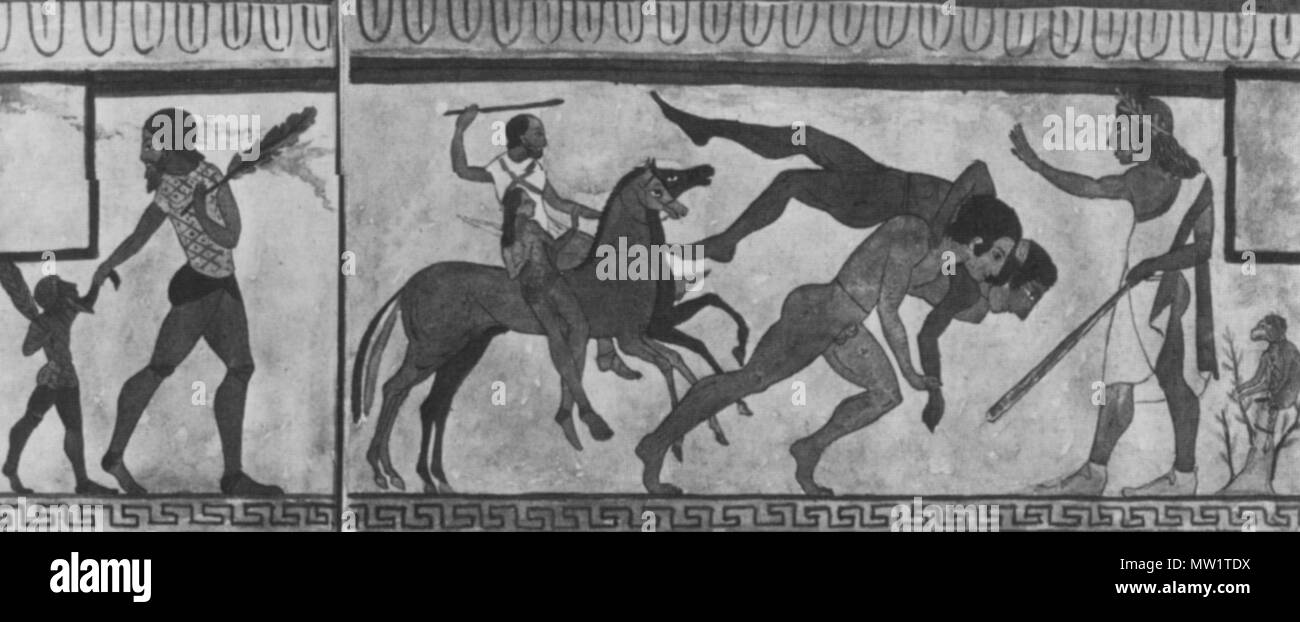 . Tomba della scimmia . end of 7th century BC. see filename or category 610 Tomba della scimmia 02 Stock Photohttps://www.alamy.com/image-license-details/?v=1https://www.alamy.com/tomba-della-scimmia-end-of-7th-century-bc-see-filename-or-category-610-tomba-della-scimmia-02-image187511238.html
. Tomba della scimmia . end of 7th century BC. see filename or category 610 Tomba della scimmia 02 Stock Photohttps://www.alamy.com/image-license-details/?v=1https://www.alamy.com/tomba-della-scimmia-end-of-7th-century-bc-see-filename-or-category-610-tomba-della-scimmia-02-image187511238.htmlRMMW1TDX–. Tomba della scimmia . end of 7th century BC. see filename or category 610 Tomba della scimmia 02
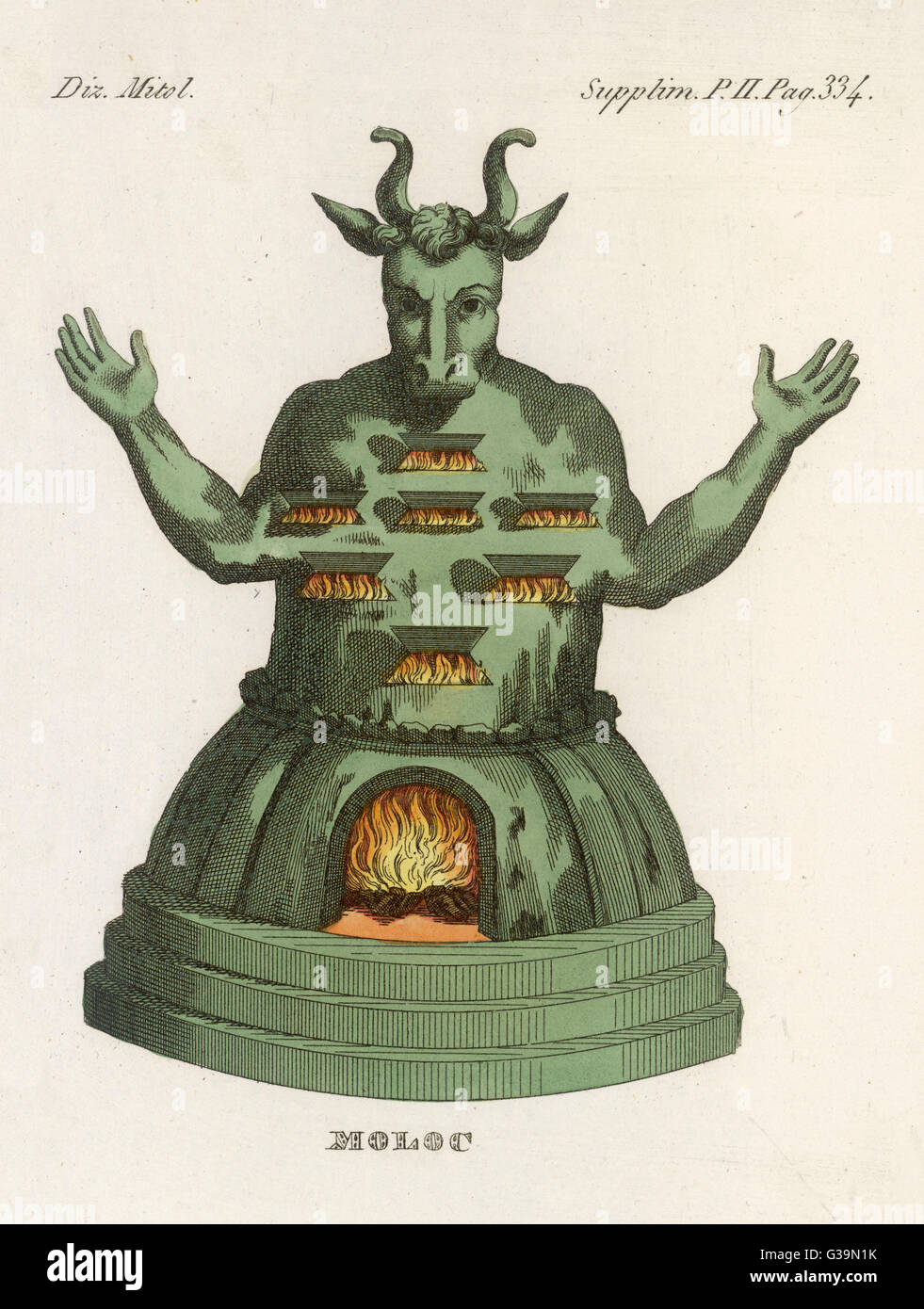 A Phoenician deity to whom live children were sacrificed by fire Date: 7th century BC Stock Photohttps://www.alamy.com/image-license-details/?v=1https://www.alamy.com/stock-photo-a-phoenician-deity-to-whom-live-children-were-sacrificed-by-fire-date-105320255.html
A Phoenician deity to whom live children were sacrificed by fire Date: 7th century BC Stock Photohttps://www.alamy.com/image-license-details/?v=1https://www.alamy.com/stock-photo-a-phoenician-deity-to-whom-live-children-were-sacrificed-by-fire-date-105320255.htmlRMG39N1K–A Phoenician deity to whom live children were sacrificed by fire Date: 7th century BC
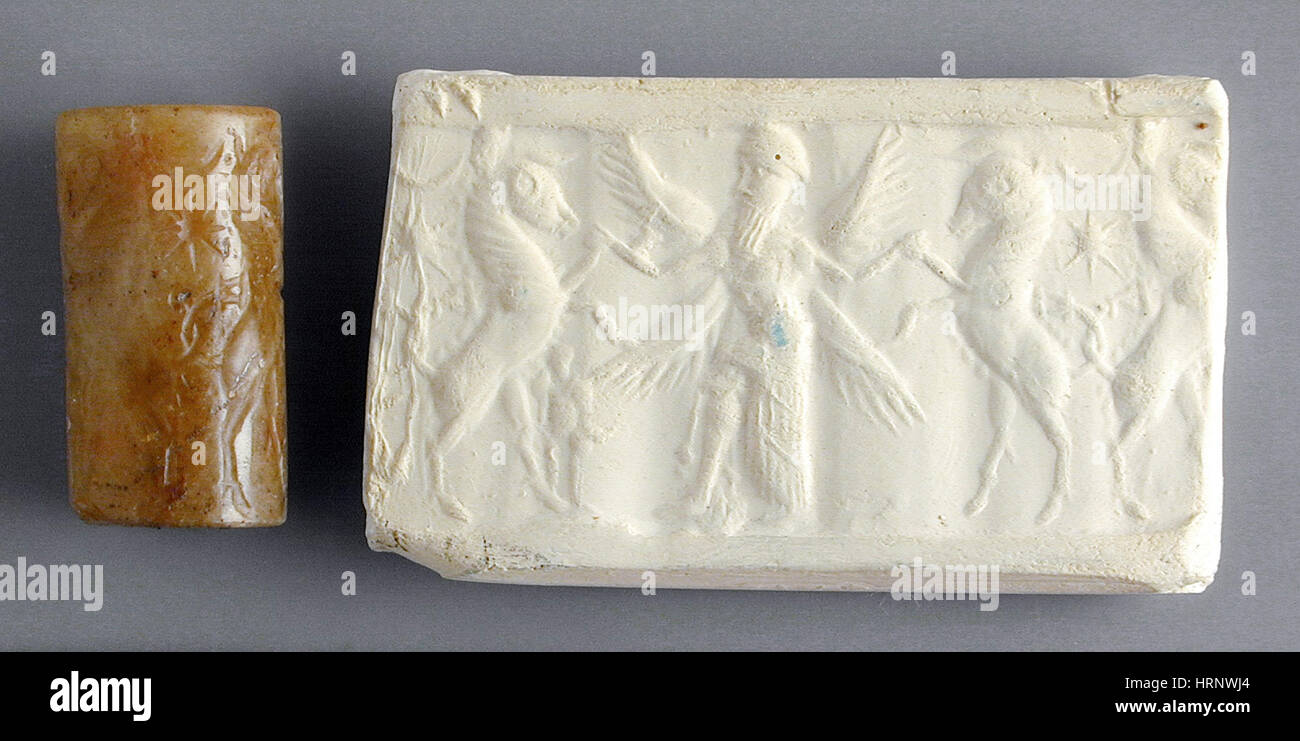 Mesopotamian Cylinder Seal, 7th Century BC Stock Photohttps://www.alamy.com/image-license-details/?v=1https://www.alamy.com/stock-photo-mesopotamian-cylinder-seal-7th-century-bc-135090764.html
Mesopotamian Cylinder Seal, 7th Century BC Stock Photohttps://www.alamy.com/image-license-details/?v=1https://www.alamy.com/stock-photo-mesopotamian-cylinder-seal-7th-century-bc-135090764.htmlRMHRNWJ4–Mesopotamian Cylinder Seal, 7th Century BC
 Yemen: A limestone altar dedicated to 'Almaqah, the Sun God of the South Arabian Kingdom of Saba', Marib, 7th-6th centuries BCE. South Arabia as a general term refers to several regions as currently recognised, in chief the Republic of Yemen; yet it has historically also included Najran, Jizan, and 'Asir which are presently in Saudi Arabia, and Dhofar presently in Oman. The frontiers of South Arabia as linguistically conceived would include the historic peoples speaking the related South Arabian languages as well as neighbouring dialects of Arabic, and their descendants. Stock Photohttps://www.alamy.com/image-license-details/?v=1https://www.alamy.com/yemen-a-limestone-altar-dedicated-to-almaqah-the-sun-god-of-the-south-arabian-kingdom-of-saba-marib-7th-6th-centuries-bce-south-arabia-as-a-general-term-refers-to-several-regions-as-currently-recognised-in-chief-the-republic-of-yemen-yet-it-has-historically-also-included-najran-jizan-and-asir-which-are-presently-in-saudi-arabia-and-dhofar-presently-in-oman-the-frontiers-of-south-arabia-as-linguistically-conceived-would-include-the-historic-peoples-speaking-the-related-south-arabian-languages-as-well-as-neighbouring-dialects-of-arabic-and-their-descendants-image344249666.html
Yemen: A limestone altar dedicated to 'Almaqah, the Sun God of the South Arabian Kingdom of Saba', Marib, 7th-6th centuries BCE. South Arabia as a general term refers to several regions as currently recognised, in chief the Republic of Yemen; yet it has historically also included Najran, Jizan, and 'Asir which are presently in Saudi Arabia, and Dhofar presently in Oman. The frontiers of South Arabia as linguistically conceived would include the historic peoples speaking the related South Arabian languages as well as neighbouring dialects of Arabic, and their descendants. Stock Photohttps://www.alamy.com/image-license-details/?v=1https://www.alamy.com/yemen-a-limestone-altar-dedicated-to-almaqah-the-sun-god-of-the-south-arabian-kingdom-of-saba-marib-7th-6th-centuries-bce-south-arabia-as-a-general-term-refers-to-several-regions-as-currently-recognised-in-chief-the-republic-of-yemen-yet-it-has-historically-also-included-najran-jizan-and-asir-which-are-presently-in-saudi-arabia-and-dhofar-presently-in-oman-the-frontiers-of-south-arabia-as-linguistically-conceived-would-include-the-historic-peoples-speaking-the-related-south-arabian-languages-as-well-as-neighbouring-dialects-of-arabic-and-their-descendants-image344249666.htmlRM2B01WXX–Yemen: A limestone altar dedicated to 'Almaqah, the Sun God of the South Arabian Kingdom of Saba', Marib, 7th-6th centuries BCE. South Arabia as a general term refers to several regions as currently recognised, in chief the Republic of Yemen; yet it has historically also included Najran, Jizan, and 'Asir which are presently in Saudi Arabia, and Dhofar presently in Oman. The frontiers of South Arabia as linguistically conceived would include the historic peoples speaking the related South Arabian languages as well as neighbouring dialects of Arabic, and their descendants.
 Anthropomorphic female statutte, Kaluraz, Iran, Iron Age 9th -7th century BC Stock Photohttps://www.alamy.com/image-license-details/?v=1https://www.alamy.com/anthropomorphic-female-statutte-kaluraz-iran-iron-age-9th-7th-century-bc-image328361803.html
Anthropomorphic female statutte, Kaluraz, Iran, Iron Age 9th -7th century BC Stock Photohttps://www.alamy.com/image-license-details/?v=1https://www.alamy.com/anthropomorphic-female-statutte-kaluraz-iran-iron-age-9th-7th-century-bc-image328361803.htmlRM2A264R7–Anthropomorphic female statutte, Kaluraz, Iran, Iron Age 9th -7th century BC
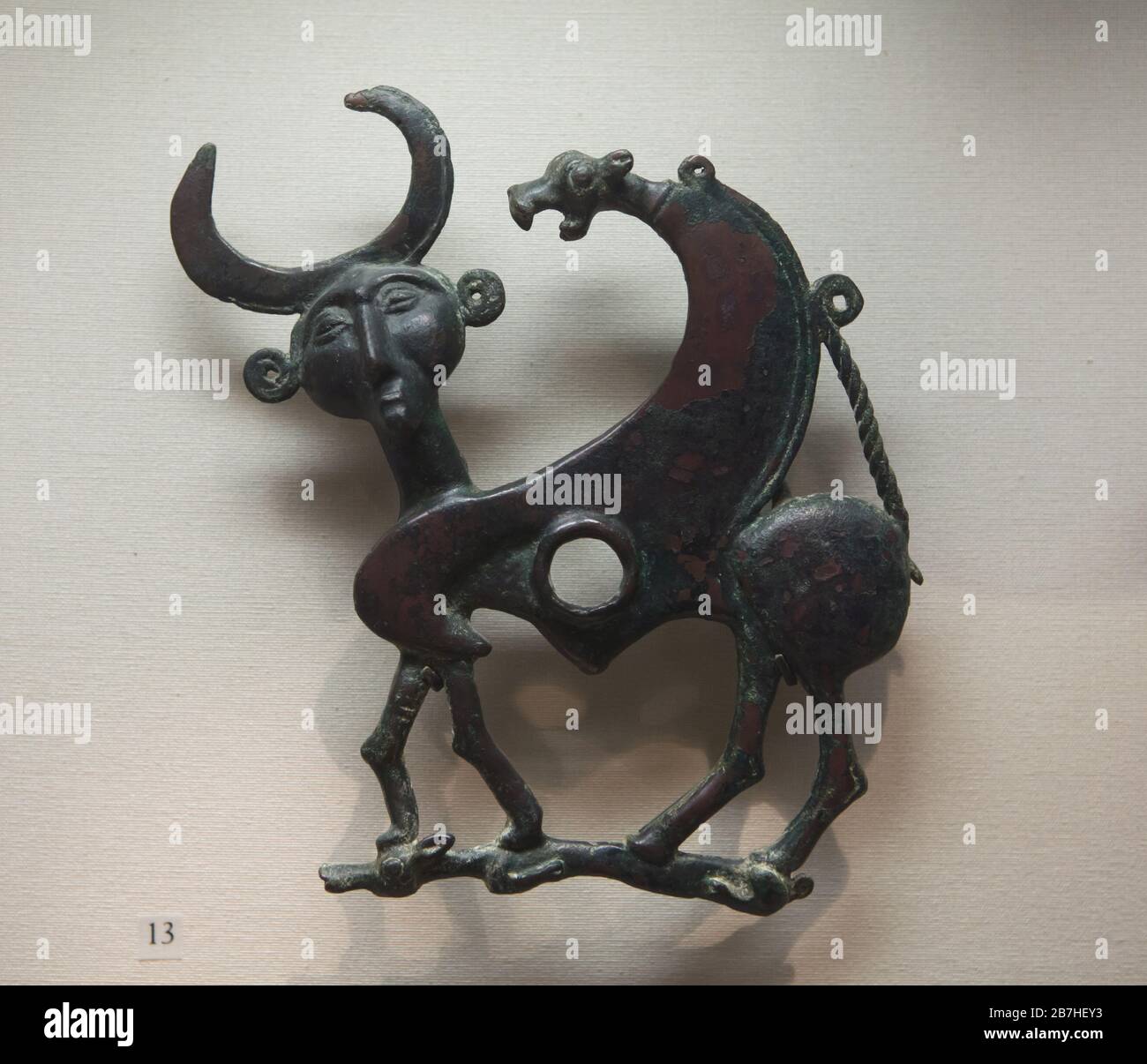 Luristan bronze plate in the shape of the winged bull (lamassu) dated from the 8th or 7th century BC on display in the Louvre Museum in Paris, France. Stock Photohttps://www.alamy.com/image-license-details/?v=1https://www.alamy.com/luristan-bronze-plate-in-the-shape-of-the-winged-bull-lamassu-dated-from-the-8th-or-7th-century-bc-on-display-in-the-louvre-museum-in-paris-france-image348894871.html
Luristan bronze plate in the shape of the winged bull (lamassu) dated from the 8th or 7th century BC on display in the Louvre Museum in Paris, France. Stock Photohttps://www.alamy.com/image-license-details/?v=1https://www.alamy.com/luristan-bronze-plate-in-the-shape-of-the-winged-bull-lamassu-dated-from-the-8th-or-7th-century-bc-on-display-in-the-louvre-museum-in-paris-france-image348894871.htmlRM2B7HEY3–Luristan bronze plate in the shape of the winged bull (lamassu) dated from the 8th or 7th century BC on display in the Louvre Museum in Paris, France.
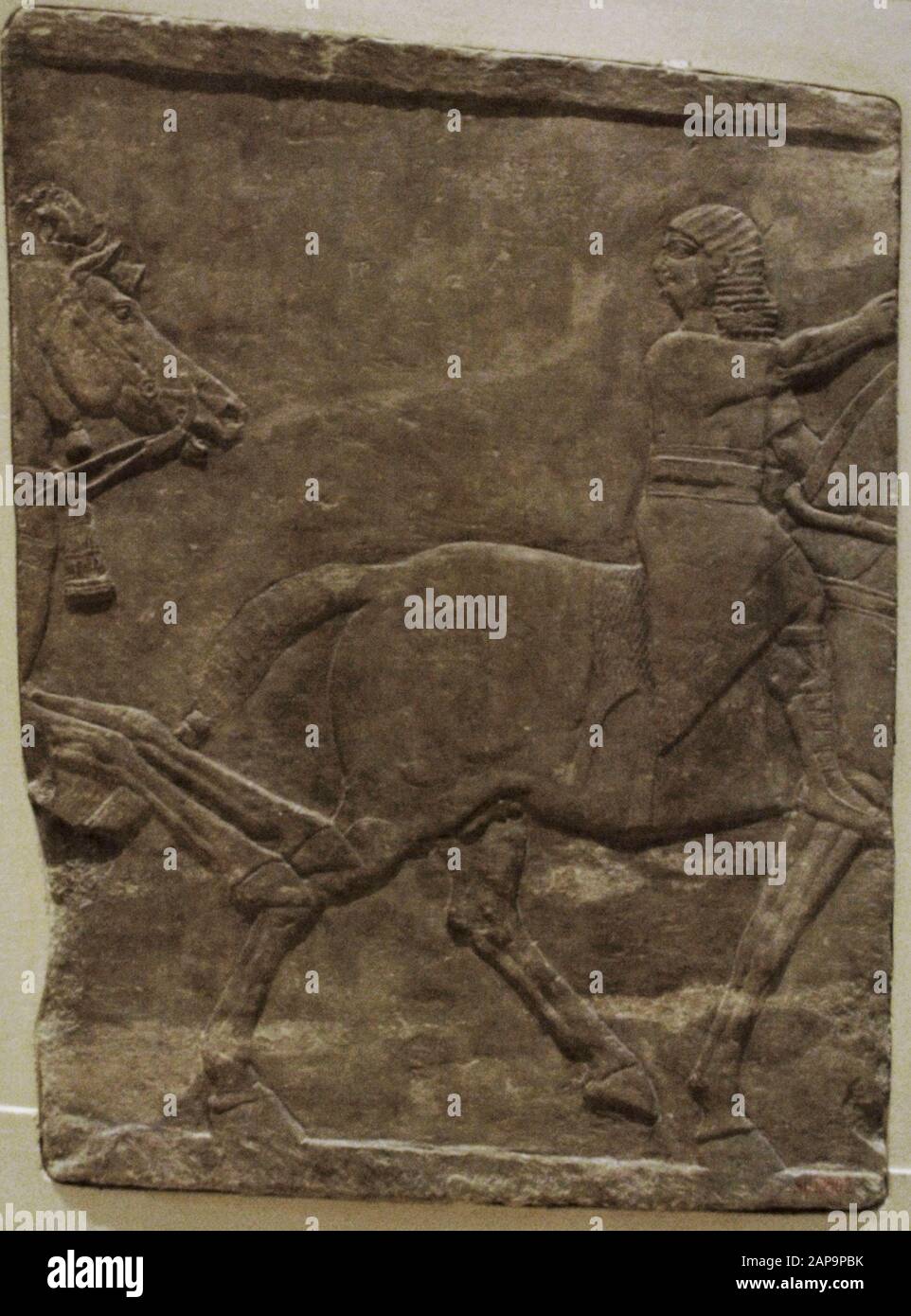 Assyrians. Palace of Nineveh. 7th century BC. Relief depicting a knight on horseback. Access ramp R. Louvre Museum. Paris. Stock Photohttps://www.alamy.com/image-license-details/?v=1https://www.alamy.com/assyrians-palace-of-nineveh-7th-century-bc-relief-depicting-a-knight-on-horseback-access-ramp-r-louvre-museum-paris-image340734567.html
Assyrians. Palace of Nineveh. 7th century BC. Relief depicting a knight on horseback. Access ramp R. Louvre Museum. Paris. Stock Photohttps://www.alamy.com/image-license-details/?v=1https://www.alamy.com/assyrians-palace-of-nineveh-7th-century-bc-relief-depicting-a-knight-on-horseback-access-ramp-r-louvre-museum-paris-image340734567.htmlRM2AP9PBK–Assyrians. Palace of Nineveh. 7th century BC. Relief depicting a knight on horseback. Access ramp R. Louvre Museum. Paris.
 Bo ( musical instrument ) OF DUKE OF QIN 7th Century BC Shanghai Museum of ancient Chinese art China Bronze Stock Photohttps://www.alamy.com/image-license-details/?v=1https://www.alamy.com/stock-photo-bo-musical-instrument-of-duke-of-qin-7th-century-bc-shanghai-museum-85603392.html
Bo ( musical instrument ) OF DUKE OF QIN 7th Century BC Shanghai Museum of ancient Chinese art China Bronze Stock Photohttps://www.alamy.com/image-license-details/?v=1https://www.alamy.com/stock-photo-bo-musical-instrument-of-duke-of-qin-7th-century-bc-shanghai-museum-85603392.htmlRMEY7G00–Bo ( musical instrument ) OF DUKE OF QIN 7th Century BC Shanghai Museum of ancient Chinese art China Bronze
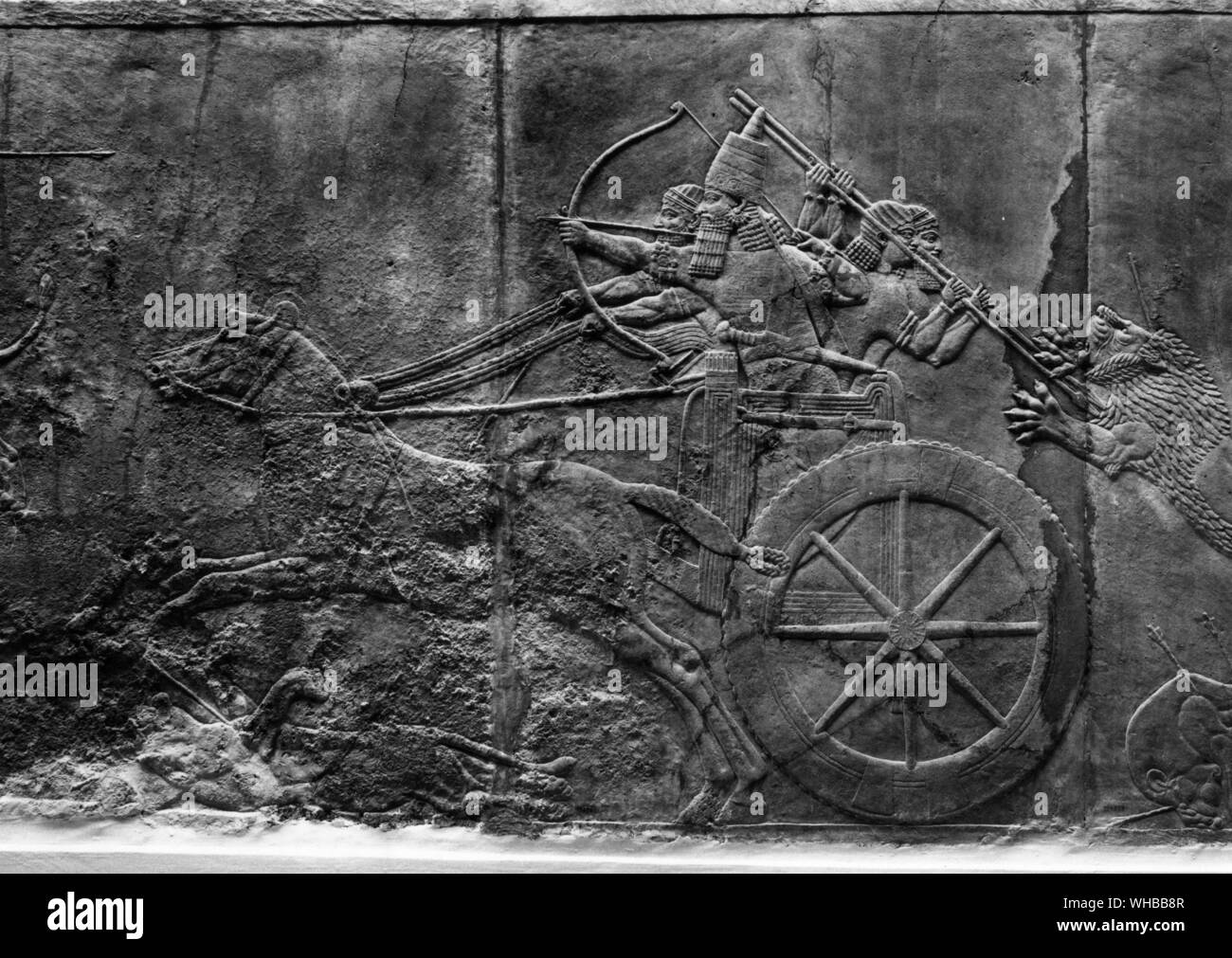 King Ashurbanipal in a relief depicting a lion hunt - 7th Century BC , Nineveh Stock Photohttps://www.alamy.com/image-license-details/?v=1https://www.alamy.com/king-ashurbanipal-in-a-relief-depicting-a-lion-hunt-7th-century-bc-nineveh-image268855015.html
King Ashurbanipal in a relief depicting a lion hunt - 7th Century BC , Nineveh Stock Photohttps://www.alamy.com/image-license-details/?v=1https://www.alamy.com/king-ashurbanipal-in-a-relief-depicting-a-lion-hunt-7th-century-bc-nineveh-image268855015.htmlRMWHBB8R–King Ashurbanipal in a relief depicting a lion hunt - 7th Century BC , Nineveh
 Villanovan, Italic, Axe Head, 8th/early 7th Century BC, bronze, 6 x 2 1/2 x 1 1/2in Stock Photohttps://www.alamy.com/image-license-details/?v=1https://www.alamy.com/villanovan-italic-axe-head-8thearly-7th-century-bc-bronze-6-x-2-12-x-1-12in-image328731104.html
Villanovan, Italic, Axe Head, 8th/early 7th Century BC, bronze, 6 x 2 1/2 x 1 1/2in Stock Photohttps://www.alamy.com/image-license-details/?v=1https://www.alamy.com/villanovan-italic-axe-head-8thearly-7th-century-bc-bronze-6-x-2-12-x-1-12in-image328731104.htmlRM2A2PYTG–Villanovan, Italic, Axe Head, 8th/early 7th Century BC, bronze, 6 x 2 1/2 x 1 1/2in
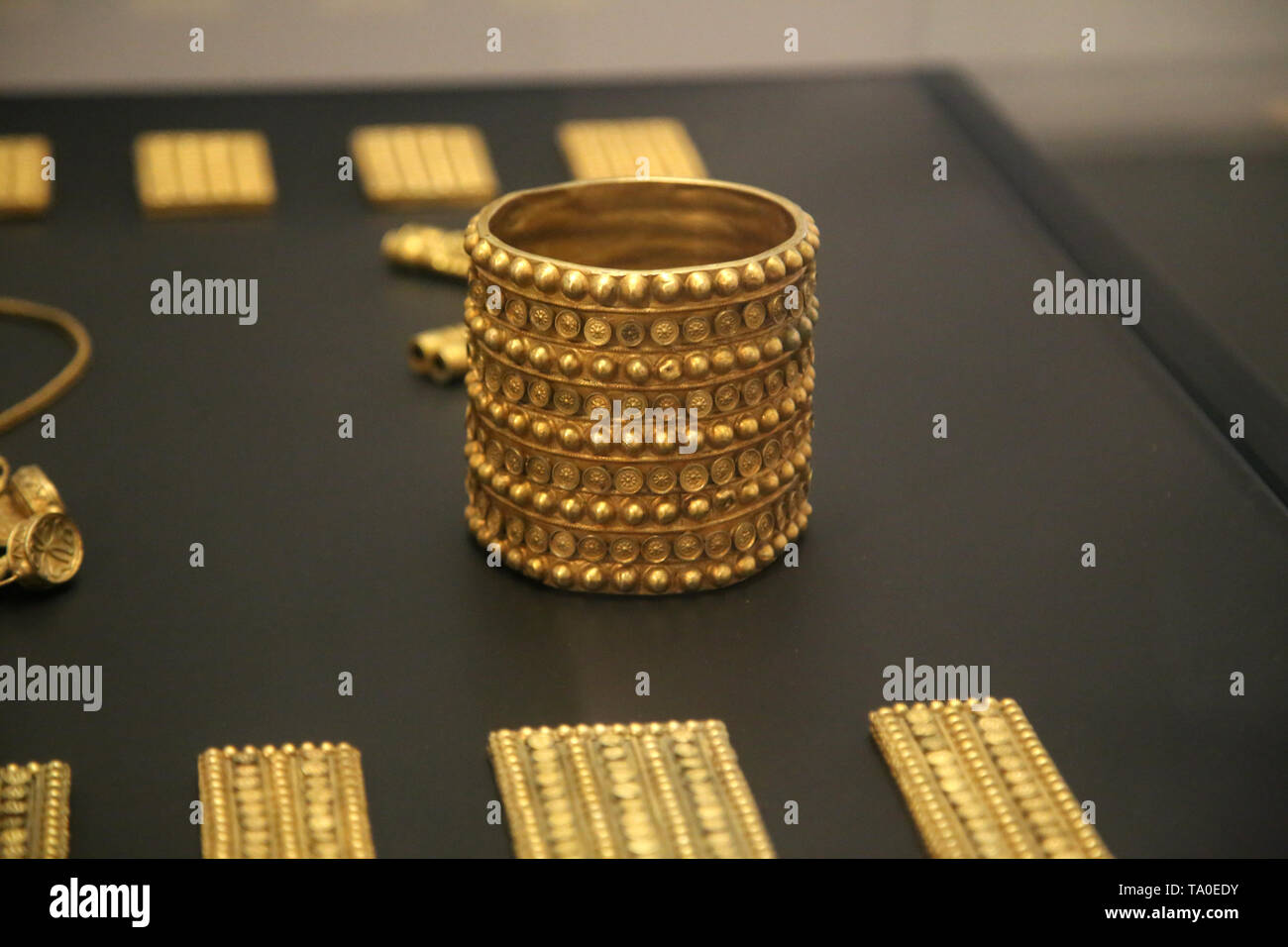 Treasure of El Carambolo. Tartessian and Phoecian culture. 5th-7th century BC. Camas, Andalusia, Spain. Archaeological Museum of Seville. Spain. Stock Photohttps://www.alamy.com/image-license-details/?v=1https://www.alamy.com/treasure-of-el-carambolo-tartessian-and-phoecian-culture-5th-7th-century-bc-camas-andalusia-spain-archaeological-museum-of-seville-spain-image247103079.html
Treasure of El Carambolo. Tartessian and Phoecian culture. 5th-7th century BC. Camas, Andalusia, Spain. Archaeological Museum of Seville. Spain. Stock Photohttps://www.alamy.com/image-license-details/?v=1https://www.alamy.com/treasure-of-el-carambolo-tartessian-and-phoecian-culture-5th-7th-century-bc-camas-andalusia-spain-archaeological-museum-of-seville-spain-image247103079.htmlRMTA0EDY–Treasure of El Carambolo. Tartessian and Phoecian culture. 5th-7th century BC. Camas, Andalusia, Spain. Archaeological Museum of Seville. Spain.
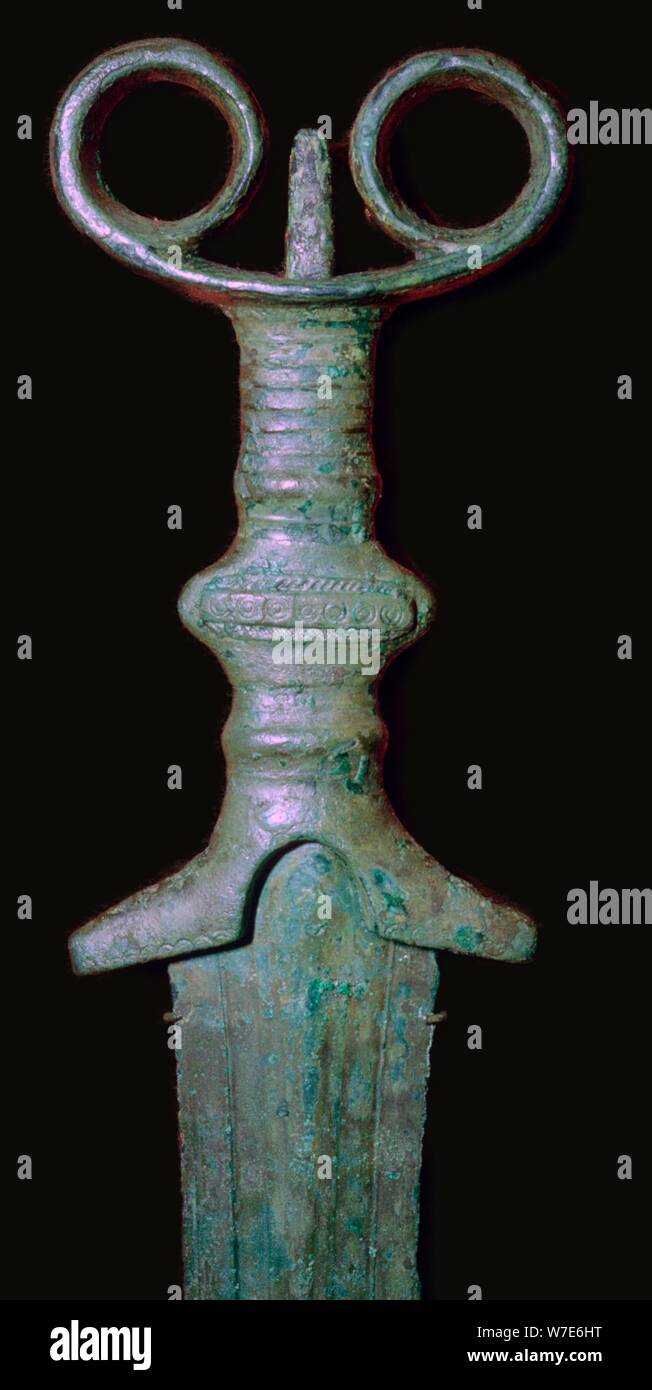 Hilt of an early bronze sword, 7th century BC. Stock Photohttps://www.alamy.com/image-license-details/?v=1https://www.alamy.com/hilt-of-an-early-bronze-sword-7th-century-bc-image262770644.html
Hilt of an early bronze sword, 7th century BC. Stock Photohttps://www.alamy.com/image-license-details/?v=1https://www.alamy.com/hilt-of-an-early-bronze-sword-7th-century-bc-image262770644.htmlRMW7E6HT–Hilt of an early bronze sword, 7th century BC.
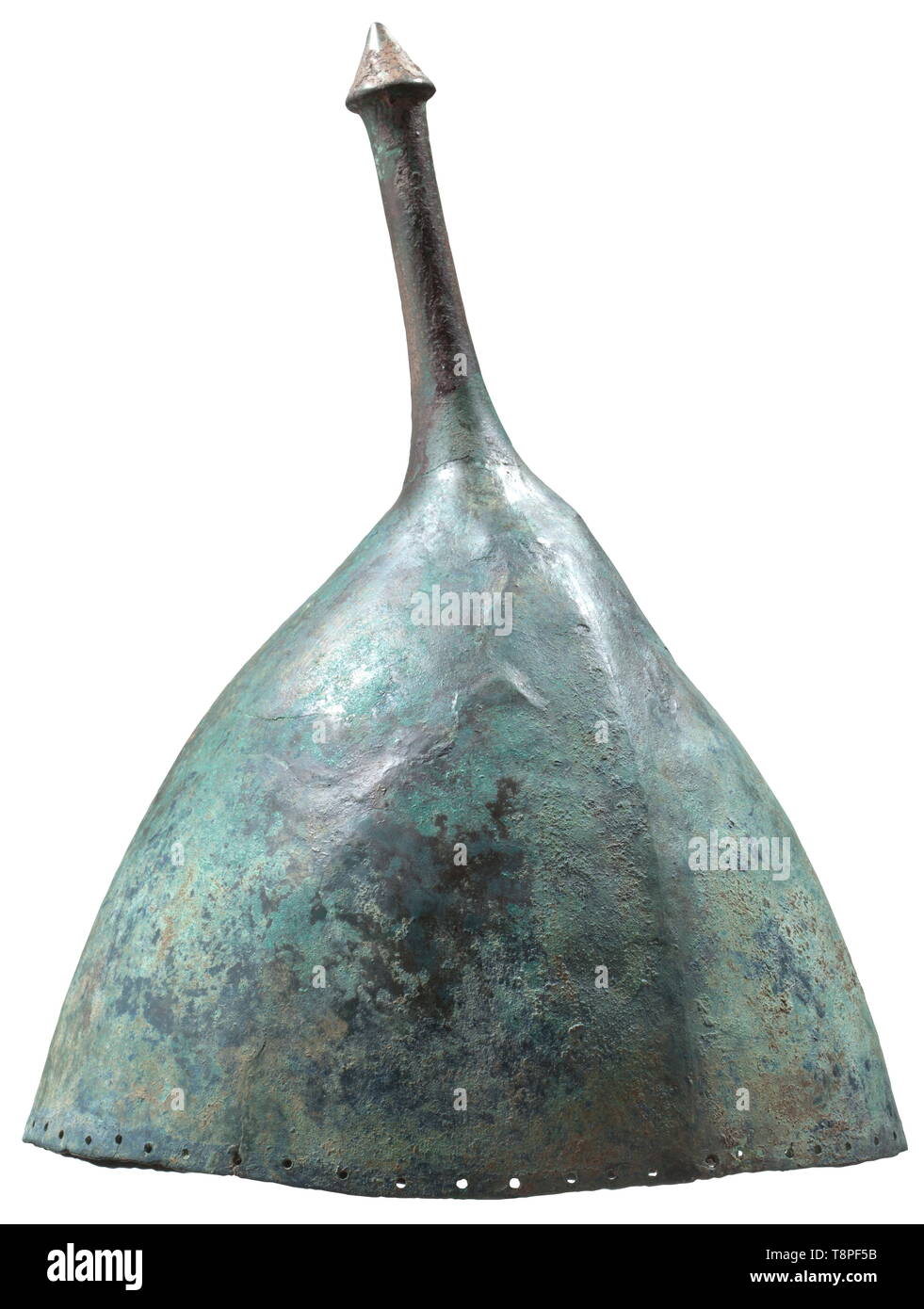 An Assyrian pointed, conical bronze helmet, 8th - 7th century BC Featuring an indistinct medial ridge and long stem crowned by a conical spike, probably used for the fastening of a crest. Ap ancient world, Additional-Rights-Clearance-Info-Not-Available Stock Photohttps://www.alamy.com/image-license-details/?v=1https://www.alamy.com/an-assyrian-pointed-conical-bronze-helmet-8th-7th-century-bc-featuring-an-indistinct-medial-ridge-and-long-stem-crowned-by-a-conical-spike-probably-used-for-the-fastening-of-a-crest-ap-ancient-world-additional-rights-clearance-info-not-available-image246357255.html
An Assyrian pointed, conical bronze helmet, 8th - 7th century BC Featuring an indistinct medial ridge and long stem crowned by a conical spike, probably used for the fastening of a crest. Ap ancient world, Additional-Rights-Clearance-Info-Not-Available Stock Photohttps://www.alamy.com/image-license-details/?v=1https://www.alamy.com/an-assyrian-pointed-conical-bronze-helmet-8th-7th-century-bc-featuring-an-indistinct-medial-ridge-and-long-stem-crowned-by-a-conical-spike-probably-used-for-the-fastening-of-a-crest-ap-ancient-world-additional-rights-clearance-info-not-available-image246357255.htmlRMT8PF5B–An Assyrian pointed, conical bronze helmet, 8th - 7th century BC Featuring an indistinct medial ridge and long stem crowned by a conical spike, probably used for the fastening of a crest. Ap ancient world, Additional-Rights-Clearance-Info-Not-Available
 Art inspired by Appliqué in the Form of a Winged Genie, Near Eastern, Mesopotamian, Assyrian, Neo-Assyrian period, 883-612 BC, 7th century BC, Gold, Ziwiye, Kurdistan province, Iran, Asia, Sculpture, 1 11/16 in. (4.3 cm, Classic works modernized by Artotop with a splash of modernity. Shapes, color and value, eye-catching visual impact on art. Emotions through freedom of artworks in a contemporary way. A timeless message pursuing a wildly creative new direction. Artists turning to the digital medium and creating the Artotop NFT Stock Photohttps://www.alamy.com/image-license-details/?v=1https://www.alamy.com/art-inspired-by-appliqu-in-the-form-of-a-winged-genie-near-eastern-mesopotamian-assyrian-neo-assyrian-period-883-612-bc-7th-century-bc-gold-ziwiye-kurdistan-province-iran-asia-sculpture-1-1116-in-43-cm-classic-works-modernized-by-artotop-with-a-splash-of-modernity-shapes-color-and-value-eye-catching-visual-impact-on-art-emotions-through-freedom-of-artworks-in-a-contemporary-way-a-timeless-message-pursuing-a-wildly-creative-new-direction-artists-turning-to-the-digital-medium-and-creating-the-artotop-nft-image459590747.html
Art inspired by Appliqué in the Form of a Winged Genie, Near Eastern, Mesopotamian, Assyrian, Neo-Assyrian period, 883-612 BC, 7th century BC, Gold, Ziwiye, Kurdistan province, Iran, Asia, Sculpture, 1 11/16 in. (4.3 cm, Classic works modernized by Artotop with a splash of modernity. Shapes, color and value, eye-catching visual impact on art. Emotions through freedom of artworks in a contemporary way. A timeless message pursuing a wildly creative new direction. Artists turning to the digital medium and creating the Artotop NFT Stock Photohttps://www.alamy.com/image-license-details/?v=1https://www.alamy.com/art-inspired-by-appliqu-in-the-form-of-a-winged-genie-near-eastern-mesopotamian-assyrian-neo-assyrian-period-883-612-bc-7th-century-bc-gold-ziwiye-kurdistan-province-iran-asia-sculpture-1-1116-in-43-cm-classic-works-modernized-by-artotop-with-a-splash-of-modernity-shapes-color-and-value-eye-catching-visual-impact-on-art-emotions-through-freedom-of-artworks-in-a-contemporary-way-a-timeless-message-pursuing-a-wildly-creative-new-direction-artists-turning-to-the-digital-medium-and-creating-the-artotop-nft-image459590747.htmlRF2HKM4K7–Art inspired by Appliqué in the Form of a Winged Genie, Near Eastern, Mesopotamian, Assyrian, Neo-Assyrian period, 883-612 BC, 7th century BC, Gold, Ziwiye, Kurdistan province, Iran, Asia, Sculpture, 1 11/16 in. (4.3 cm, Classic works modernized by Artotop with a splash of modernity. Shapes, color and value, eye-catching visual impact on art. Emotions through freedom of artworks in a contemporary way. A timeless message pursuing a wildly creative new direction. Artists turning to the digital medium and creating the Artotop NFT
 Geometric Attic neck-amphora, 8th-7th century BC. Artist: Tapestry Workshop. Stock Photohttps://www.alamy.com/image-license-details/?v=1https://www.alamy.com/geometric-attic-neck-amphora-8th-7th-century-bc-artist-tapestry-workshop-image186168140.html
Geometric Attic neck-amphora, 8th-7th century BC. Artist: Tapestry Workshop. Stock Photohttps://www.alamy.com/image-license-details/?v=1https://www.alamy.com/geometric-attic-neck-amphora-8th-7th-century-bc-artist-tapestry-workshop-image186168140.htmlRMMPTKA4–Geometric Attic neck-amphora, 8th-7th century BC. Artist: Tapestry Workshop.
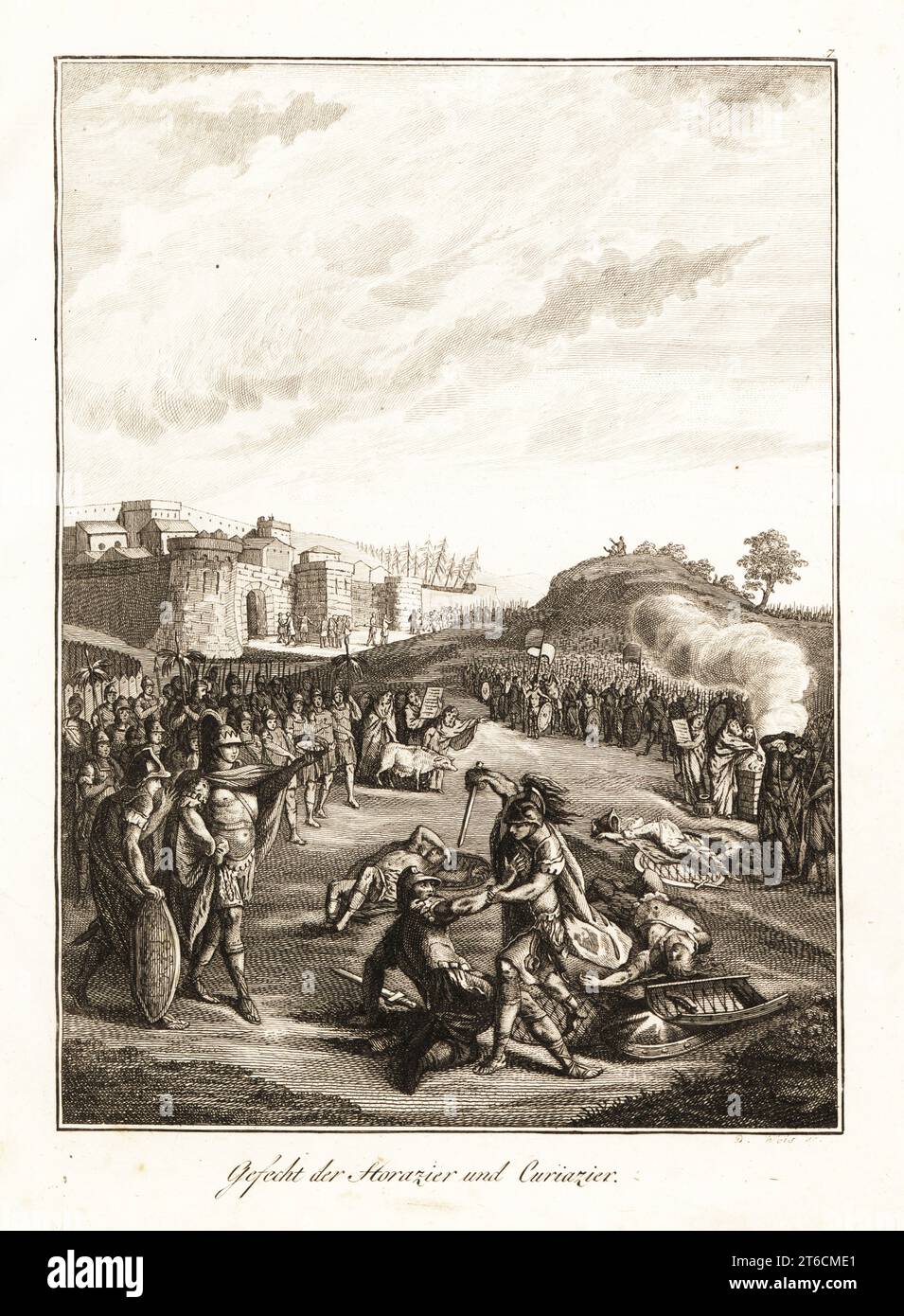 The mortal combat between the Horatii triplets from Rome and the Curiatii triplets from Alba Longa, 7th century BC. The last Roman Horatius brother emerges victorious before the watching armies. During the reign of the legendary third king of Rome, Tullus Hostilius. Combat des Horaces et des Curiaces. Copperplate engraving by David Weis after a design by Gabriel de St. Aubin from Professor Joseph Rudolf Zappes Gemalde aus der romischen Geschichte, Pictures of Roman History, Joseph Schalbacher, Vienna, 1800. German edition of Abbe Claude Francois Xavier Millots Abrege de lHistoire Romaine. Stock Photohttps://www.alamy.com/image-license-details/?v=1https://www.alamy.com/the-mortal-combat-between-the-horatii-triplets-from-rome-and-the-curiatii-triplets-from-alba-longa-7th-century-bc-the-last-roman-horatius-brother-emerges-victorious-before-the-watching-armies-during-the-reign-of-the-legendary-third-king-of-rome-tullus-hostilius-combat-des-horaces-et-des-curiaces-copperplate-engraving-by-david-weis-after-a-design-by-gabriel-de-st-aubin-from-professor-joseph-rudolf-zappes-gemalde-aus-der-romischen-geschichte-pictures-of-roman-history-joseph-schalbacher-vienna-1800-german-edition-of-abbe-claude-francois-xavier-millots-abrege-de-lhistoire-romaine-image571909577.html
The mortal combat between the Horatii triplets from Rome and the Curiatii triplets from Alba Longa, 7th century BC. The last Roman Horatius brother emerges victorious before the watching armies. During the reign of the legendary third king of Rome, Tullus Hostilius. Combat des Horaces et des Curiaces. Copperplate engraving by David Weis after a design by Gabriel de St. Aubin from Professor Joseph Rudolf Zappes Gemalde aus der romischen Geschichte, Pictures of Roman History, Joseph Schalbacher, Vienna, 1800. German edition of Abbe Claude Francois Xavier Millots Abrege de lHistoire Romaine. Stock Photohttps://www.alamy.com/image-license-details/?v=1https://www.alamy.com/the-mortal-combat-between-the-horatii-triplets-from-rome-and-the-curiatii-triplets-from-alba-longa-7th-century-bc-the-last-roman-horatius-brother-emerges-victorious-before-the-watching-armies-during-the-reign-of-the-legendary-third-king-of-rome-tullus-hostilius-combat-des-horaces-et-des-curiaces-copperplate-engraving-by-david-weis-after-a-design-by-gabriel-de-st-aubin-from-professor-joseph-rudolf-zappes-gemalde-aus-der-romischen-geschichte-pictures-of-roman-history-joseph-schalbacher-vienna-1800-german-edition-of-abbe-claude-francois-xavier-millots-abrege-de-lhistoire-romaine-image571909577.htmlRM2T6CME1–The mortal combat between the Horatii triplets from Rome and the Curiatii triplets from Alba Longa, 7th century BC. The last Roman Horatius brother emerges victorious before the watching armies. During the reign of the legendary third king of Rome, Tullus Hostilius. Combat des Horaces et des Curiaces. Copperplate engraving by David Weis after a design by Gabriel de St. Aubin from Professor Joseph Rudolf Zappes Gemalde aus der romischen Geschichte, Pictures of Roman History, Joseph Schalbacher, Vienna, 1800. German edition of Abbe Claude Francois Xavier Millots Abrege de lHistoire Romaine.
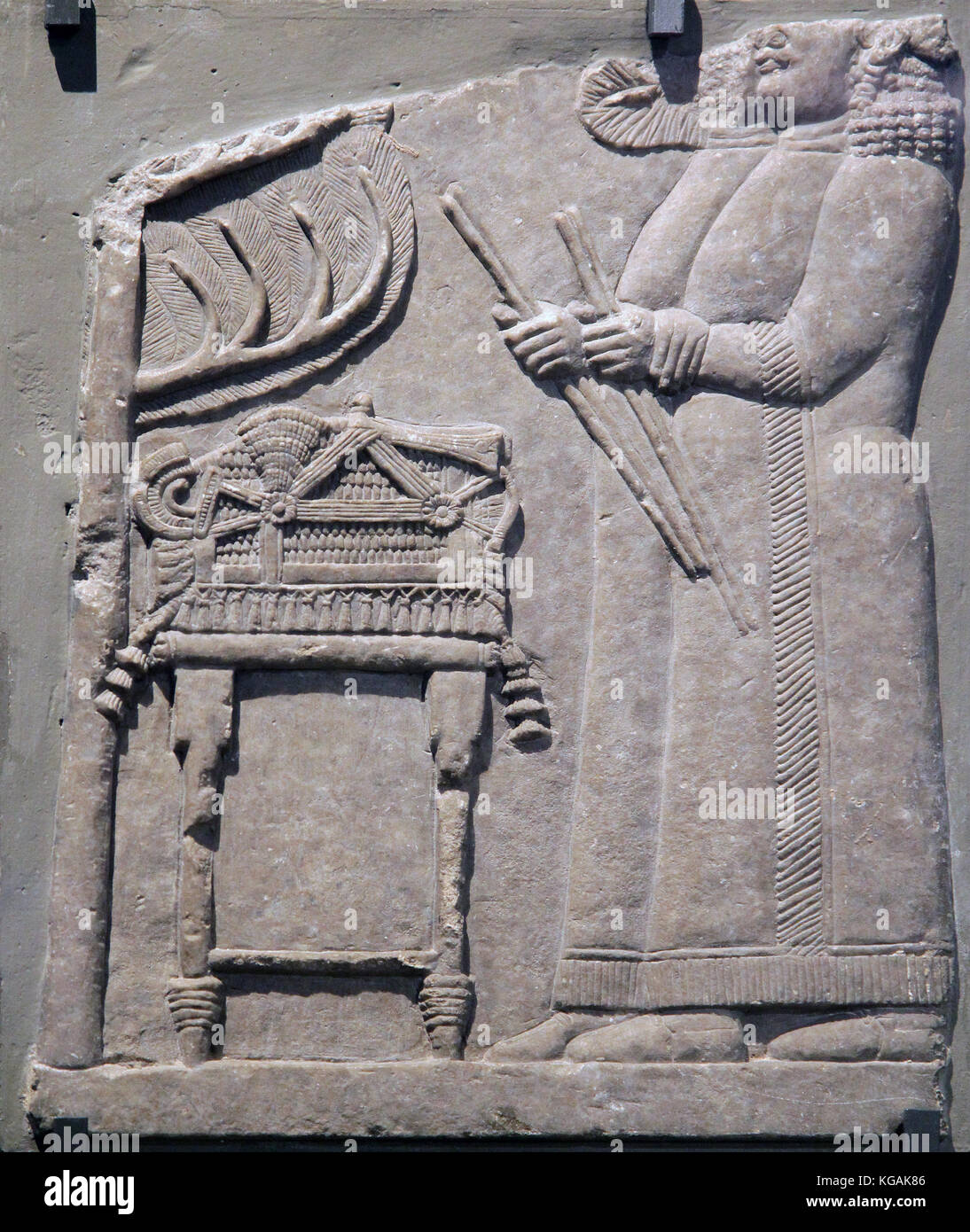 Nineveh.Alabaster relief with two servants in front of a table.7th century BC Stock Photohttps://www.alamy.com/image-license-details/?v=1https://www.alamy.com/stock-image-ninevehalabaster-relief-with-two-servants-in-front-of-a-table7th-century-164962454.html
Nineveh.Alabaster relief with two servants in front of a table.7th century BC Stock Photohttps://www.alamy.com/image-license-details/?v=1https://www.alamy.com/stock-image-ninevehalabaster-relief-with-two-servants-in-front-of-a-table7th-century-164962454.htmlRMKGAK86–Nineveh.Alabaster relief with two servants in front of a table.7th century BC
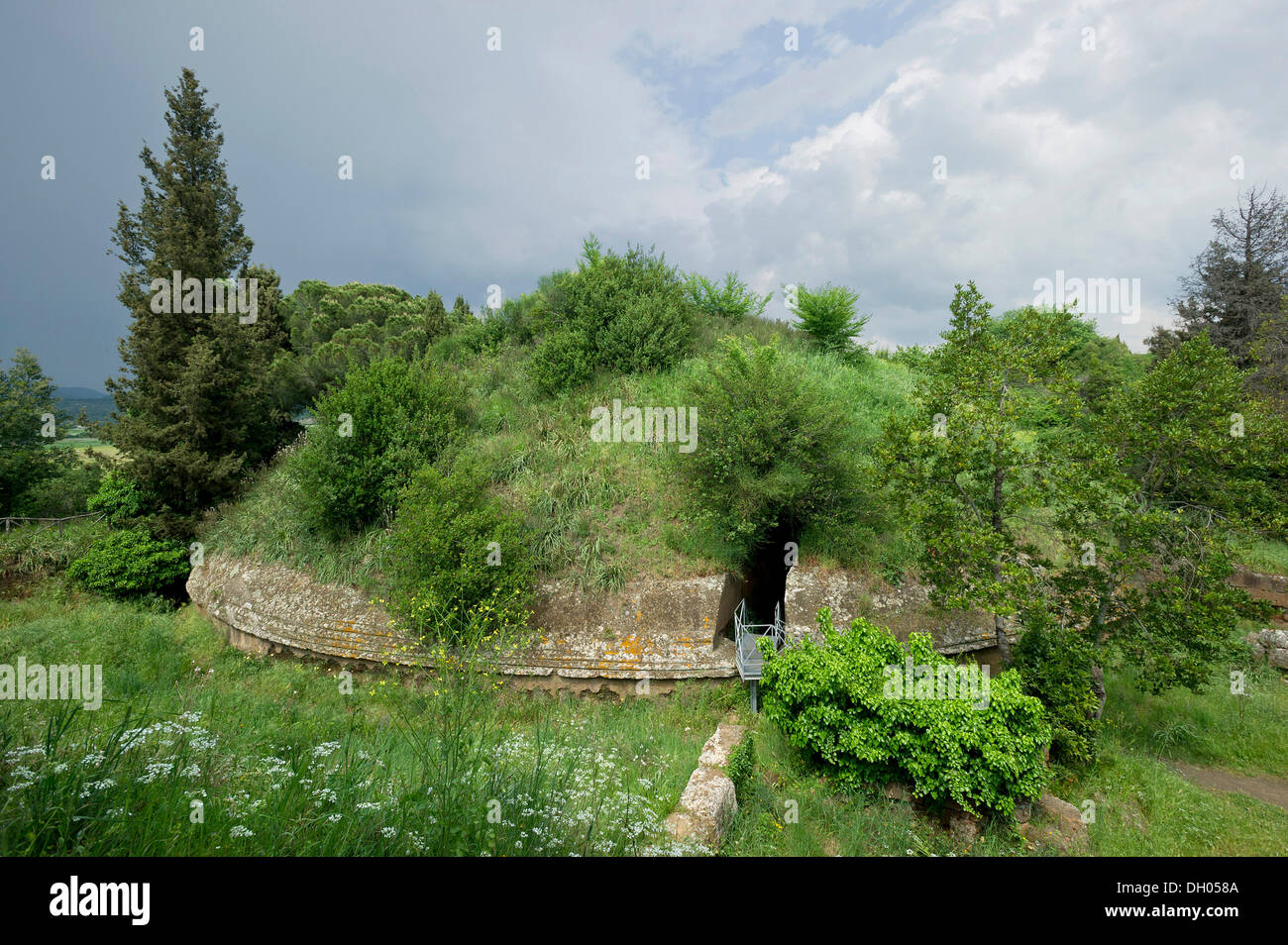 An antique round tumulus grave, Tomba della Capanna, 7th century BC, Etruscan Necropolis of La Banditaccia Stock Photohttps://www.alamy.com/image-license-details/?v=1https://www.alamy.com/an-antique-round-tumulus-grave-tomba-della-capanna-7th-century-bc-image62084410.html
An antique round tumulus grave, Tomba della Capanna, 7th century BC, Etruscan Necropolis of La Banditaccia Stock Photohttps://www.alamy.com/image-license-details/?v=1https://www.alamy.com/an-antique-round-tumulus-grave-tomba-della-capanna-7th-century-bc-image62084410.htmlRMDH058A–An antique round tumulus grave, Tomba della Capanna, 7th century BC, Etruscan Necropolis of La Banditaccia
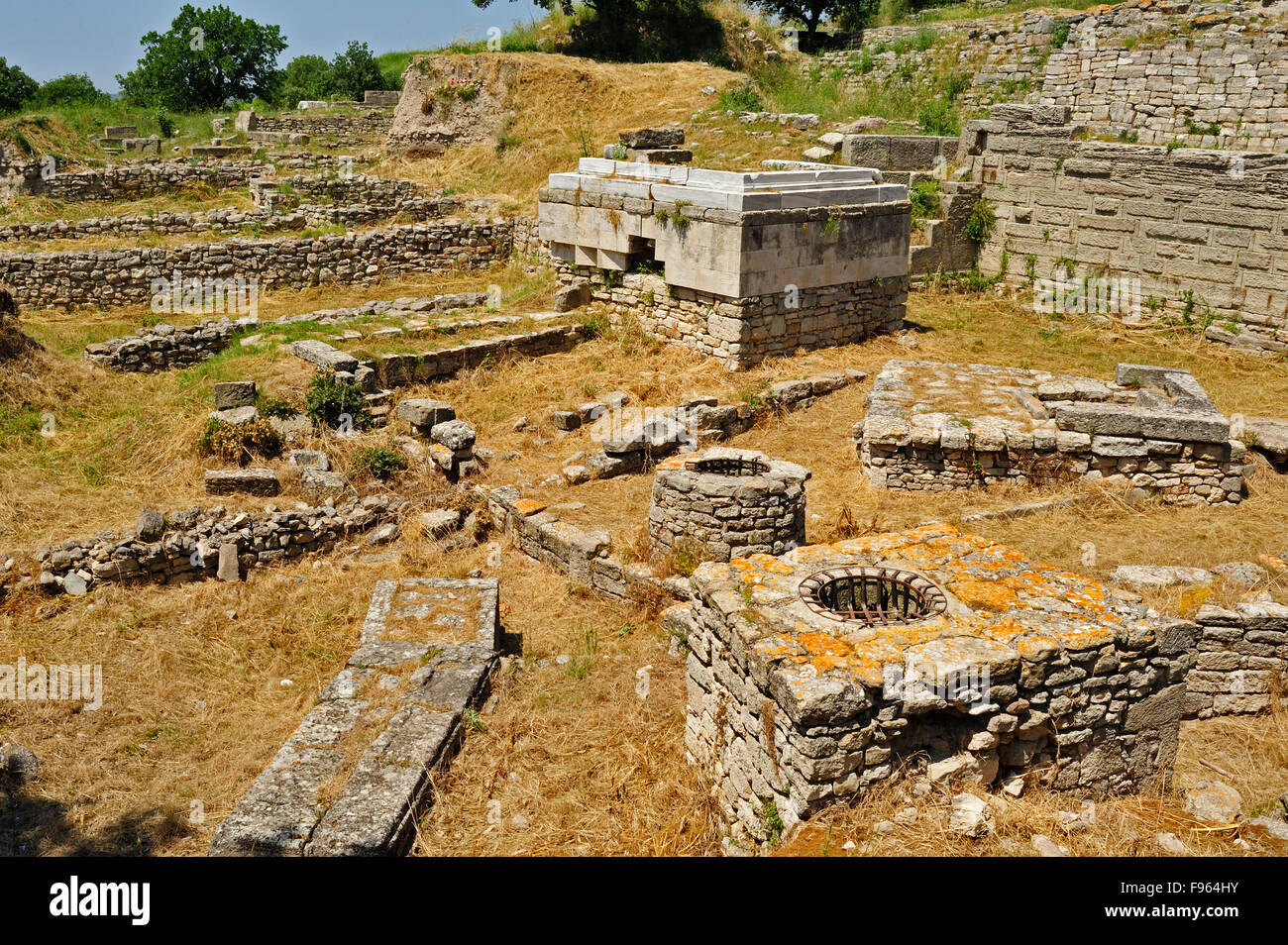 religious sanctuary from Troy 8, 7th century BC, Troy Historic Site, Biga Peninsula, Turkey Stock Photohttps://www.alamy.com/image-license-details/?v=1https://www.alamy.com/stock-photo-religious-sanctuary-from-troy-8-7th-century-bc-troy-historic-site-91719095.html
religious sanctuary from Troy 8, 7th century BC, Troy Historic Site, Biga Peninsula, Turkey Stock Photohttps://www.alamy.com/image-license-details/?v=1https://www.alamy.com/stock-photo-religious-sanctuary-from-troy-8-7th-century-bc-troy-historic-site-91719095.htmlRMF964HY–religious sanctuary from Troy 8, 7th century BC, Troy Historic Site, Biga Peninsula, Turkey
 . Tomba della scimmia . end of 7th century BC. see filename or category 610 Tomba della scimmia 04 Stock Photohttps://www.alamy.com/image-license-details/?v=1https://www.alamy.com/tomba-della-scimmia-end-of-7th-century-bc-see-filename-or-category-610-tomba-della-scimmia-04-image187511242.html
. Tomba della scimmia . end of 7th century BC. see filename or category 610 Tomba della scimmia 04 Stock Photohttps://www.alamy.com/image-license-details/?v=1https://www.alamy.com/tomba-della-scimmia-end-of-7th-century-bc-see-filename-or-category-610-tomba-della-scimmia-04-image187511242.htmlRMMW1TE2–. Tomba della scimmia . end of 7th century BC. see filename or category 610 Tomba della scimmia 04
 Zaleucus, Greek lawgiver of Epizephyrian Locris in Italy, 7th century BC. Devised the Locrian code. Copperplate engraving after an illustration by Joachim von Sandrart from his L’Academia Todesca, della Architectura, Scultura & Pittura, oder Teutsche Academie, der Edlen Bau- Bild- und Mahlerey-Kunste, German Academy of Architecture, Sculpture and Painting, Jacob von Sandrart, Nuremberg, 1675. Stock Photohttps://www.alamy.com/image-license-details/?v=1https://www.alamy.com/zaleucus-greek-lawgiver-of-epizephyrian-locris-in-italy-7th-century-bc-devised-the-locrian-code-copperplate-engraving-after-an-illustration-by-joachim-von-sandrart-from-his-lacademia-todesca-della-architectura-scultura-pittura-oder-teutsche-academie-der-edlen-bau-bild-und-mahlerey-kunste-german-academy-of-architecture-sculpture-and-painting-jacob-von-sandrart-nuremberg-1675-image551464312.html
Zaleucus, Greek lawgiver of Epizephyrian Locris in Italy, 7th century BC. Devised the Locrian code. Copperplate engraving after an illustration by Joachim von Sandrart from his L’Academia Todesca, della Architectura, Scultura & Pittura, oder Teutsche Academie, der Edlen Bau- Bild- und Mahlerey-Kunste, German Academy of Architecture, Sculpture and Painting, Jacob von Sandrart, Nuremberg, 1675. Stock Photohttps://www.alamy.com/image-license-details/?v=1https://www.alamy.com/zaleucus-greek-lawgiver-of-epizephyrian-locris-in-italy-7th-century-bc-devised-the-locrian-code-copperplate-engraving-after-an-illustration-by-joachim-von-sandrart-from-his-lacademia-todesca-della-architectura-scultura-pittura-oder-teutsche-academie-der-edlen-bau-bild-und-mahlerey-kunste-german-academy-of-architecture-sculpture-and-painting-jacob-von-sandrart-nuremberg-1675-image551464312.htmlRM2R15AA0–Zaleucus, Greek lawgiver of Epizephyrian Locris in Italy, 7th century BC. Devised the Locrian code. Copperplate engraving after an illustration by Joachim von Sandrart from his L’Academia Todesca, della Architectura, Scultura & Pittura, oder Teutsche Academie, der Edlen Bau- Bild- und Mahlerey-Kunste, German Academy of Architecture, Sculpture and Painting, Jacob von Sandrart, Nuremberg, 1675.
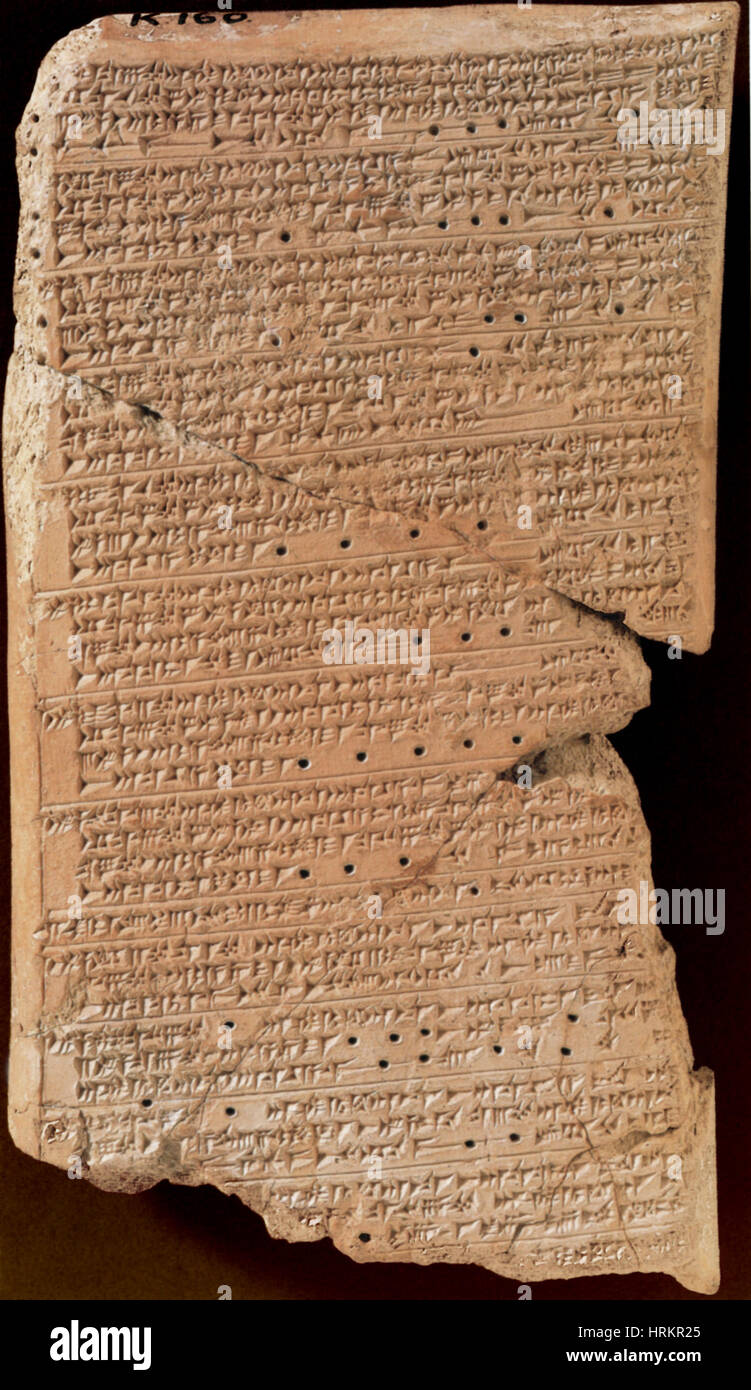 Venus Tablet of Ammisaduqa, 7th Century BC Stock Photohttps://www.alamy.com/image-license-details/?v=1https://www.alamy.com/stock-photo-venus-tablet-of-ammisaduqa-7th-century-bc-135044845.html
Venus Tablet of Ammisaduqa, 7th Century BC Stock Photohttps://www.alamy.com/image-license-details/?v=1https://www.alamy.com/stock-photo-venus-tablet-of-ammisaduqa-7th-century-bc-135044845.htmlRMHRKR25–Venus Tablet of Ammisaduqa, 7th Century BC
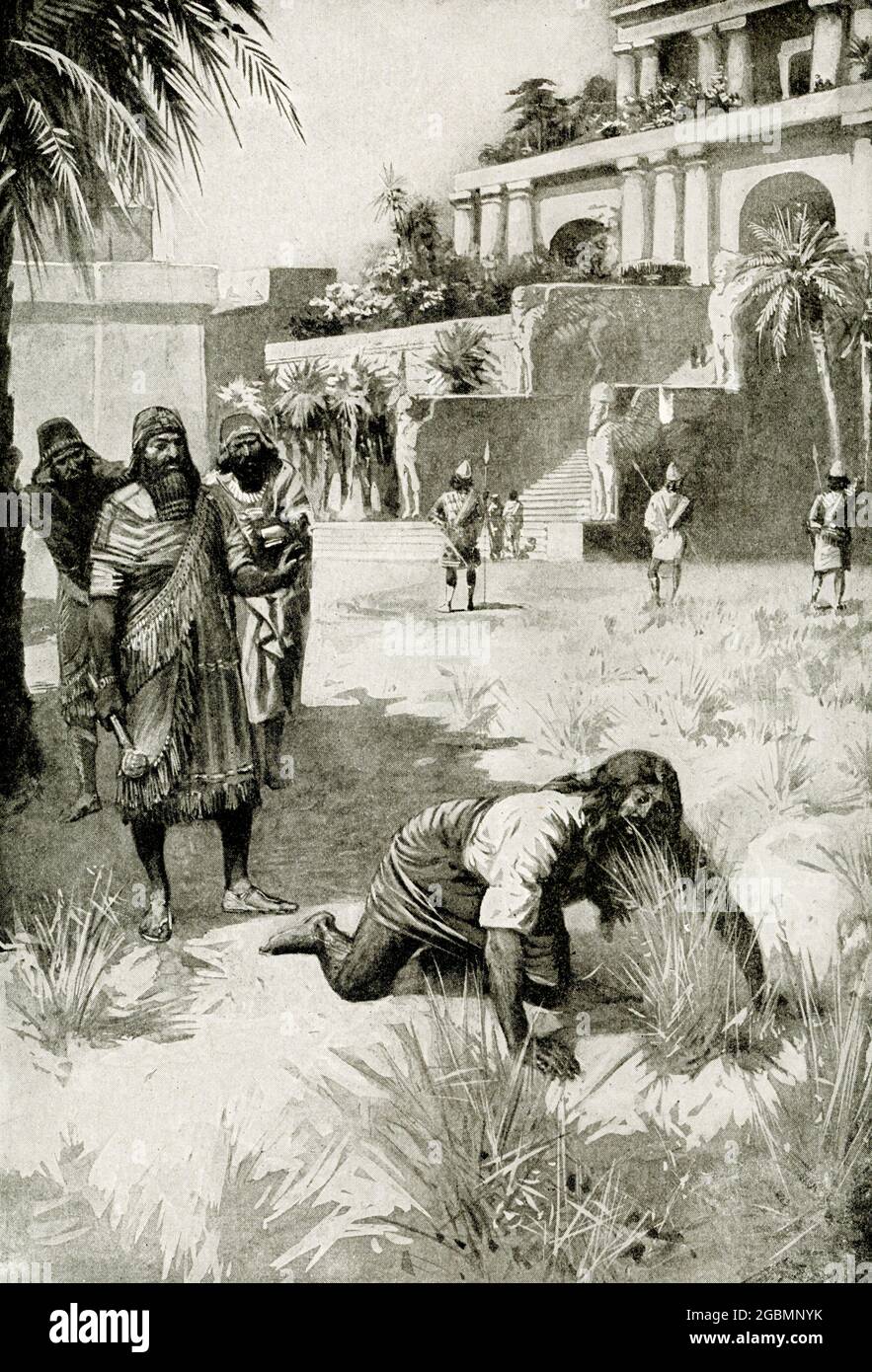 Madness of King Nebuchadnezzar. Although by his ability and military prowess Nebuchadnezzar restored Babylonia to the position of first empire in the world, his mind gave way, and for a time he became a beast of the field. Fancying himself to be an animal, he spent his days in the grounds of the palace and tried to feed upon grass. The prophet Daniel, who tells us of this madness, says: “He was driven from men, and did eat grass as oxen, and his body was wet with the dew of heaven, til his hairs were grown like eagles’ feathers and his nails like birds’ claws. Nebuchadnezzar was king of Babylo Stock Photohttps://www.alamy.com/image-license-details/?v=1https://www.alamy.com/madness-of-king-nebuchadnezzar-although-by-his-ability-and-military-prowess-nebuchadnezzar-restored-babylonia-to-the-position-of-first-empire-in-the-world-his-mind-gave-way-and-for-a-time-he-became-a-beast-of-the-field-fancying-himself-to-be-an-animal-he-spent-his-days-in-the-grounds-of-the-palace-and-tried-to-feed-upon-grass-the-prophet-daniel-who-tells-us-of-this-madness-says-he-was-driven-from-men-and-did-eat-grass-as-oxen-and-his-body-was-wet-with-the-dew-of-heaven-til-his-hairs-were-grown-like-eagles-feathers-and-his-nails-like-birds-claws-nebuchadnezzar-was-king-of-babylo-image437476695.html
Madness of King Nebuchadnezzar. Although by his ability and military prowess Nebuchadnezzar restored Babylonia to the position of first empire in the world, his mind gave way, and for a time he became a beast of the field. Fancying himself to be an animal, he spent his days in the grounds of the palace and tried to feed upon grass. The prophet Daniel, who tells us of this madness, says: “He was driven from men, and did eat grass as oxen, and his body was wet with the dew of heaven, til his hairs were grown like eagles’ feathers and his nails like birds’ claws. Nebuchadnezzar was king of Babylo Stock Photohttps://www.alamy.com/image-license-details/?v=1https://www.alamy.com/madness-of-king-nebuchadnezzar-although-by-his-ability-and-military-prowess-nebuchadnezzar-restored-babylonia-to-the-position-of-first-empire-in-the-world-his-mind-gave-way-and-for-a-time-he-became-a-beast-of-the-field-fancying-himself-to-be-an-animal-he-spent-his-days-in-the-grounds-of-the-palace-and-tried-to-feed-upon-grass-the-prophet-daniel-who-tells-us-of-this-madness-says-he-was-driven-from-men-and-did-eat-grass-as-oxen-and-his-body-was-wet-with-the-dew-of-heaven-til-his-hairs-were-grown-like-eagles-feathers-and-his-nails-like-birds-claws-nebuchadnezzar-was-king-of-babylo-image437476695.htmlRF2GBMNYK–Madness of King Nebuchadnezzar. Although by his ability and military prowess Nebuchadnezzar restored Babylonia to the position of first empire in the world, his mind gave way, and for a time he became a beast of the field. Fancying himself to be an animal, he spent his days in the grounds of the palace and tried to feed upon grass. The prophet Daniel, who tells us of this madness, says: “He was driven from men, and did eat grass as oxen, and his body was wet with the dew of heaven, til his hairs were grown like eagles’ feathers and his nails like birds’ claws. Nebuchadnezzar was king of Babylo
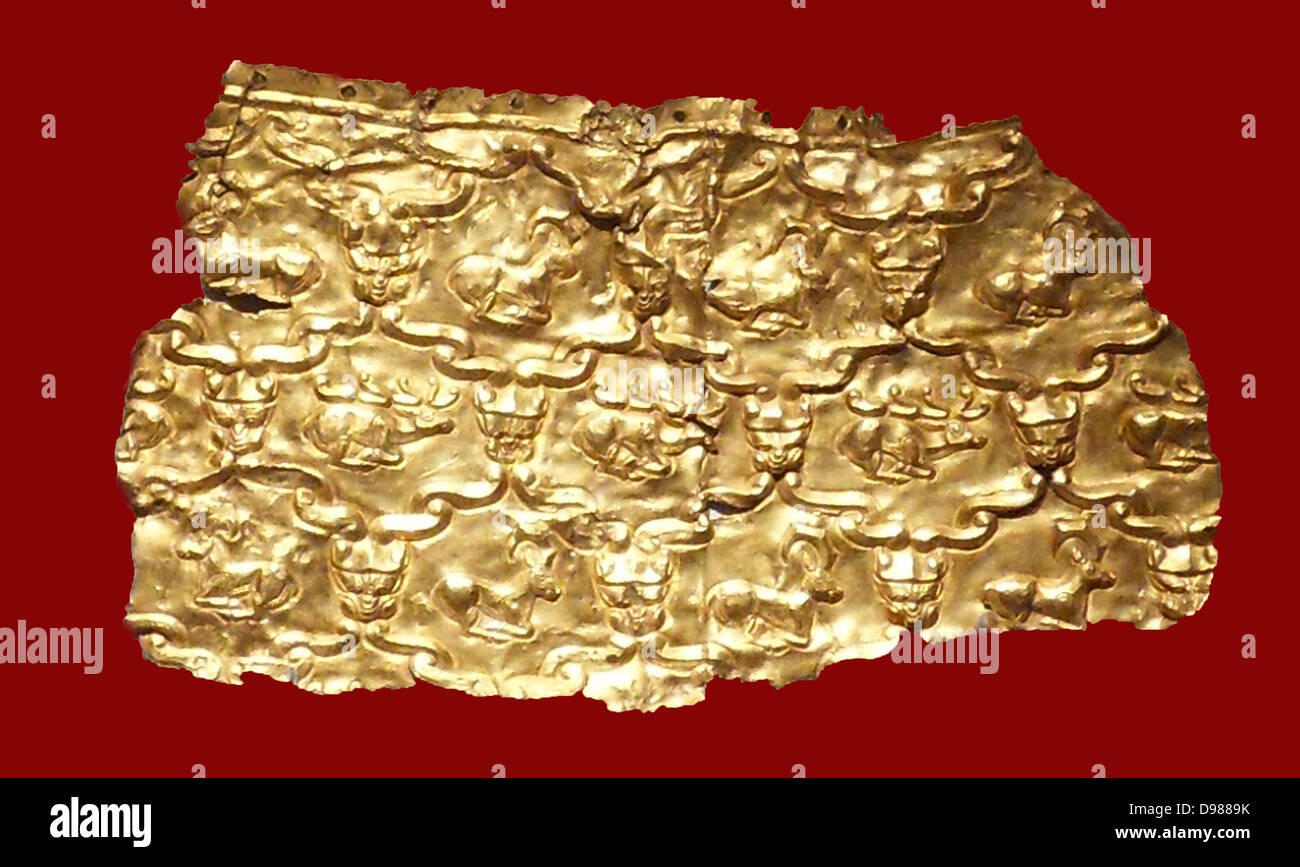 Fragment of gold beltIron Age, 8th-7th century BC.Perhaps from Ziwiyeh, north-west Iran. Ibexes, stags and heads of lions appear on this fragment of gold sheet is said to come from Ziwiyeh in north-west Iran. This site is a large mountain top citadel fortified by a massive wall. The citadel is approached by a monumental staircase cut out of the rock which winds around the mountain. Stock Photohttps://www.alamy.com/image-license-details/?v=1https://www.alamy.com/stock-photo-fragment-of-gold-beltiron-age-8th-7th-century-bcperhaps-from-ziwiyeh-57345167.html
Fragment of gold beltIron Age, 8th-7th century BC.Perhaps from Ziwiyeh, north-west Iran. Ibexes, stags and heads of lions appear on this fragment of gold sheet is said to come from Ziwiyeh in north-west Iran. This site is a large mountain top citadel fortified by a massive wall. The citadel is approached by a monumental staircase cut out of the rock which winds around the mountain. Stock Photohttps://www.alamy.com/image-license-details/?v=1https://www.alamy.com/stock-photo-fragment-of-gold-beltiron-age-8th-7th-century-bcperhaps-from-ziwiyeh-57345167.htmlRMD9889K–Fragment of gold beltIron Age, 8th-7th century BC.Perhaps from Ziwiyeh, north-west Iran. Ibexes, stags and heads of lions appear on this fragment of gold sheet is said to come from Ziwiyeh in north-west Iran. This site is a large mountain top citadel fortified by a massive wall. The citadel is approached by a monumental staircase cut out of the rock which winds around the mountain.
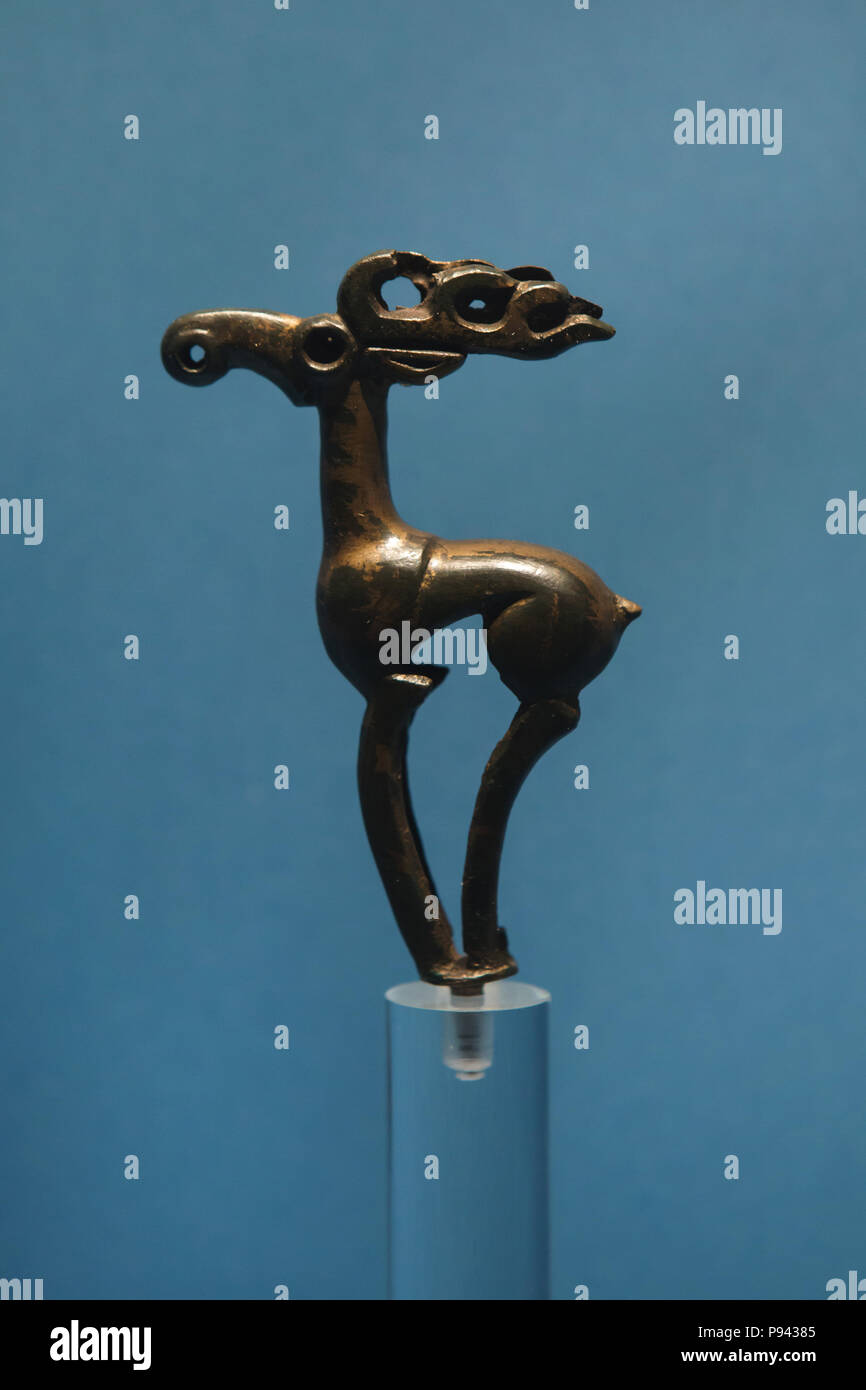 Deer or elk depicted on the bronze terminal of Tagar culture from Minusinsk Steppe dated from the 8th or 7th century BC on display in the Hermitage Museum in Saint Petersburg, Russia. Stock Photohttps://www.alamy.com/image-license-details/?v=1https://www.alamy.com/deer-or-elk-depicted-on-the-bronze-terminal-of-tagar-culture-from-minusinsk-steppe-dated-from-the-8th-or-7th-century-bc-on-display-in-the-hermitage-museum-in-saint-petersburg-russia-image212146709.html
Deer or elk depicted on the bronze terminal of Tagar culture from Minusinsk Steppe dated from the 8th or 7th century BC on display in the Hermitage Museum in Saint Petersburg, Russia. Stock Photohttps://www.alamy.com/image-license-details/?v=1https://www.alamy.com/deer-or-elk-depicted-on-the-bronze-terminal-of-tagar-culture-from-minusinsk-steppe-dated-from-the-8th-or-7th-century-bc-on-display-in-the-hermitage-museum-in-saint-petersburg-russia-image212146709.htmlRMP94385–Deer or elk depicted on the bronze terminal of Tagar culture from Minusinsk Steppe dated from the 8th or 7th century BC on display in the Hermitage Museum in Saint Petersburg, Russia.
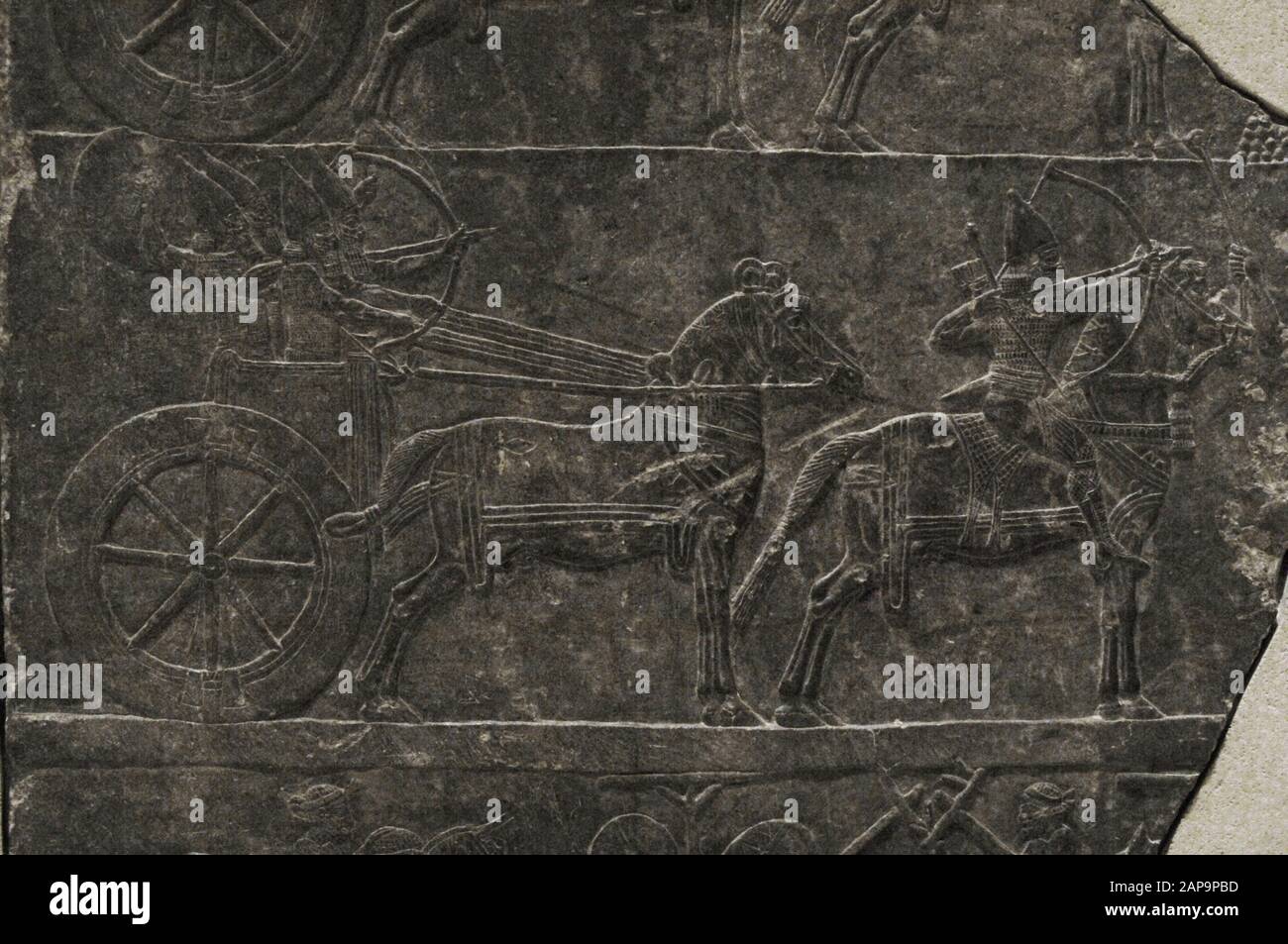 Assyrians. Upper Mesopotamia. Palace of Ashurbanipal, Nineveh, Iraq. 7th century BC. War chariot and riders of the Assyrian army. Alabaster. Louvre Museum. Paris, France. Stock Photohttps://www.alamy.com/image-license-details/?v=1https://www.alamy.com/assyrians-upper-mesopotamia-palace-of-ashurbanipal-nineveh-iraq-7th-century-bc-war-chariot-and-riders-of-the-assyrian-army-alabaster-louvre-museum-paris-france-image340734561.html
Assyrians. Upper Mesopotamia. Palace of Ashurbanipal, Nineveh, Iraq. 7th century BC. War chariot and riders of the Assyrian army. Alabaster. Louvre Museum. Paris, France. Stock Photohttps://www.alamy.com/image-license-details/?v=1https://www.alamy.com/assyrians-upper-mesopotamia-palace-of-ashurbanipal-nineveh-iraq-7th-century-bc-war-chariot-and-riders-of-the-assyrian-army-alabaster-louvre-museum-paris-france-image340734561.htmlRM2AP9PBD–Assyrians. Upper Mesopotamia. Palace of Ashurbanipal, Nineveh, Iraq. 7th century BC. War chariot and riders of the Assyrian army. Alabaster. Louvre Museum. Paris, France.
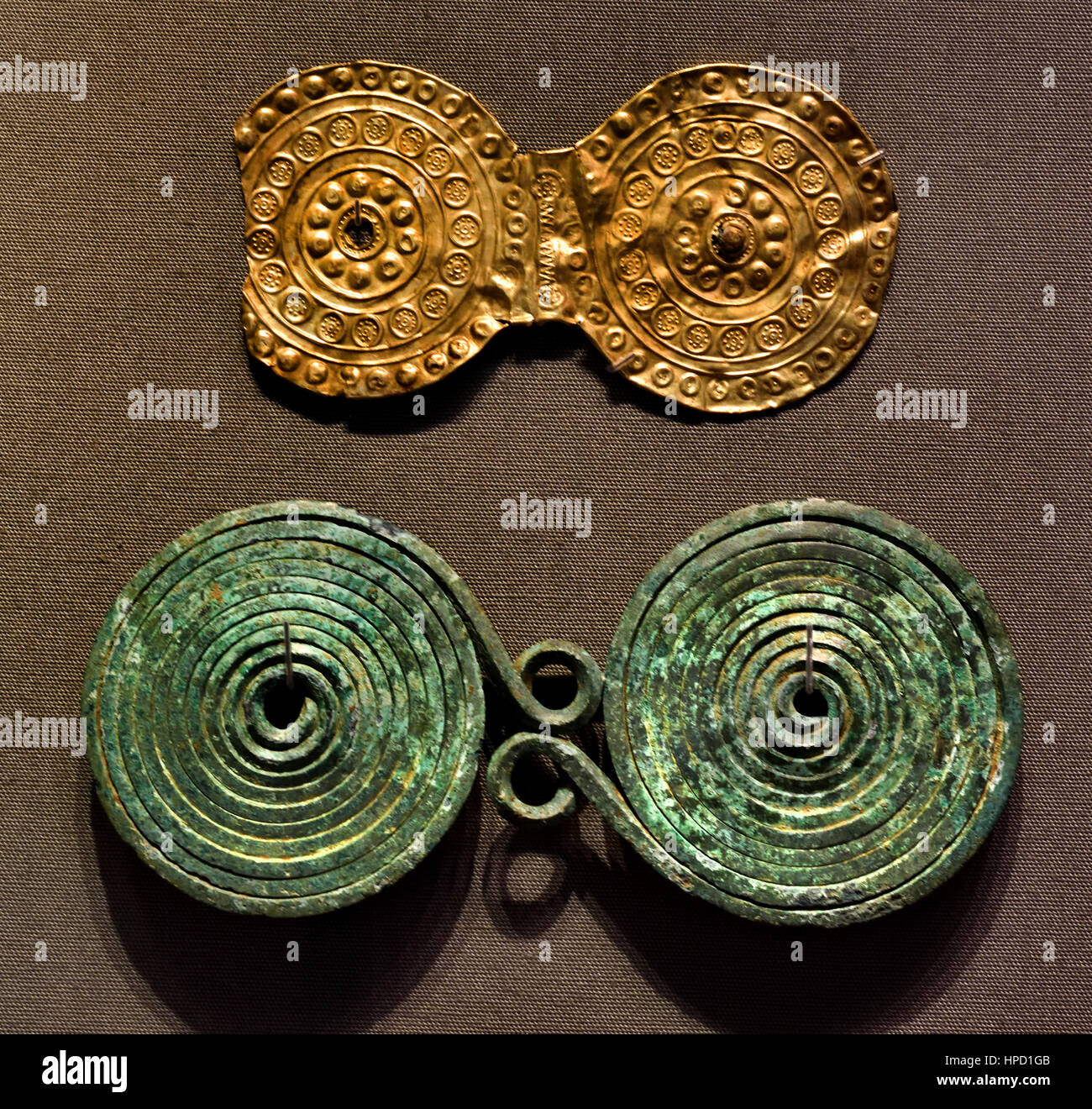 Jewellery 7th Century BC Greek, Kamiros ,Rhodes, Melos, Dodona, Greece, ( Gold , Electrum, silvers, Bronze, 700 - 600 BC , Stock Photohttps://www.alamy.com/image-license-details/?v=1https://www.alamy.com/stock-photo-jewellery-7th-century-bc-greek-kamiros-rhodes-melos-dodona-greece-134281627.html
Jewellery 7th Century BC Greek, Kamiros ,Rhodes, Melos, Dodona, Greece, ( Gold , Electrum, silvers, Bronze, 700 - 600 BC , Stock Photohttps://www.alamy.com/image-license-details/?v=1https://www.alamy.com/stock-photo-jewellery-7th-century-bc-greek-kamiros-rhodes-melos-dodona-greece-134281627.htmlRMHPD1GB–Jewellery 7th Century BC Greek, Kamiros ,Rhodes, Melos, Dodona, Greece, ( Gold , Electrum, silvers, Bronze, 700 - 600 BC ,
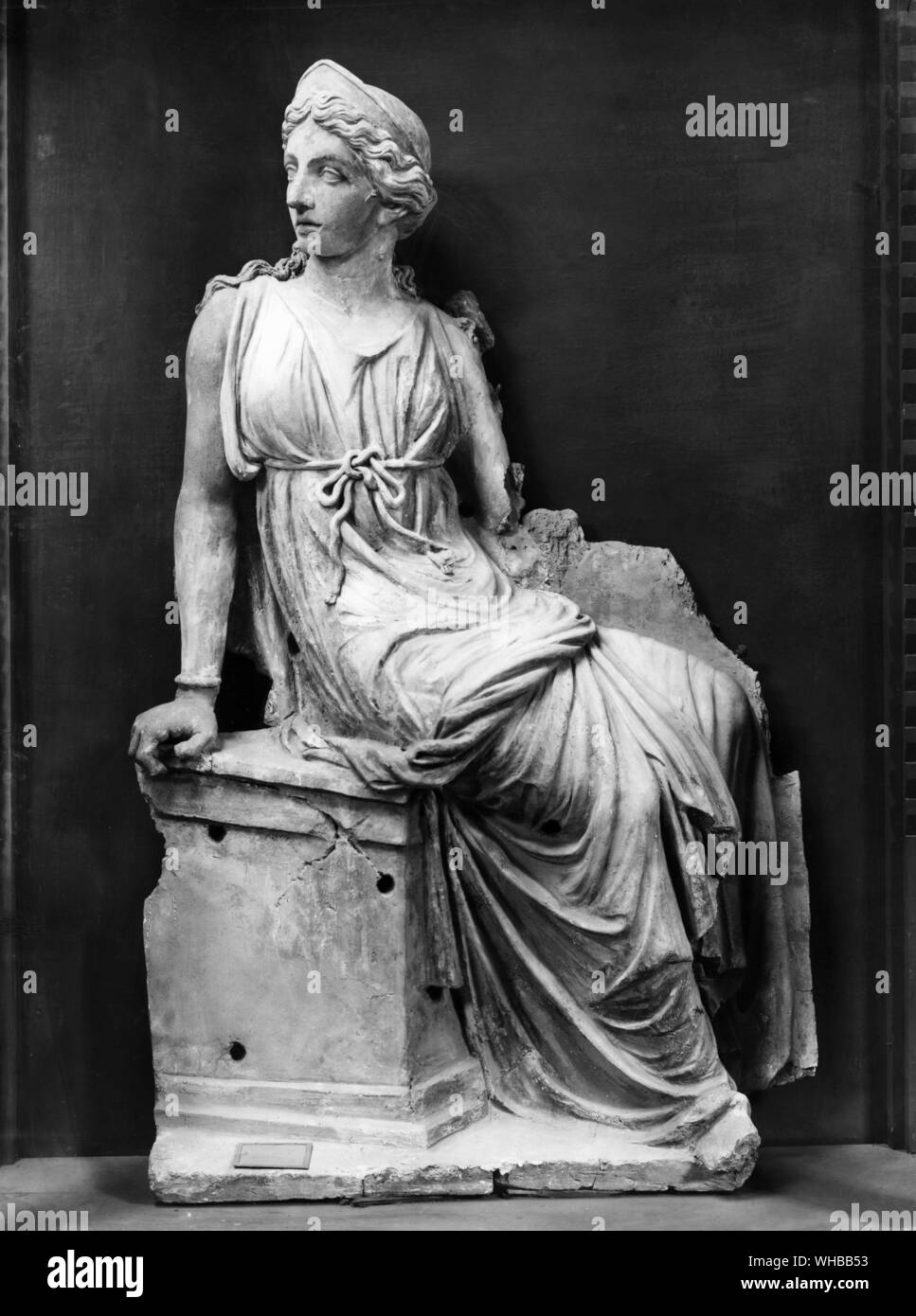 Seated Etruscan . 7th Century BC , terracotta , height 57 1/8 inches or 144 cm. The Capitoline Museum and Gallery , Rome , Italy Stock Photohttps://www.alamy.com/image-license-details/?v=1https://www.alamy.com/seated-etruscan-7th-century-bc-terracotta-height-57-18-inches-or-144-cm-the-capitoline-museum-and-gallery-rome-italy-image268854911.html
Seated Etruscan . 7th Century BC , terracotta , height 57 1/8 inches or 144 cm. The Capitoline Museum and Gallery , Rome , Italy Stock Photohttps://www.alamy.com/image-license-details/?v=1https://www.alamy.com/seated-etruscan-7th-century-bc-terracotta-height-57-18-inches-or-144-cm-the-capitoline-museum-and-gallery-rome-italy-image268854911.htmlRMWHBB53–Seated Etruscan . 7th Century BC , terracotta , height 57 1/8 inches or 144 cm. The Capitoline Museum and Gallery , Rome , Italy
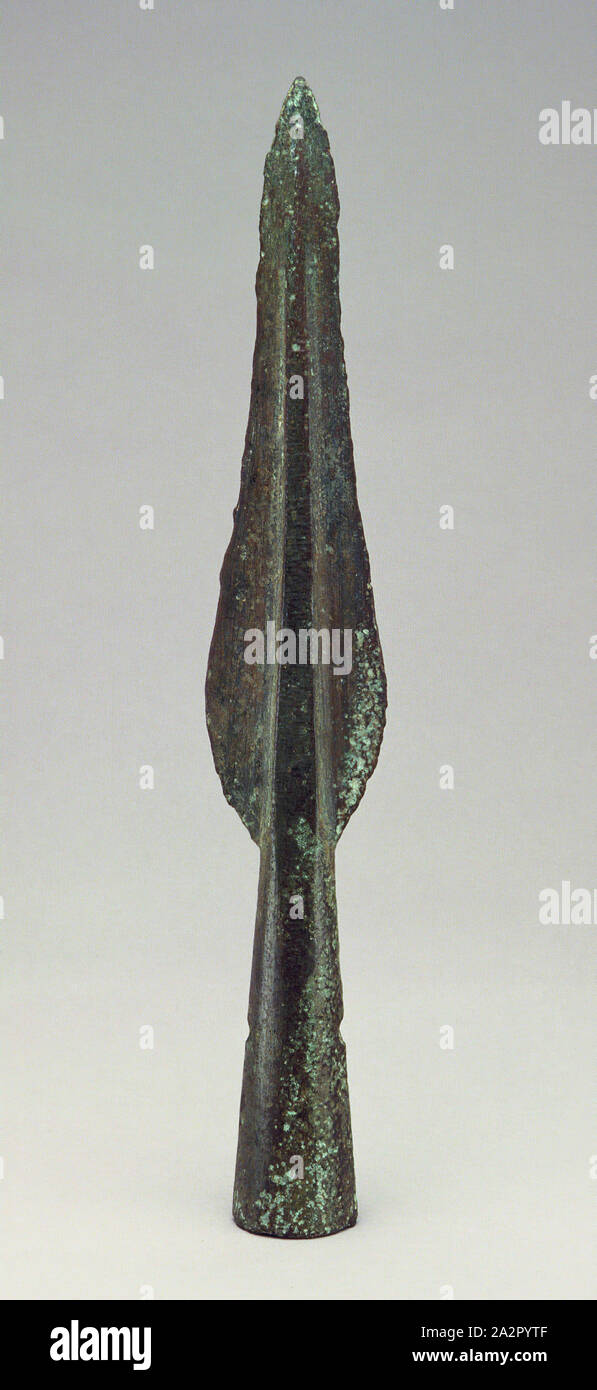 Etruscan, Spear Head, 8th/7th Century BC, bronze, 11 3/4 x 1 7/8 x 1 1/8 in Stock Photohttps://www.alamy.com/image-license-details/?v=1https://www.alamy.com/etruscan-spear-head-8th7th-century-bc-bronze-11-34-x-1-78-x-1-18-in-image328731103.html
Etruscan, Spear Head, 8th/7th Century BC, bronze, 11 3/4 x 1 7/8 x 1 1/8 in Stock Photohttps://www.alamy.com/image-license-details/?v=1https://www.alamy.com/etruscan-spear-head-8th7th-century-bc-bronze-11-34-x-1-78-x-1-18-in-image328731103.htmlRM2A2PYTF–Etruscan, Spear Head, 8th/7th Century BC, bronze, 11 3/4 x 1 7/8 x 1 1/8 in
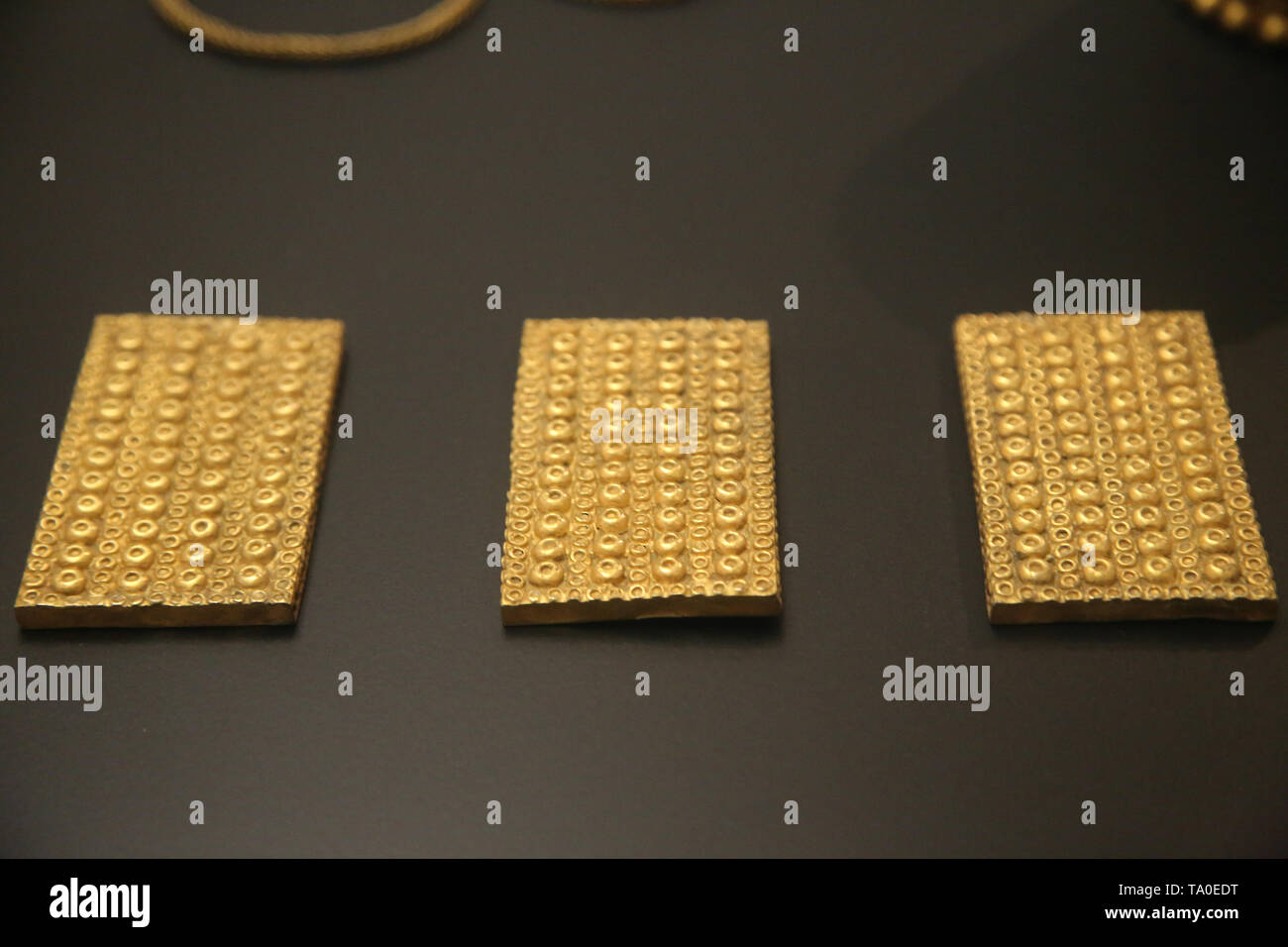 Treasure of El Carambolo. Tartessian and Phoecian culture. 5th-7th century BC. Camas, Andalusia, Spain. Archaeological Museum of Seville. Spain. Stock Photohttps://www.alamy.com/image-license-details/?v=1https://www.alamy.com/treasure-of-el-carambolo-tartessian-and-phoecian-culture-5th-7th-century-bc-camas-andalusia-spain-archaeological-museum-of-seville-spain-image247103076.html
Treasure of El Carambolo. Tartessian and Phoecian culture. 5th-7th century BC. Camas, Andalusia, Spain. Archaeological Museum of Seville. Spain. Stock Photohttps://www.alamy.com/image-license-details/?v=1https://www.alamy.com/treasure-of-el-carambolo-tartessian-and-phoecian-culture-5th-7th-century-bc-camas-andalusia-spain-archaeological-museum-of-seville-spain-image247103076.htmlRMTA0EDT–Treasure of El Carambolo. Tartessian and Phoecian culture. 5th-7th century BC. Camas, Andalusia, Spain. Archaeological Museum of Seville. Spain.
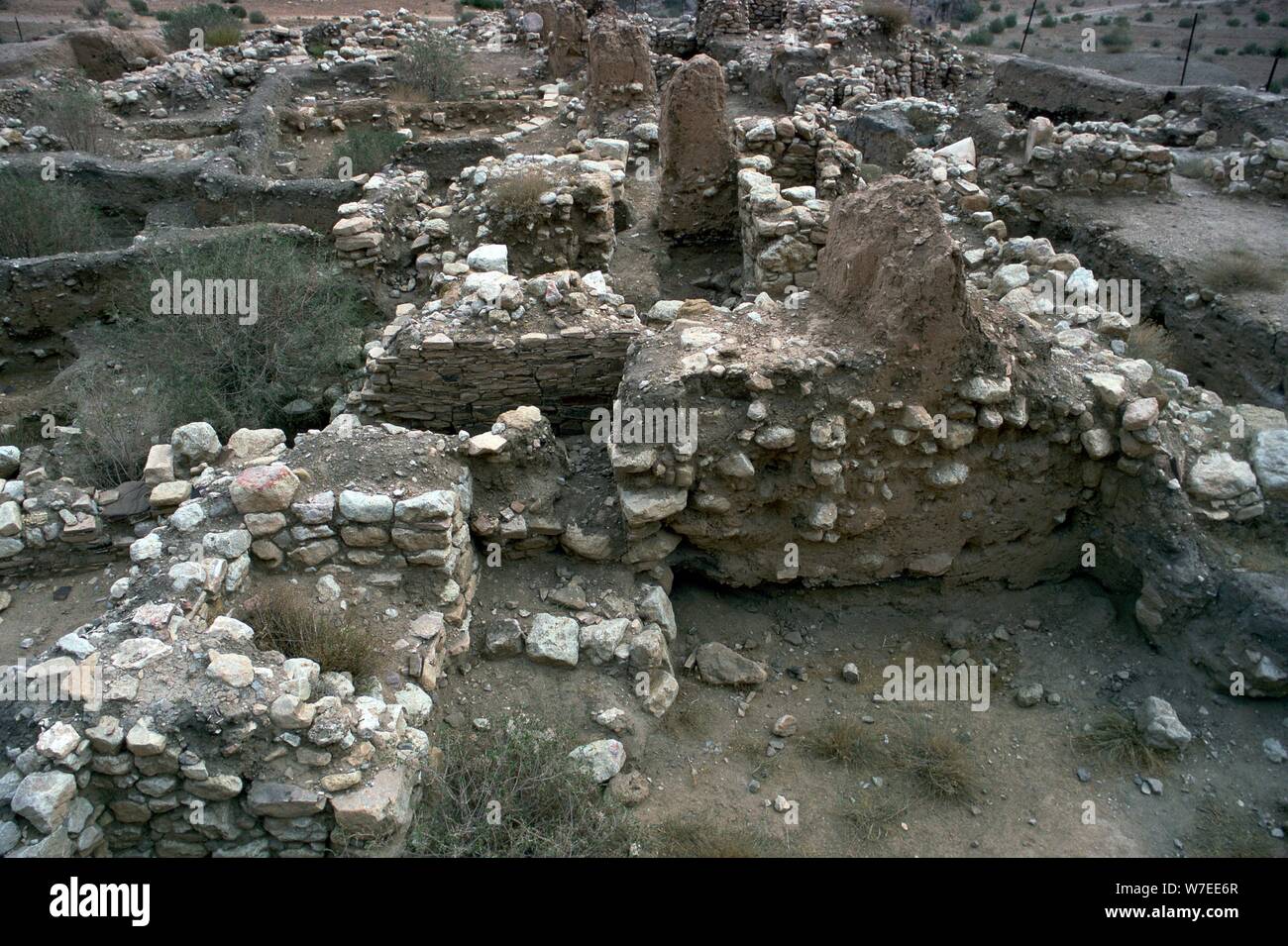 Excavated House Walls, 7th century BC. Artist: Unknown Stock Photohttps://www.alamy.com/image-license-details/?v=1https://www.alamy.com/excavated-house-walls-7th-century-bc-artist-unknown-image262776607.html
Excavated House Walls, 7th century BC. Artist: Unknown Stock Photohttps://www.alamy.com/image-license-details/?v=1https://www.alamy.com/excavated-house-walls-7th-century-bc-artist-unknown-image262776607.htmlRMW7EE6R–Excavated House Walls, 7th century BC. Artist: Unknown
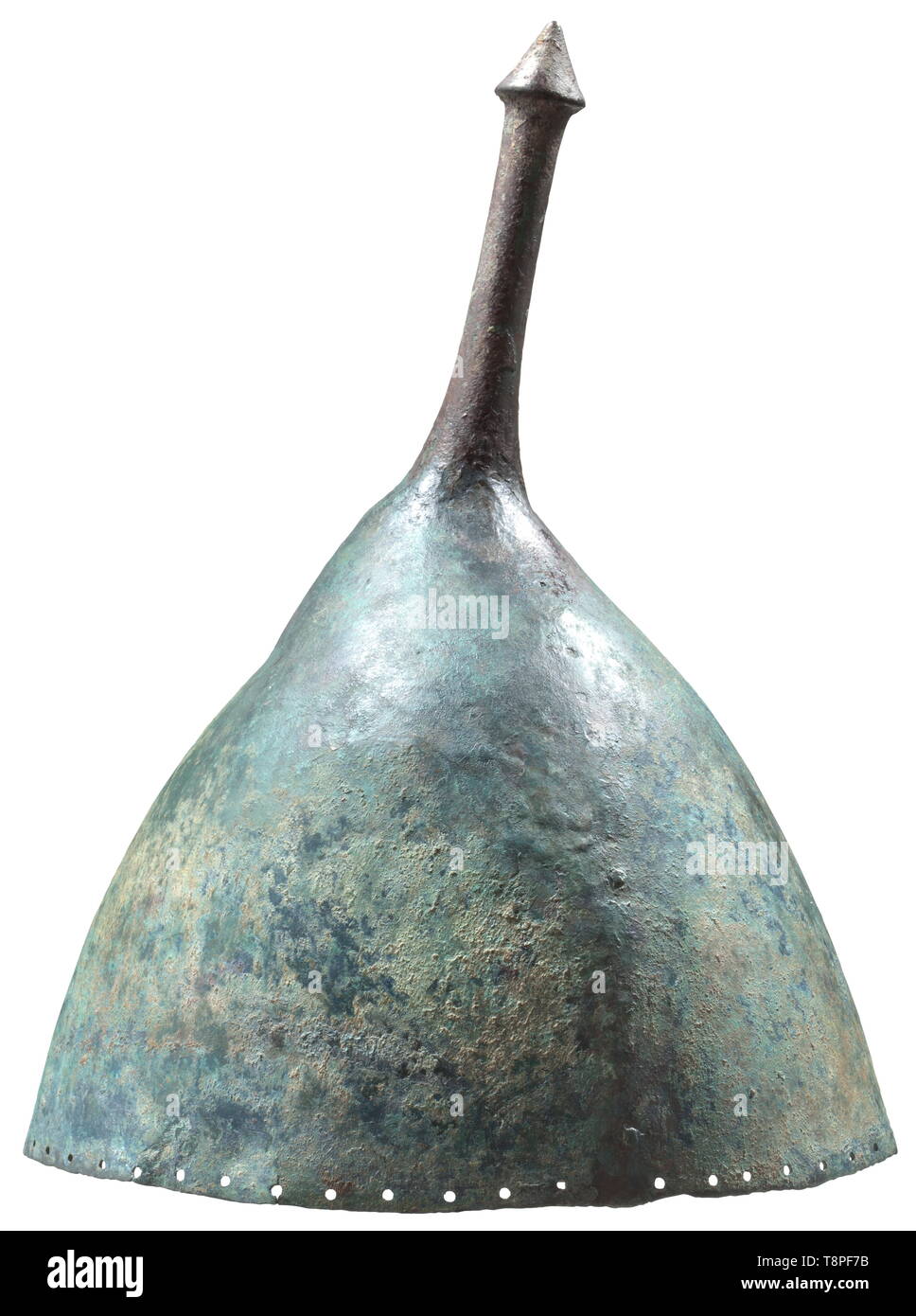 An Assyrian pointed, conical bronze helmet, 8th - 7th century BC Featuring an indistinct medial ridge and long stem crowned by a conical spike, probably used for the fastening of a crest. Ap ancient world, Additional-Rights-Clearance-Info-Not-Available Stock Photohttps://www.alamy.com/image-license-details/?v=1https://www.alamy.com/an-assyrian-pointed-conical-bronze-helmet-8th-7th-century-bc-featuring-an-indistinct-medial-ridge-and-long-stem-crowned-by-a-conical-spike-probably-used-for-the-fastening-of-a-crest-ap-ancient-world-additional-rights-clearance-info-not-available-image246357311.html
An Assyrian pointed, conical bronze helmet, 8th - 7th century BC Featuring an indistinct medial ridge and long stem crowned by a conical spike, probably used for the fastening of a crest. Ap ancient world, Additional-Rights-Clearance-Info-Not-Available Stock Photohttps://www.alamy.com/image-license-details/?v=1https://www.alamy.com/an-assyrian-pointed-conical-bronze-helmet-8th-7th-century-bc-featuring-an-indistinct-medial-ridge-and-long-stem-crowned-by-a-conical-spike-probably-used-for-the-fastening-of-a-crest-ap-ancient-world-additional-rights-clearance-info-not-available-image246357311.htmlRMT8PF7B–An Assyrian pointed, conical bronze helmet, 8th - 7th century BC Featuring an indistinct medial ridge and long stem crowned by a conical spike, probably used for the fastening of a crest. Ap ancient world, Additional-Rights-Clearance-Info-Not-Available
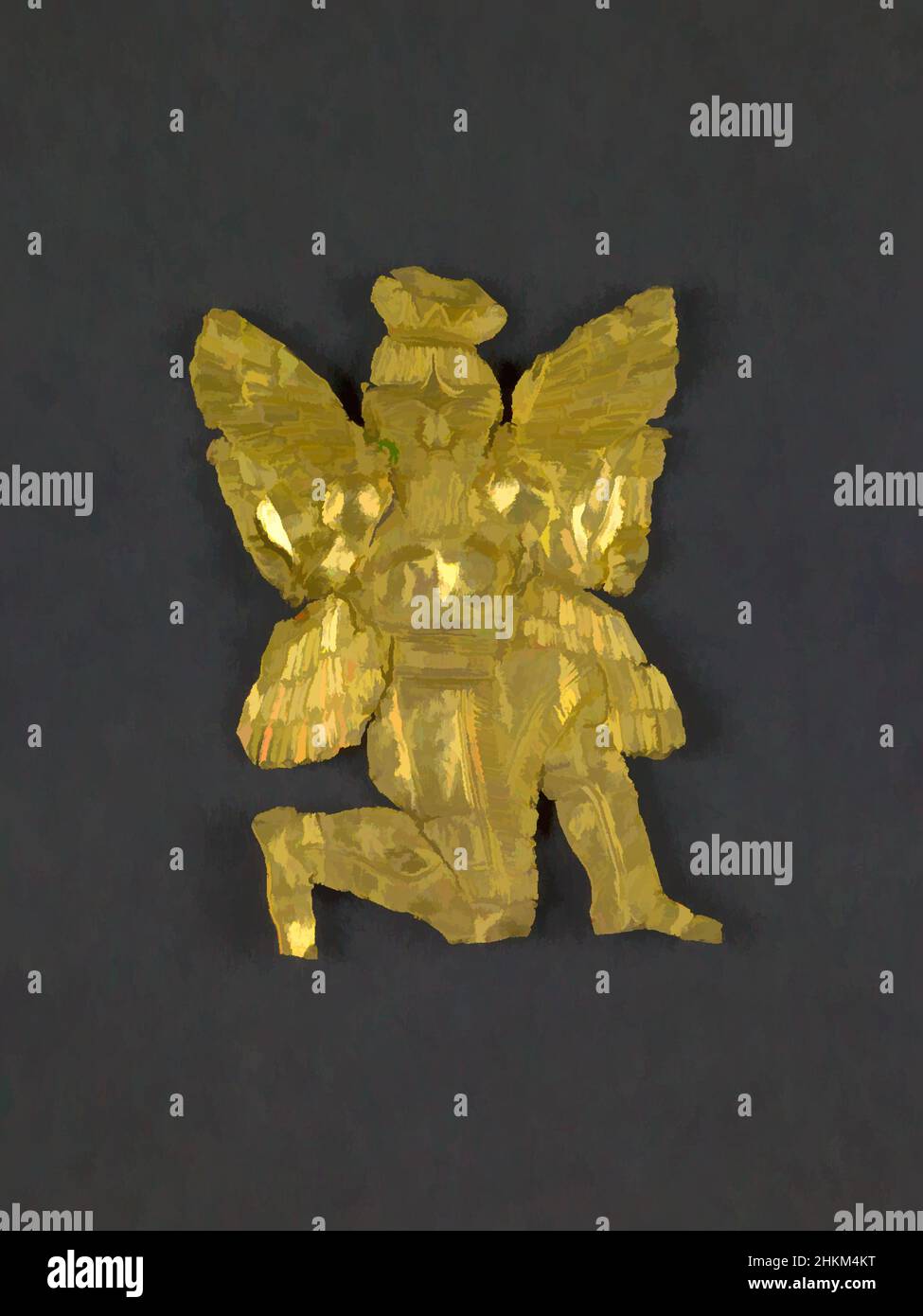 Art inspired by Pair of Appliqués in the Form of Winged Genies, Near Eastern, Mesopotamian, Assyrian, Neo-Assyrian period, 883-612 BC, 7th century BC, Gold, Ziwiye, Kurdistan province, Iran, Asia, Metalwork, height: 1 3/4 in. (4.4 cm, Classic works modernized by Artotop with a splash of modernity. Shapes, color and value, eye-catching visual impact on art. Emotions through freedom of artworks in a contemporary way. A timeless message pursuing a wildly creative new direction. Artists turning to the digital medium and creating the Artotop NFT Stock Photohttps://www.alamy.com/image-license-details/?v=1https://www.alamy.com/art-inspired-by-pair-of-appliqus-in-the-form-of-winged-genies-near-eastern-mesopotamian-assyrian-neo-assyrian-period-883-612-bc-7th-century-bc-gold-ziwiye-kurdistan-province-iran-asia-metalwork-height-1-34-in-44-cm-classic-works-modernized-by-artotop-with-a-splash-of-modernity-shapes-color-and-value-eye-catching-visual-impact-on-art-emotions-through-freedom-of-artworks-in-a-contemporary-way-a-timeless-message-pursuing-a-wildly-creative-new-direction-artists-turning-to-the-digital-medium-and-creating-the-artotop-nft-image459590764.html
Art inspired by Pair of Appliqués in the Form of Winged Genies, Near Eastern, Mesopotamian, Assyrian, Neo-Assyrian period, 883-612 BC, 7th century BC, Gold, Ziwiye, Kurdistan province, Iran, Asia, Metalwork, height: 1 3/4 in. (4.4 cm, Classic works modernized by Artotop with a splash of modernity. Shapes, color and value, eye-catching visual impact on art. Emotions through freedom of artworks in a contemporary way. A timeless message pursuing a wildly creative new direction. Artists turning to the digital medium and creating the Artotop NFT Stock Photohttps://www.alamy.com/image-license-details/?v=1https://www.alamy.com/art-inspired-by-pair-of-appliqus-in-the-form-of-winged-genies-near-eastern-mesopotamian-assyrian-neo-assyrian-period-883-612-bc-7th-century-bc-gold-ziwiye-kurdistan-province-iran-asia-metalwork-height-1-34-in-44-cm-classic-works-modernized-by-artotop-with-a-splash-of-modernity-shapes-color-and-value-eye-catching-visual-impact-on-art-emotions-through-freedom-of-artworks-in-a-contemporary-way-a-timeless-message-pursuing-a-wildly-creative-new-direction-artists-turning-to-the-digital-medium-and-creating-the-artotop-nft-image459590764.htmlRF2HKM4KT–Art inspired by Pair of Appliqués in the Form of Winged Genies, Near Eastern, Mesopotamian, Assyrian, Neo-Assyrian period, 883-612 BC, 7th century BC, Gold, Ziwiye, Kurdistan province, Iran, Asia, Metalwork, height: 1 3/4 in. (4.4 cm, Classic works modernized by Artotop with a splash of modernity. Shapes, color and value, eye-catching visual impact on art. Emotions through freedom of artworks in a contemporary way. A timeless message pursuing a wildly creative new direction. Artists turning to the digital medium and creating the Artotop NFT
 Engraving of Tripoli, the capital of Libya, circa 1900. Tripoli was founded in the 7th century BC by the Phoenicians, who gave it the Libyco-Berber name Oyat before passing into the hands of the Greek rulers of Cyrenaica as Oea. Due to the city's long history, there are many sites of archeological significance in Tripoli. Stock Photohttps://www.alamy.com/image-license-details/?v=1https://www.alamy.com/engraving-of-tripoli-the-capital-of-libya-circa-1900-tripoli-was-founded-in-the-7th-century-bc-by-the-phoenicians-who-gave-it-the-libyco-berber-name-oyat-before-passing-into-the-hands-of-the-greek-rulers-of-cyrenaica-as-oea-due-to-the-citys-long-history-there-are-many-sites-of-archeological-significance-in-tripoli-image596504370.html
Engraving of Tripoli, the capital of Libya, circa 1900. Tripoli was founded in the 7th century BC by the Phoenicians, who gave it the Libyco-Berber name Oyat before passing into the hands of the Greek rulers of Cyrenaica as Oea. Due to the city's long history, there are many sites of archeological significance in Tripoli. Stock Photohttps://www.alamy.com/image-license-details/?v=1https://www.alamy.com/engraving-of-tripoli-the-capital-of-libya-circa-1900-tripoli-was-founded-in-the-7th-century-bc-by-the-phoenicians-who-gave-it-the-libyco-berber-name-oyat-before-passing-into-the-hands-of-the-greek-rulers-of-cyrenaica-as-oea-due-to-the-citys-long-history-there-are-many-sites-of-archeological-significance-in-tripoli-image596504370.htmlRM2WJD3BE–Engraving of Tripoli, the capital of Libya, circa 1900. Tripoli was founded in the 7th century BC by the Phoenicians, who gave it the Libyco-Berber name Oyat before passing into the hands of the Greek rulers of Cyrenaica as Oea. Due to the city's long history, there are many sites of archeological significance in Tripoli.
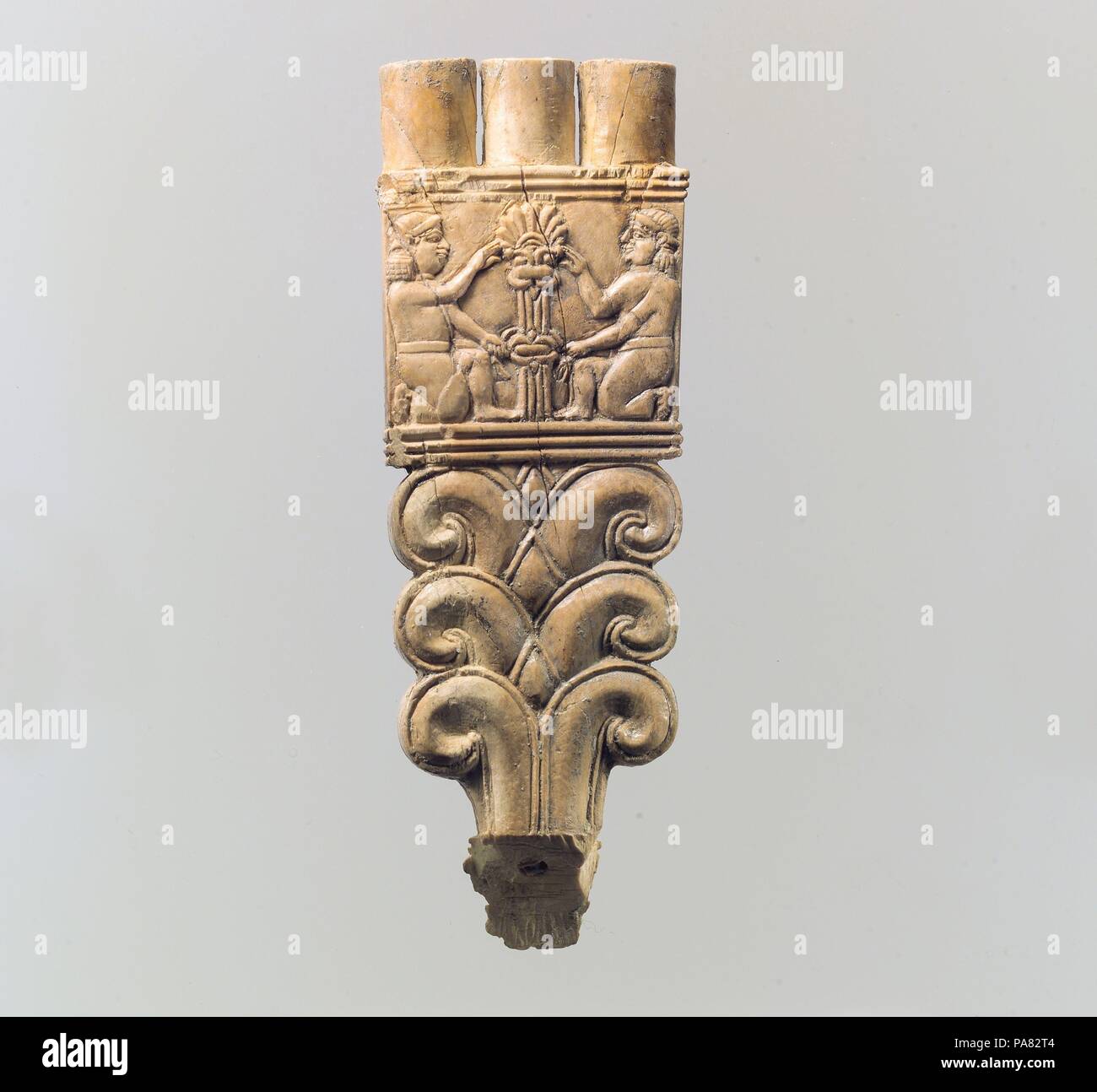 Handle of a flywhisk or fan. Culture: Assyrian. Dimensions: H. 4 x W. 1 3/8 in. (10.2 x 3.5 cm). Date: ca. 8th-7th century BC. Both sides of this handle are decorated with two figures kneeling before a stylized tree, an image perhaps related to similar ritual scenes on reliefs from Assyrian palaces. Such Assyrian style ivories are usually carved using an incised technique, but this is a rare example carved in relief. As the figures are beardless, they may be eunuchs or, more likely, women. They are shown plucking what may be pomegranates, a fruit whose many seeds led it to be associated with Stock Photohttps://www.alamy.com/image-license-details/?v=1https://www.alamy.com/handle-of-a-flywhisk-or-fan-culture-assyrian-dimensions-h-4-x-w-1-38-in-102-x-35-cm-date-ca-8th-7th-century-bc-both-sides-of-this-handle-are-decorated-with-two-figures-kneeling-before-a-stylized-tree-an-image-perhaps-related-to-similar-ritual-scenes-on-reliefs-from-assyrian-palaces-such-assyrian-style-ivories-are-usually-carved-using-an-incised-technique-but-this-is-a-rare-example-carved-in-relief-as-the-figures-are-beardless-they-may-be-eunuchs-or-more-likely-women-they-are-shown-plucking-what-may-be-pomegranates-a-fruit-whose-many-seeds-led-it-to-be-associated-with-image212848836.html
Handle of a flywhisk or fan. Culture: Assyrian. Dimensions: H. 4 x W. 1 3/8 in. (10.2 x 3.5 cm). Date: ca. 8th-7th century BC. Both sides of this handle are decorated with two figures kneeling before a stylized tree, an image perhaps related to similar ritual scenes on reliefs from Assyrian palaces. Such Assyrian style ivories are usually carved using an incised technique, but this is a rare example carved in relief. As the figures are beardless, they may be eunuchs or, more likely, women. They are shown plucking what may be pomegranates, a fruit whose many seeds led it to be associated with Stock Photohttps://www.alamy.com/image-license-details/?v=1https://www.alamy.com/handle-of-a-flywhisk-or-fan-culture-assyrian-dimensions-h-4-x-w-1-38-in-102-x-35-cm-date-ca-8th-7th-century-bc-both-sides-of-this-handle-are-decorated-with-two-figures-kneeling-before-a-stylized-tree-an-image-perhaps-related-to-similar-ritual-scenes-on-reliefs-from-assyrian-palaces-such-assyrian-style-ivories-are-usually-carved-using-an-incised-technique-but-this-is-a-rare-example-carved-in-relief-as-the-figures-are-beardless-they-may-be-eunuchs-or-more-likely-women-they-are-shown-plucking-what-may-be-pomegranates-a-fruit-whose-many-seeds-led-it-to-be-associated-with-image212848836.htmlRMPA82T4–Handle of a flywhisk or fan. Culture: Assyrian. Dimensions: H. 4 x W. 1 3/8 in. (10.2 x 3.5 cm). Date: ca. 8th-7th century BC. Both sides of this handle are decorated with two figures kneeling before a stylized tree, an image perhaps related to similar ritual scenes on reliefs from Assyrian palaces. Such Assyrian style ivories are usually carved using an incised technique, but this is a rare example carved in relief. As the figures are beardless, they may be eunuchs or, more likely, women. They are shown plucking what may be pomegranates, a fruit whose many seeds led it to be associated with
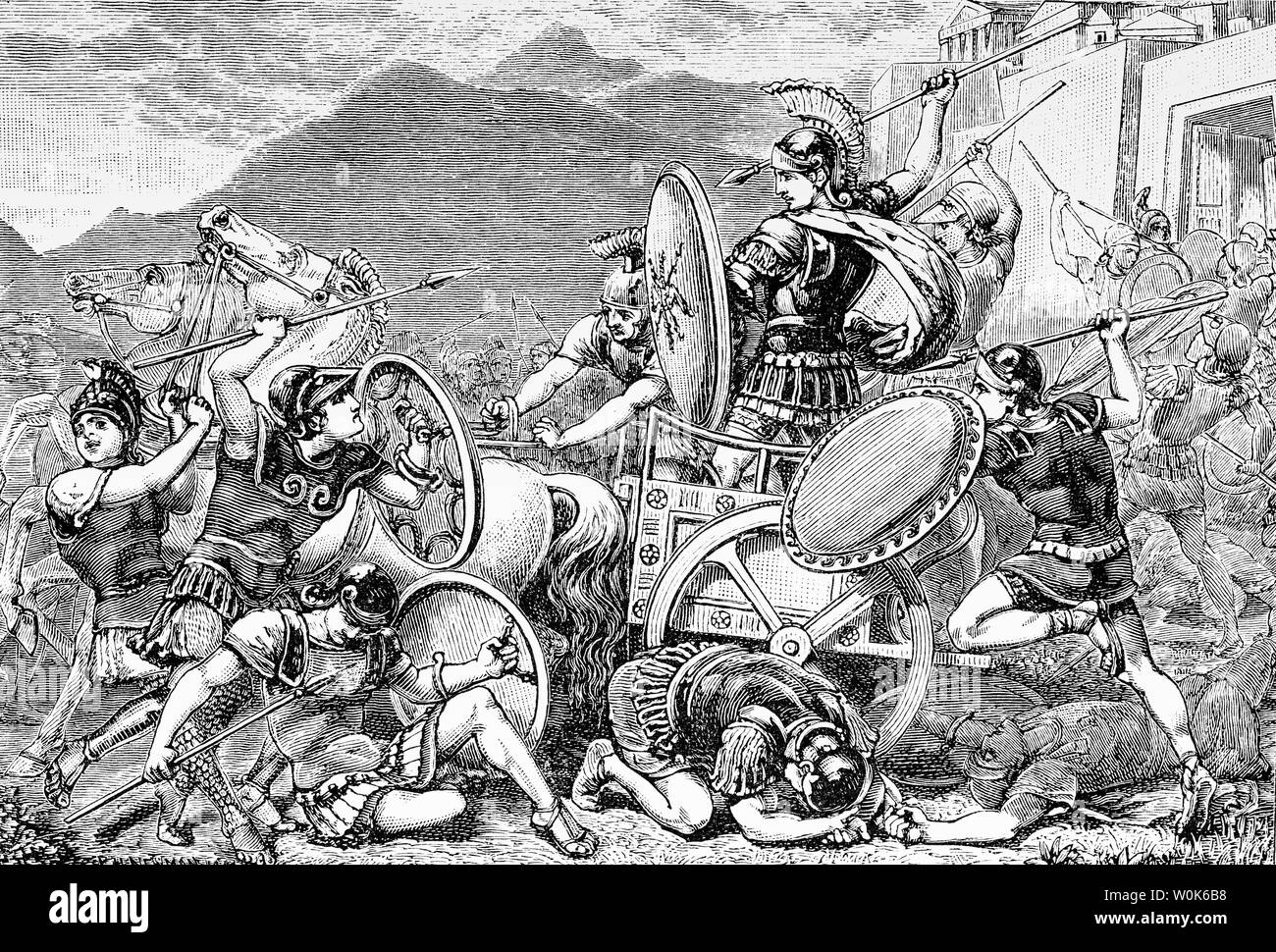 Aristomenes was a king of Messenia, celebrated for his struggle with the Spartans in the Second Messenian War (685–668 BC), and his resistance to them on Mount Eira for 11 years. At length the mountain, near the Kakaletri, in the Peloponnese in Greece, fell to the enemy, while he escaped and, according to legend, was snatched up by the gods; in fact he died at Rhodes Stock Photohttps://www.alamy.com/image-license-details/?v=1https://www.alamy.com/aristomenes-was-a-king-of-messenia-celebrated-for-his-struggle-with-the-spartans-in-the-second-messenian-war-685668-bc-and-his-resistance-to-them-on-mount-eira-for-11-years-at-length-the-mountain-near-the-kakaletri-in-the-peloponnese-in-greece-fell-to-the-enemy-while-he-escaped-and-according-to-legend-was-snatched-up-by-the-gods-in-fact-he-died-at-rhodes-image258577628.html
Aristomenes was a king of Messenia, celebrated for his struggle with the Spartans in the Second Messenian War (685–668 BC), and his resistance to them on Mount Eira for 11 years. At length the mountain, near the Kakaletri, in the Peloponnese in Greece, fell to the enemy, while he escaped and, according to legend, was snatched up by the gods; in fact he died at Rhodes Stock Photohttps://www.alamy.com/image-license-details/?v=1https://www.alamy.com/aristomenes-was-a-king-of-messenia-celebrated-for-his-struggle-with-the-spartans-in-the-second-messenian-war-685668-bc-and-his-resistance-to-them-on-mount-eira-for-11-years-at-length-the-mountain-near-the-kakaletri-in-the-peloponnese-in-greece-fell-to-the-enemy-while-he-escaped-and-according-to-legend-was-snatched-up-by-the-gods-in-fact-he-died-at-rhodes-image258577628.htmlRMW0K6B8–Aristomenes was a king of Messenia, celebrated for his struggle with the Spartans in the Second Messenian War (685–668 BC), and his resistance to them on Mount Eira for 11 years. At length the mountain, near the Kakaletri, in the Peloponnese in Greece, fell to the enemy, while he escaped and, according to legend, was snatched up by the gods; in fact he died at Rhodes
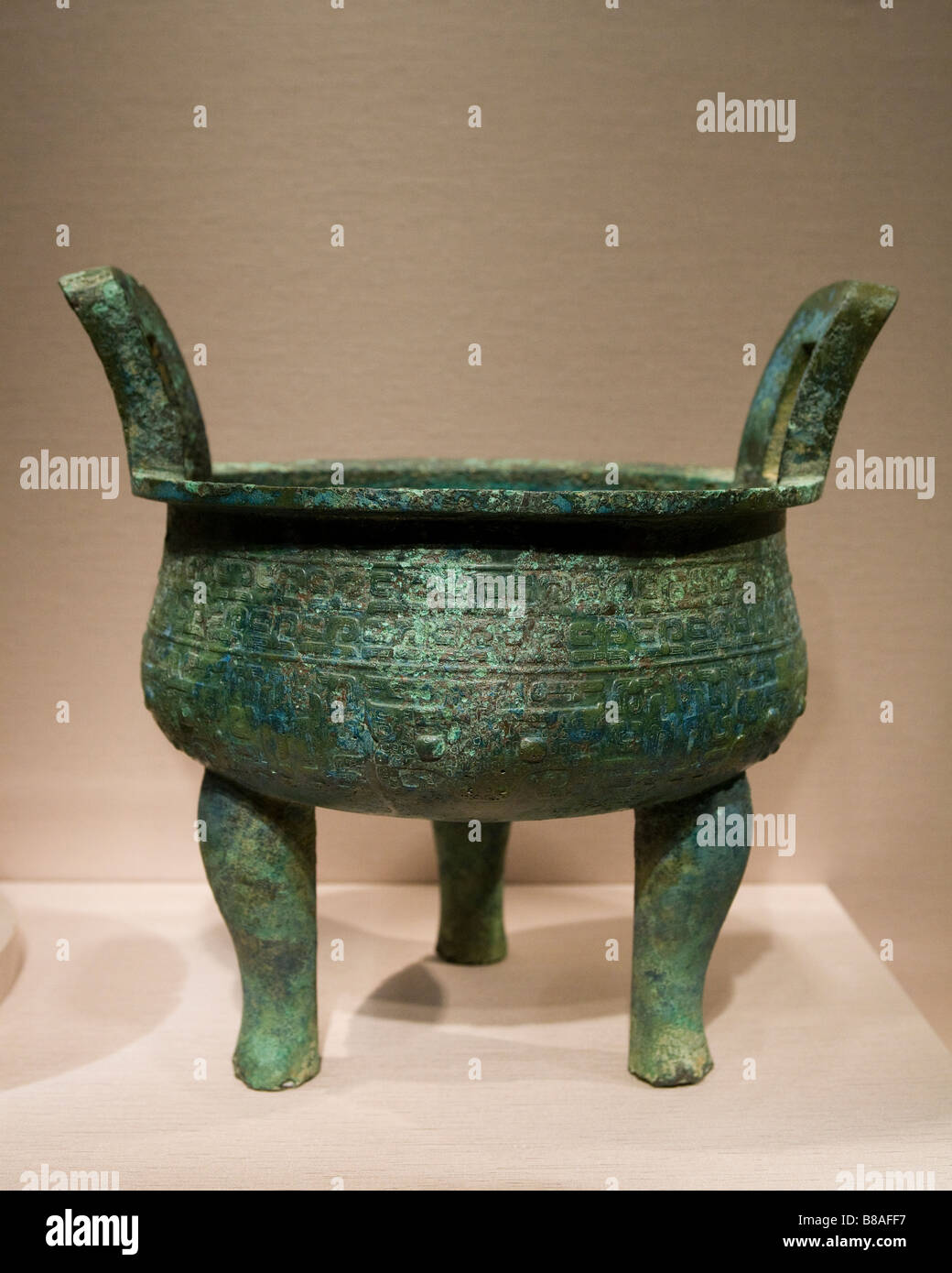 Bronze Ritual container - China, Eastern Zhou dynasty 7th century B.C. Stock Photohttps://www.alamy.com/image-license-details/?v=1https://www.alamy.com/stock-photo-bronze-ritual-container-china-eastern-zhou-dynasty-7th-century-bc-22359323.html
Bronze Ritual container - China, Eastern Zhou dynasty 7th century B.C. Stock Photohttps://www.alamy.com/image-license-details/?v=1https://www.alamy.com/stock-photo-bronze-ritual-container-china-eastern-zhou-dynasty-7th-century-bc-22359323.htmlRMB8AFF7–Bronze Ritual container - China, Eastern Zhou dynasty 7th century B.C.
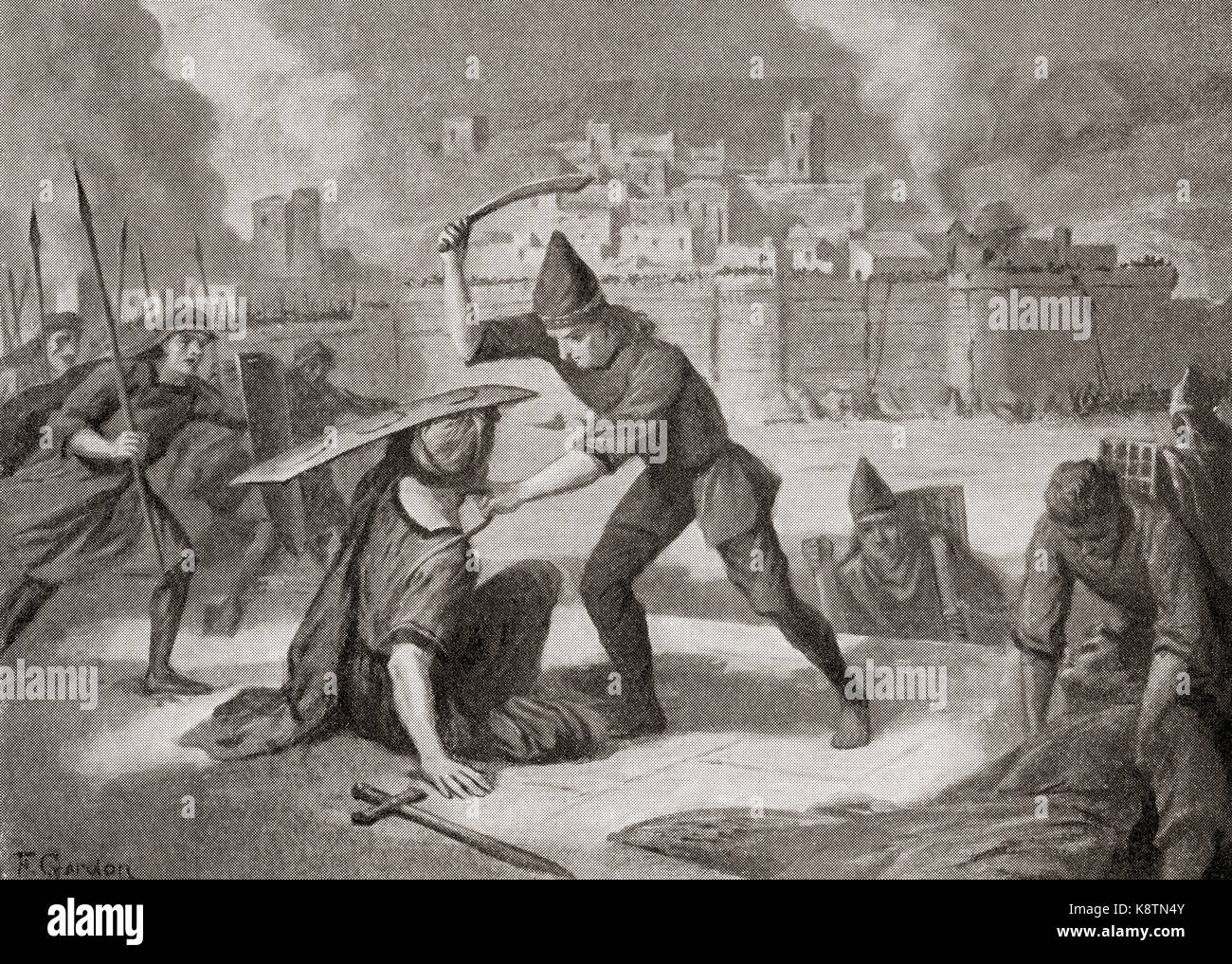 The city of Sardis or Sardes captured by the Cimmerians in the 7th century BC. From Hutchinson's History of the Nations, published 1915. Stock Photohttps://www.alamy.com/image-license-details/?v=1https://www.alamy.com/stock-image-the-city-of-sardis-or-sardes-captured-by-the-cimmerians-in-the-7th-160354011.html
The city of Sardis or Sardes captured by the Cimmerians in the 7th century BC. From Hutchinson's History of the Nations, published 1915. Stock Photohttps://www.alamy.com/image-license-details/?v=1https://www.alamy.com/stock-image-the-city-of-sardis-or-sardes-captured-by-the-cimmerians-in-the-7th-160354011.htmlRMK8TN4Y–The city of Sardis or Sardes captured by the Cimmerians in the 7th century BC. From Hutchinson's History of the Nations, published 1915.
 . Tomba della scimmia . end of 7th century BC. see filename or category 611 Tomba della scimmia 01 Stock Photohttps://www.alamy.com/image-license-details/?v=1https://www.alamy.com/tomba-della-scimmia-end-of-7th-century-bc-see-filename-or-category-611-tomba-della-scimmia-01-image188023357.html
. Tomba della scimmia . end of 7th century BC. see filename or category 611 Tomba della scimmia 01 Stock Photohttps://www.alamy.com/image-license-details/?v=1https://www.alamy.com/tomba-della-scimmia-end-of-7th-century-bc-see-filename-or-category-611-tomba-della-scimmia-01-image188023357.htmlRMMWW5KW–. Tomba della scimmia . end of 7th century BC. see filename or category 611 Tomba della scimmia 01
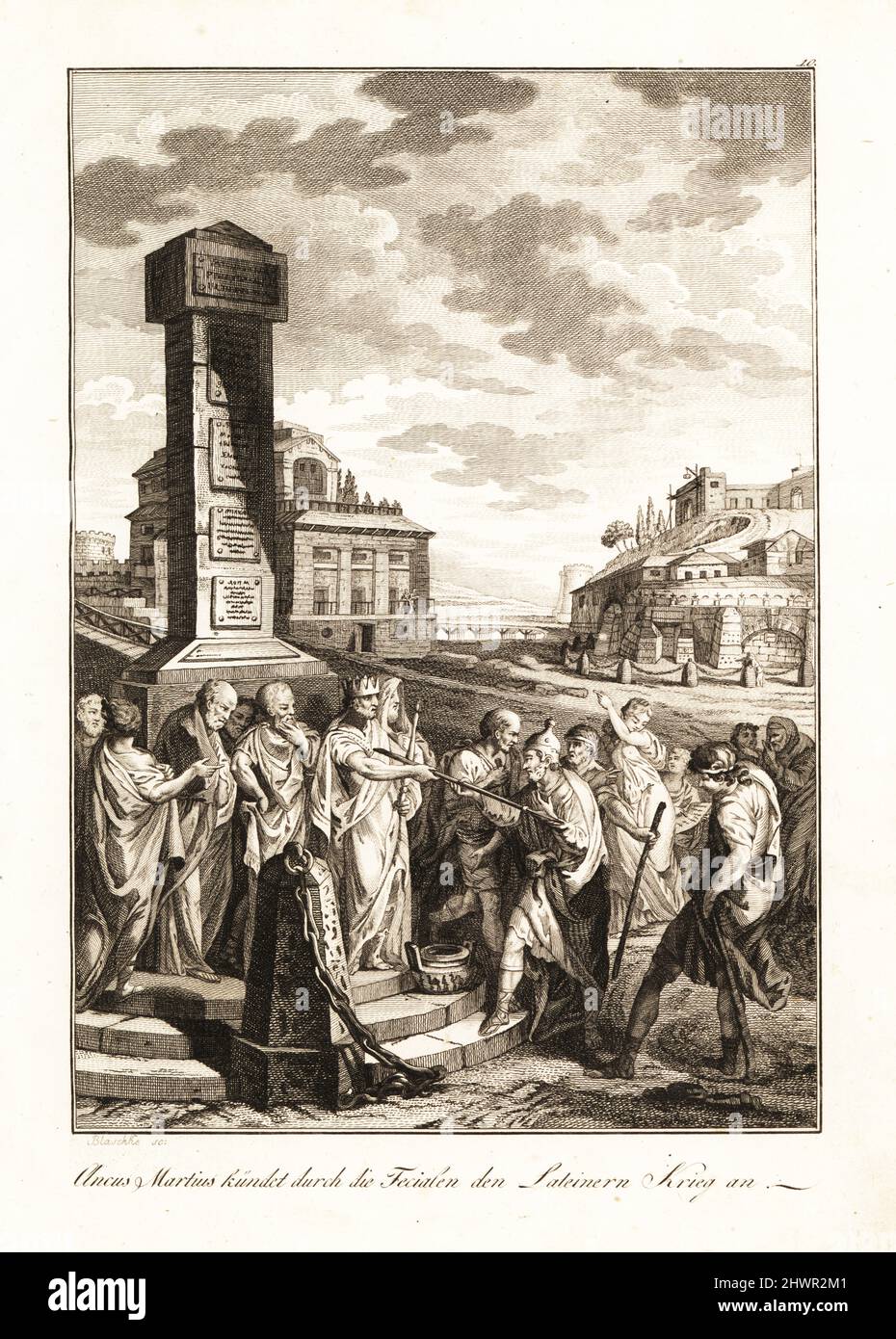 Ancus Marcius, legendary fourth king of Rome, sending priests or Fetials to declare war against the Latins, 7th century BC. Ancus Martius envoie des Feciales declarer la guerre aux Latins. Copperplate engraving by János Blaschke after a design by Gabriel de St. Aubin from Professor Joseph Rudolf Zappe’s Gemalde aus der romischen Geschichte, Pictures of Roman History, Joseph Schalbacher, Vienna, 1800. German edition of Abbe Claude Francois Xavier Millot’s Abrege de l’Histoire Romaine. Stock Photohttps://www.alamy.com/image-license-details/?v=1https://www.alamy.com/ancus-marcius-legendary-fourth-king-of-rome-sending-priests-or-fetials-to-declare-war-against-the-latins-7th-century-bc-ancus-martius-envoie-des-feciales-declarer-la-guerre-aux-latins-copperplate-engraving-by-jnos-blaschke-after-a-design-by-gabriel-de-st-aubin-from-professor-joseph-rudolf-zappes-gemalde-aus-der-romischen-geschichte-pictures-of-roman-history-joseph-schalbacher-vienna-1800-german-edition-of-abbe-claude-francois-xavier-millots-abrege-de-lhistoire-romaine-image463342993.html
Ancus Marcius, legendary fourth king of Rome, sending priests or Fetials to declare war against the Latins, 7th century BC. Ancus Martius envoie des Feciales declarer la guerre aux Latins. Copperplate engraving by János Blaschke after a design by Gabriel de St. Aubin from Professor Joseph Rudolf Zappe’s Gemalde aus der romischen Geschichte, Pictures of Roman History, Joseph Schalbacher, Vienna, 1800. German edition of Abbe Claude Francois Xavier Millot’s Abrege de l’Histoire Romaine. Stock Photohttps://www.alamy.com/image-license-details/?v=1https://www.alamy.com/ancus-marcius-legendary-fourth-king-of-rome-sending-priests-or-fetials-to-declare-war-against-the-latins-7th-century-bc-ancus-martius-envoie-des-feciales-declarer-la-guerre-aux-latins-copperplate-engraving-by-jnos-blaschke-after-a-design-by-gabriel-de-st-aubin-from-professor-joseph-rudolf-zappes-gemalde-aus-der-romischen-geschichte-pictures-of-roman-history-joseph-schalbacher-vienna-1800-german-edition-of-abbe-claude-francois-xavier-millots-abrege-de-lhistoire-romaine-image463342993.htmlRM2HWR2M1–Ancus Marcius, legendary fourth king of Rome, sending priests or Fetials to declare war against the Latins, 7th century BC. Ancus Martius envoie des Feciales declarer la guerre aux Latins. Copperplate engraving by János Blaschke after a design by Gabriel de St. Aubin from Professor Joseph Rudolf Zappe’s Gemalde aus der romischen Geschichte, Pictures of Roman History, Joseph Schalbacher, Vienna, 1800. German edition of Abbe Claude Francois Xavier Millot’s Abrege de l’Histoire Romaine.
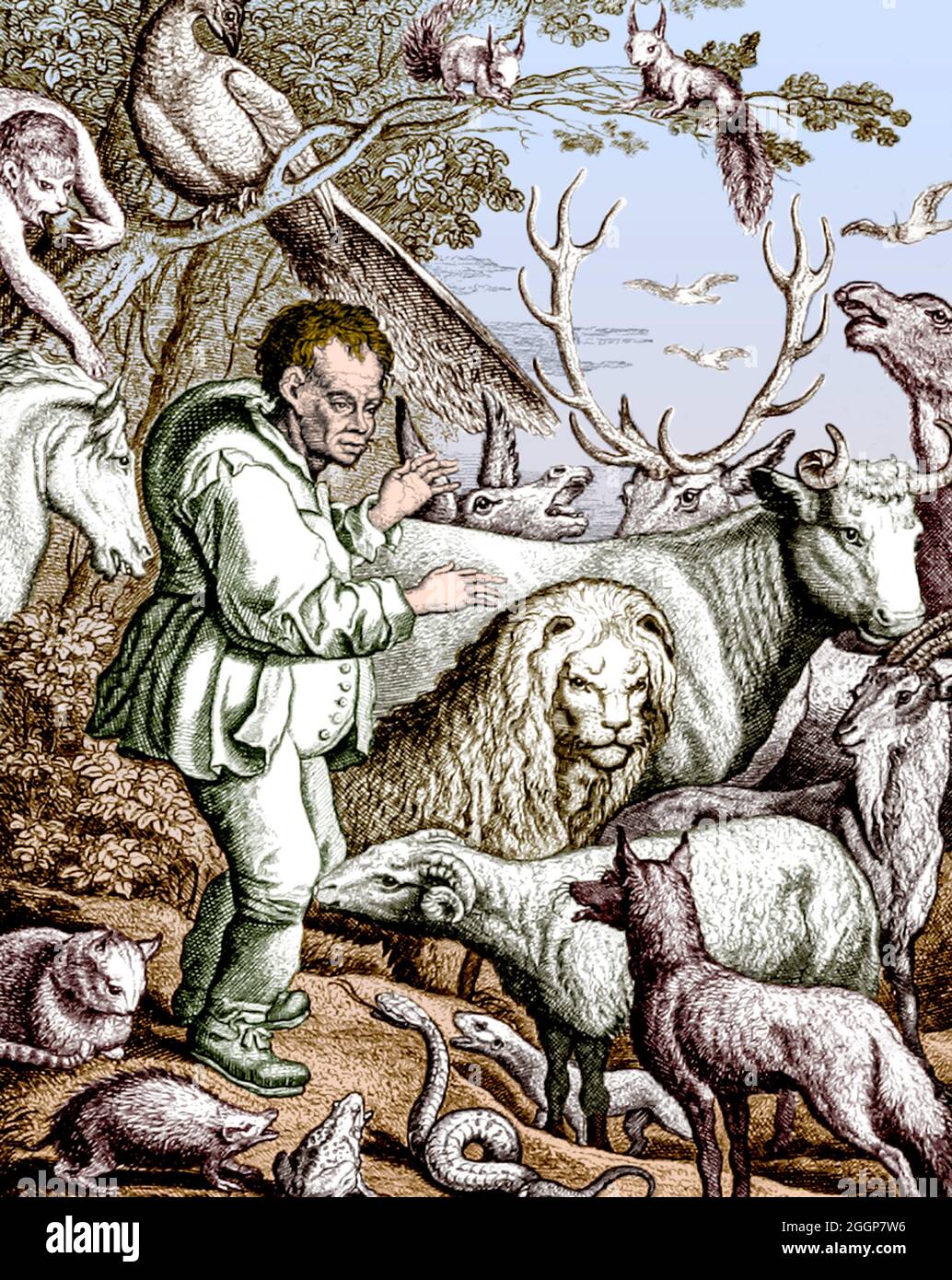 Colorized illustration of Aesop (620 - 564 BC, Greek fabulist and storyteller. Stock Photohttps://www.alamy.com/image-license-details/?v=1https://www.alamy.com/colorized-illustration-of-aesop-620-564-bc-greek-fabulist-and-storyteller-image440582834.html
Colorized illustration of Aesop (620 - 564 BC, Greek fabulist and storyteller. Stock Photohttps://www.alamy.com/image-license-details/?v=1https://www.alamy.com/colorized-illustration-of-aesop-620-564-bc-greek-fabulist-and-storyteller-image440582834.htmlRF2GGP7W6–Colorized illustration of Aesop (620 - 564 BC, Greek fabulist and storyteller.
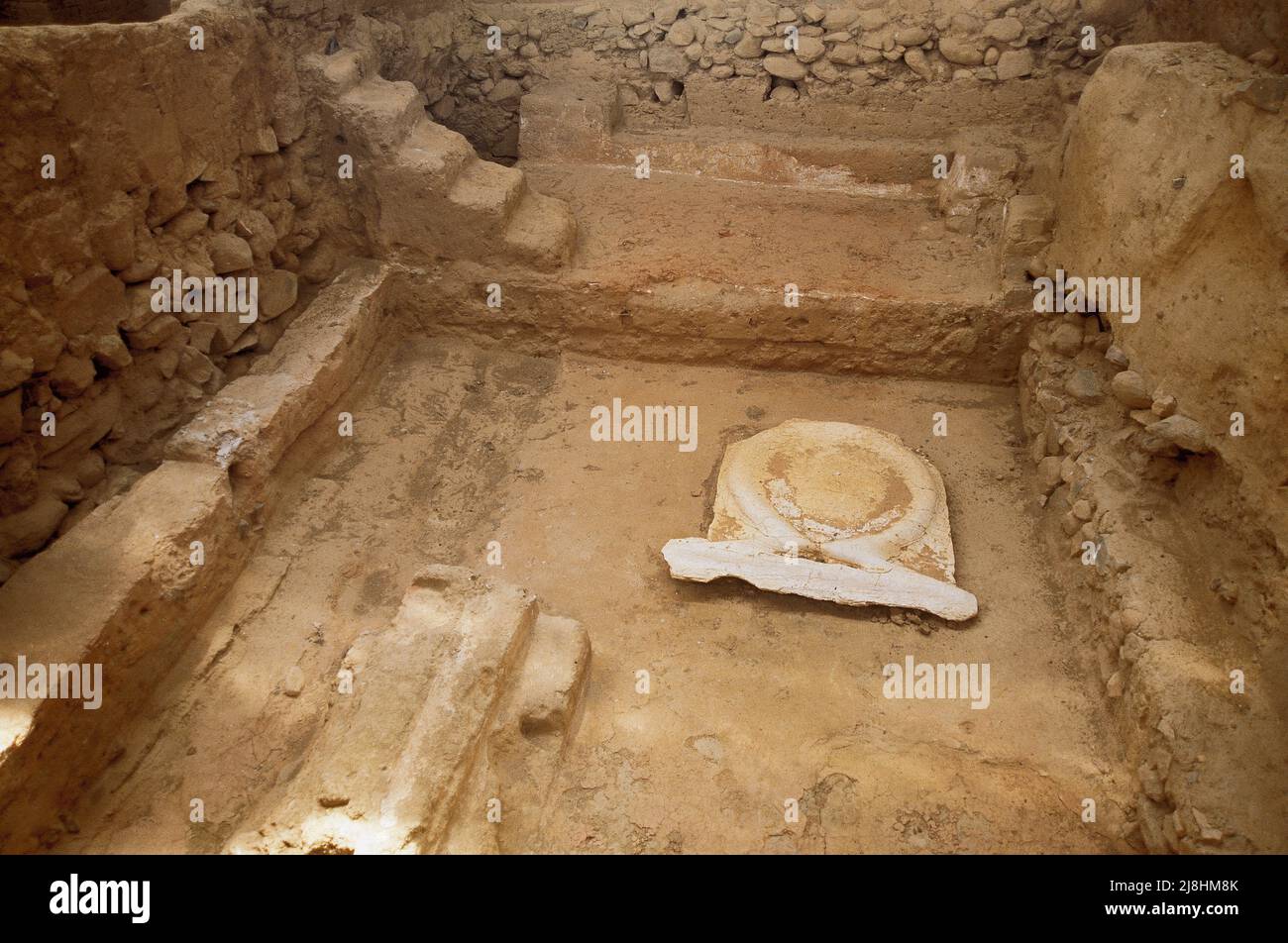 Spin, Extremadura, Zalamea de la Serena, Sanctuary of Tartessian origin. It was occupied between the 7th and 4th centuries BC. Stock Photohttps://www.alamy.com/image-license-details/?v=1https://www.alamy.com/spin-extremadura-zalamea-de-la-serena-sanctuary-of-tartessian-origin-it-was-occupied-between-the-7th-and-4th-centuries-bc-image469986291.html
Spin, Extremadura, Zalamea de la Serena, Sanctuary of Tartessian origin. It was occupied between the 7th and 4th centuries BC. Stock Photohttps://www.alamy.com/image-license-details/?v=1https://www.alamy.com/spin-extremadura-zalamea-de-la-serena-sanctuary-of-tartessian-origin-it-was-occupied-between-the-7th-and-4th-centuries-bc-image469986291.htmlRM2J8HM8K–Spin, Extremadura, Zalamea de la Serena, Sanctuary of Tartessian origin. It was occupied between the 7th and 4th centuries BC.
 Fragment of gold beltIron Age, 8th-7th century BC.Perhaps from Ziwiyeh, north-west Iran. Ibexes, stags and heads of lions appear on this fragment of gold sheet is said to come from Ziwiyeh in north-west Iran. This site is a large mountain top citadel fortified by a massive wall. The citadel is approached by a monumental staircase cut out of the rock which winds around the mountain. Stock Photohttps://www.alamy.com/image-license-details/?v=1https://www.alamy.com/stock-photo-fragment-of-gold-beltiron-age-8th-7th-century-bcperhaps-from-ziwiyeh-57345276.html
Fragment of gold beltIron Age, 8th-7th century BC.Perhaps from Ziwiyeh, north-west Iran. Ibexes, stags and heads of lions appear on this fragment of gold sheet is said to come from Ziwiyeh in north-west Iran. This site is a large mountain top citadel fortified by a massive wall. The citadel is approached by a monumental staircase cut out of the rock which winds around the mountain. Stock Photohttps://www.alamy.com/image-license-details/?v=1https://www.alamy.com/stock-photo-fragment-of-gold-beltiron-age-8th-7th-century-bcperhaps-from-ziwiyeh-57345276.htmlRMD988DG–Fragment of gold beltIron Age, 8th-7th century BC.Perhaps from Ziwiyeh, north-west Iran. Ibexes, stags and heads of lions appear on this fragment of gold sheet is said to come from Ziwiyeh in north-west Iran. This site is a large mountain top citadel fortified by a massive wall. The citadel is approached by a monumental staircase cut out of the rock which winds around the mountain.
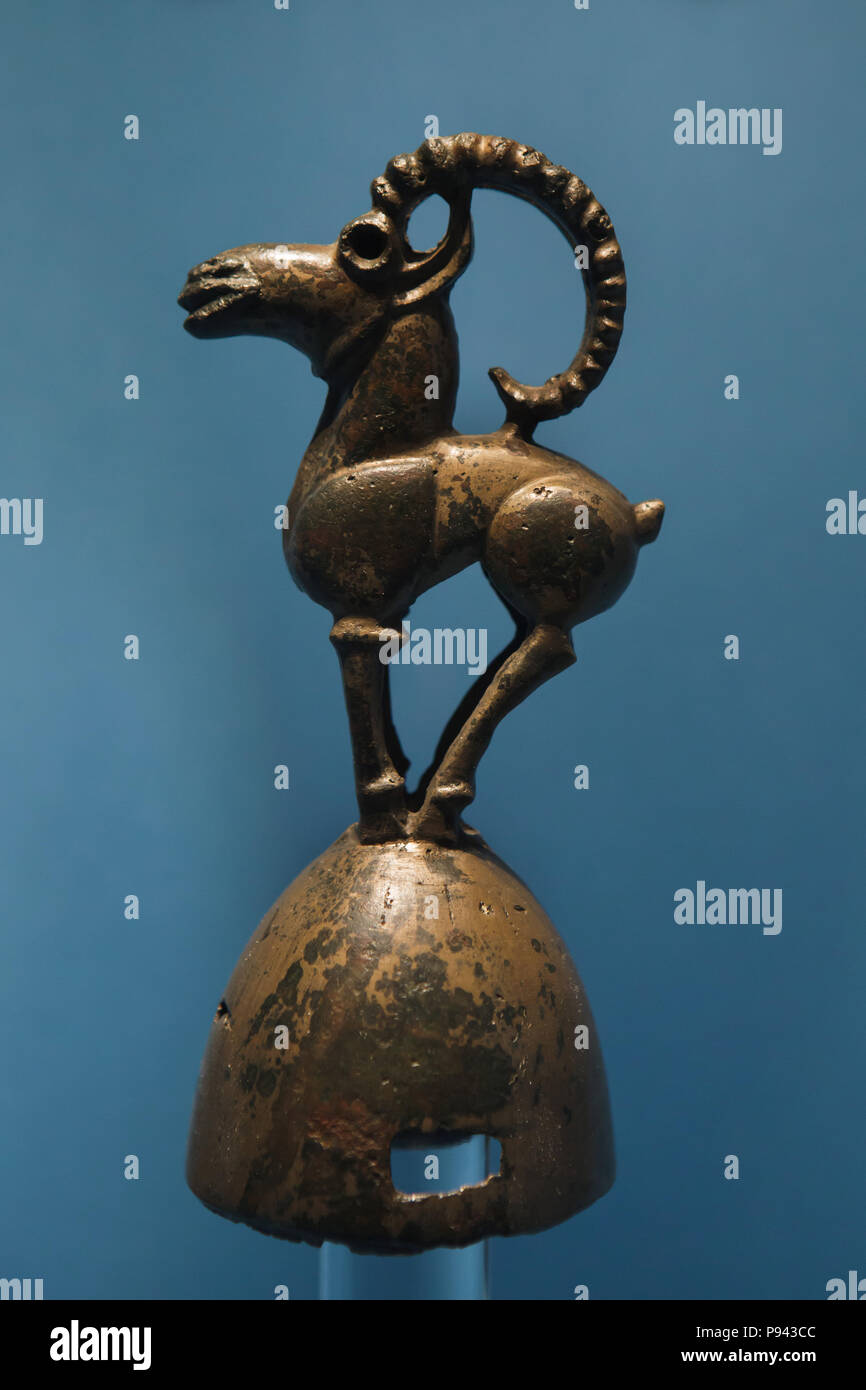 Siberian ibex (Capra sibirica) depicted on the bronze terminal of Tagar culture from Minusinsk Steppe dated from the 8th or 7th century BC on display in the Hermitage Museum in Saint Petersburg, Russia. Stock Photohttps://www.alamy.com/image-license-details/?v=1https://www.alamy.com/siberian-ibex-capra-sibirica-depicted-on-the-bronze-terminal-of-tagar-culture-from-minusinsk-steppe-dated-from-the-8th-or-7th-century-bc-on-display-in-the-hermitage-museum-in-saint-petersburg-russia-image212146828.html
Siberian ibex (Capra sibirica) depicted on the bronze terminal of Tagar culture from Minusinsk Steppe dated from the 8th or 7th century BC on display in the Hermitage Museum in Saint Petersburg, Russia. Stock Photohttps://www.alamy.com/image-license-details/?v=1https://www.alamy.com/siberian-ibex-capra-sibirica-depicted-on-the-bronze-terminal-of-tagar-culture-from-minusinsk-steppe-dated-from-the-8th-or-7th-century-bc-on-display-in-the-hermitage-museum-in-saint-petersburg-russia-image212146828.htmlRMP943CC–Siberian ibex (Capra sibirica) depicted on the bronze terminal of Tagar culture from Minusinsk Steppe dated from the 8th or 7th century BC on display in the Hermitage Museum in Saint Petersburg, Russia.